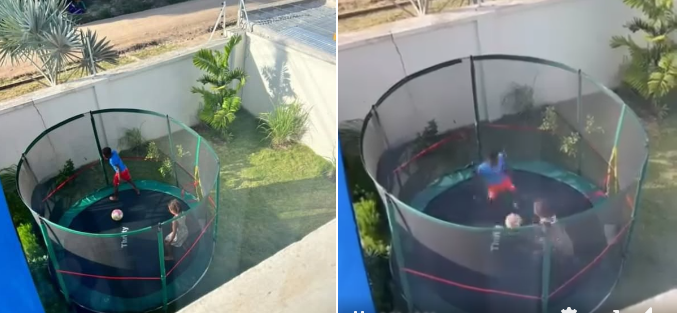
Trampoline vs Sensory Play Mats: What’s Better for Children with Autism?
Autism, Sensory Needs, and Play in Kenya In Kenya, especially within Nairobi’s growing autism support community, the conversation around sensory-friendly play equipment is expanding. For parents and therapists supporting children on the autism spectrum, two tools stand out—trampolines and sensory play mats. But when choosing between the two, which offers more value, engagement, and therapeutic […]
Read More →Where to Find the Best Trampoline for Sale in Nairobi
Nairobi’s Growing Love for Trampolines If you’ve searched for a trampoline for sale in Nairobi, you’re not alone. From Kilimani to Kahawa Sukari, Nairobi families are embracing trampolines as the ultimate blend of fun, fitness, and family bonding. Whether you’re looking to entertain kids, boost home workouts, or run a small play zone, finding the […]
Read More →
Trampolines at Weddings? How Kenyan Event Planners Are Thinking Outside the Box
A Bouncing New Trend in Kenyan Weddings From picturesque gardens in Karen to rustic venues in Naivasha, Kenyan weddings are becoming increasingly experiential. Couples want their big day to be unforgettable—not just for themselves, but for their guests too. And now, a surprising star is emerging in the world of wedding entertainment: trampolines at weddings […]
Read More →How Trampolining in Nairobi Encourages Cross-Generational Involvement
In a city where busy schedules and digital distractions often divide families, trampolining in Nairobi is emerging as an unexpected solution for cross-generational involvement. Whether bouncing for fitness, fun, or friendly competition, trampolines are bringing together parents, teens, and even grandparents in gated communities and estates across Nairobi. Call 0722724893 Visit frugalinnovations.co.ke for bulk orders, installation, and servicing. Delivery […]
Read More →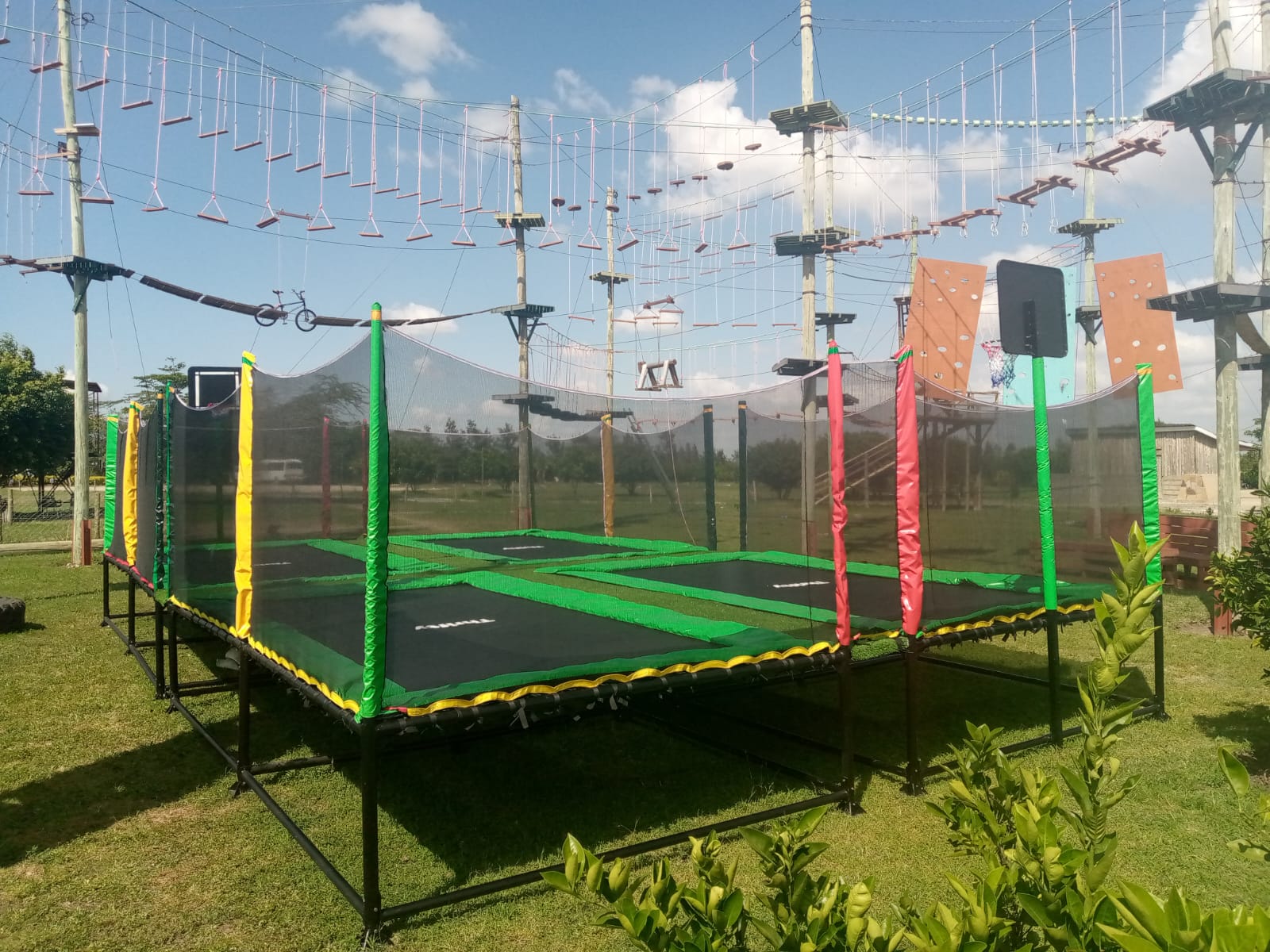
Birthday Parties on a Trampoline? Here’s How to Do It Safely and Creatively
Nairobi’s Bounciest Birthday Trend Is Here Planning a birthday party for your child, tween, or even a fitness-loving adult? Forget expensive venues—trampoline birthday parties in Nairobi are fast becoming the ultimate way to celebrate. Whether in Kilimani, Syokimau, Runda, or Rongai, Nairobi families are bouncing into fun with creative trampoline-based parties. But how do you […]
Read More →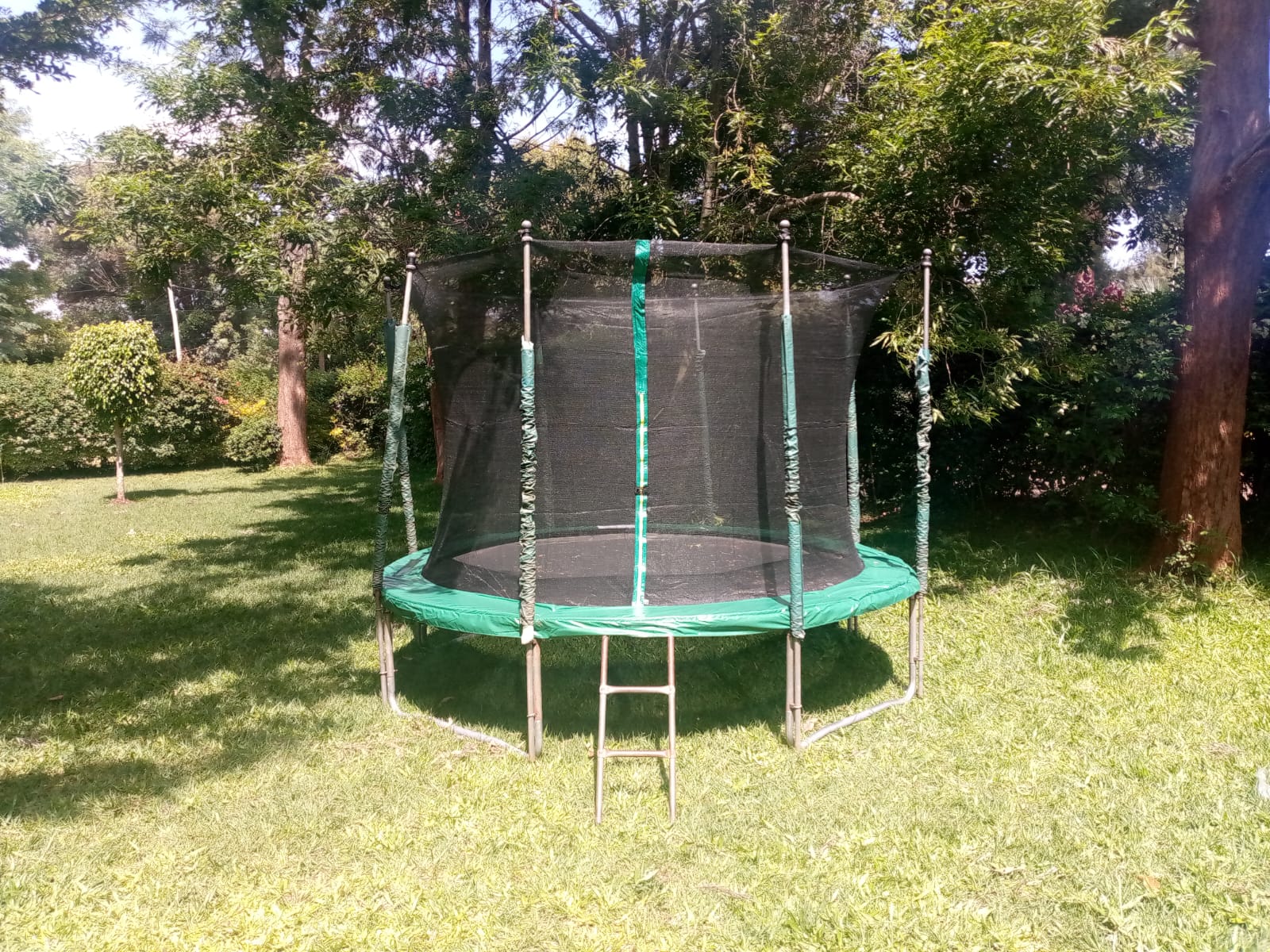
Are You Cleaning Your Trampoline Properly? What Nairobi Dust Does to Your Bounce
If you live in Nairobi and own a trampoline, you’ve probably noticed how quickly it gets dirty. From red soil to swirling estate dust, the environment can take a toll on your equipment. But here’s the big question: Are you cleaning your trampoline properly? Neglecting regular maintenance could be shortening its lifespan—and putting your kids’ […]
Read More →
Trampolines as Therapy: How Trampoline Therapy in Nairobi is Helping Children with Special Needs
A growing number of special needs schools and therapy centers are embracing trampoline therapy in Nairobi as a powerful tool for children with autism, ADHD, and sensory processing challenges. From Westlands to Lang’ata, and Karen to Kasarani, trampoline-based interventions are helping children improve balance, focus, mood regulation, and physical coordination—all while having fun. This breakthrough […]
Read More →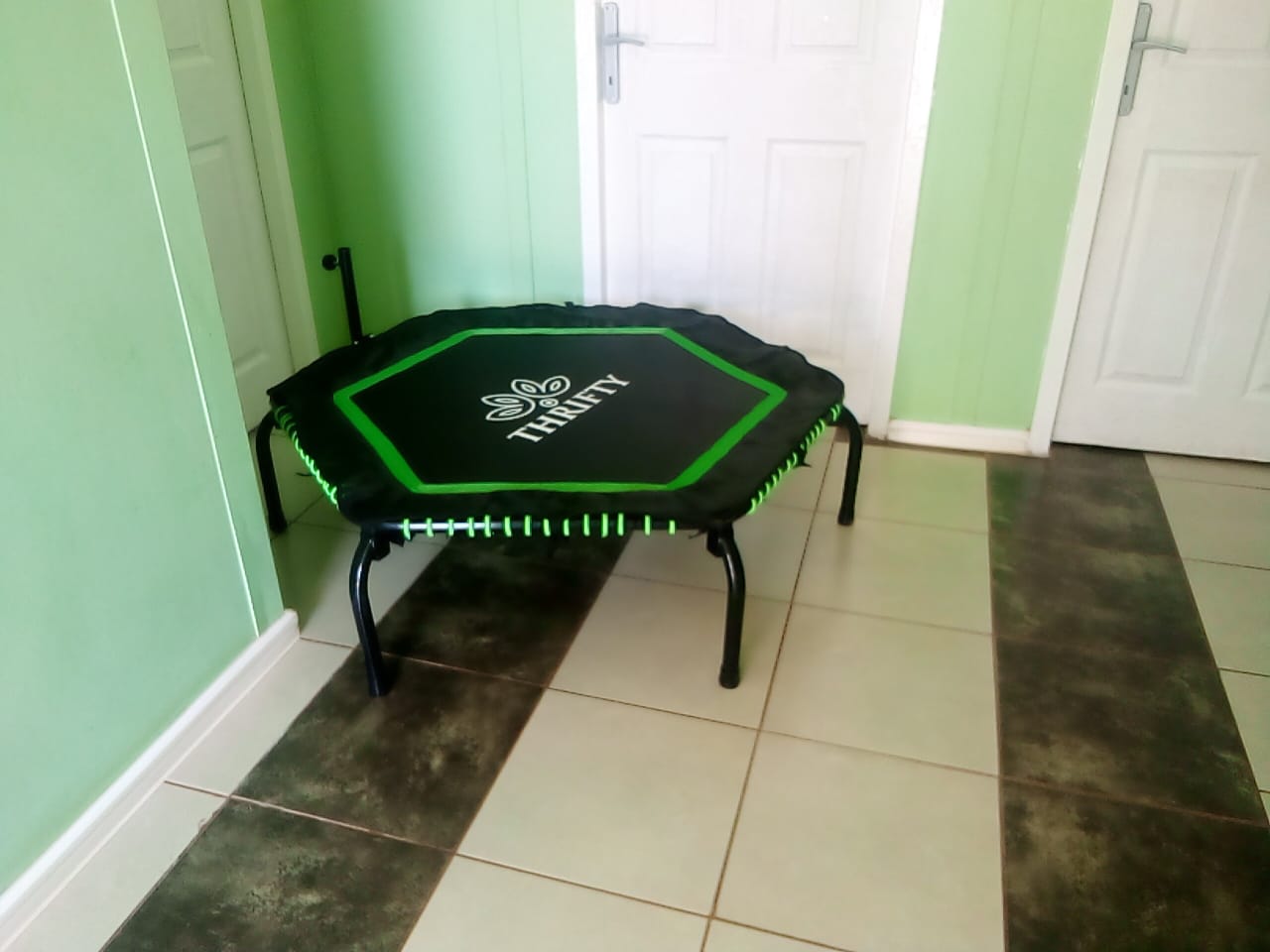
From Kitenge to Canvas: Designing African-Themed Trampoline Parks
As Nairobi’s urban spaces evolve, a new and vibrant trend is taking shape—African-themed trampoline parks. These parks are more than just places to bounce; they’re bold, cultural spaces where fitness, fun, and African identity meet. At Frugal Innovations, we believe trampolines can be more than equipment—they can be expressions of who we are. Call 0722724893 Visit frugalinnovations.co.ke for […]
Read More →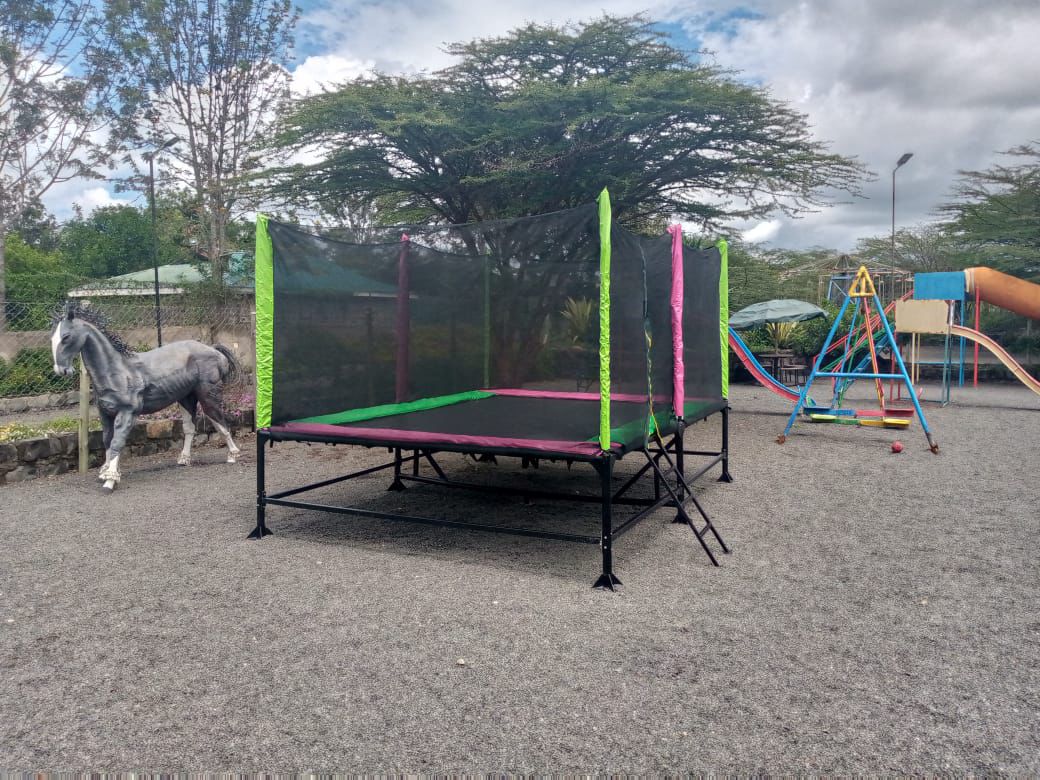
Top Birthday Party Ideas in Nairobi: Why Trampolines are a Hit in 2025
If you’re planning a birthday party this year, few ideas are as fun, active, and memorable as a trampoline party in Nairobi. In 2025, more parents are choosing trampoline-centered themes because they’re affordable, exciting, and perfect for both indoor and outdoor spaces. Whether you’re hosting the party in Kitengela, Karen, Lavington, or even on a […]
Read More →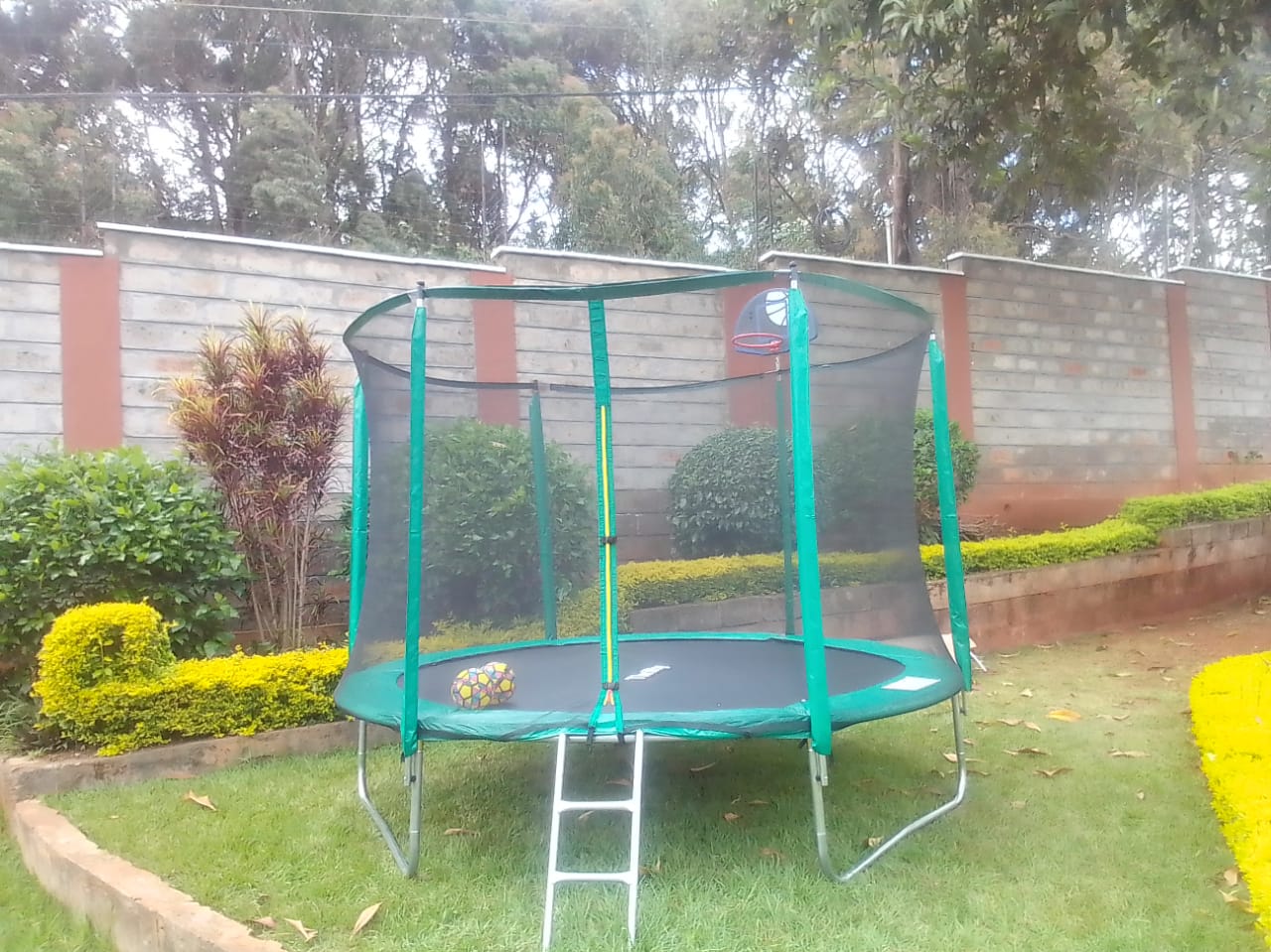
Trampolining in Nairobi: How One Nairobi Hustler Built a Trampoline Empire
Trampolining in Nairobi is no longer just a fun backyard activity—it’s becoming a serious business opportunity and a movement reshaping how local communities engage with fitness and play. From crowded estates to empty church grounds, Nairobi’s youth are finding creative ways to turn bouncing into profit, purpose, and even therapy. One inspiring story comes from […]
Read More →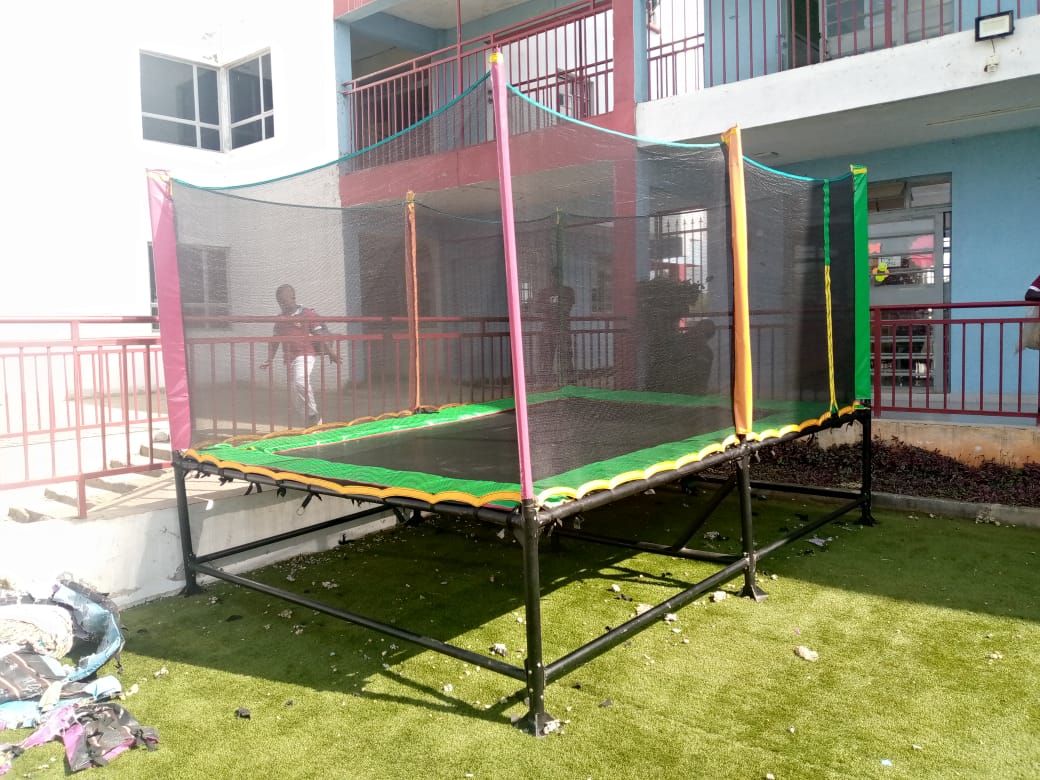
Kenyan School Holiday Guide: How to Keep Your Kids Busy with a Trampoline
When Kenyan schools close for holidays, parents face a familiar challenge: How do I keep my kids entertained, active, and off screens? The answer could be as simple—and surprisingly effective—as a backyard trampoline. In Nairobi and across Kenya, trampolines are becoming a must-have for family homes, not just for fitness or fun, but as an […]
Read More →
Why Every Major Hotel in Kenya Needs a Trampoline in Their Backyard
In today’s competitive hospitality landscape, every detail counts—especially when it comes to guest experience. From five-star resorts in Diani to boutique hotels in Karen, guests expect more than just clean sheets and free Wi-Fi. They crave memorable, fun, and wellness-focused experiences. That’s where a simple yet powerful addition comes in: a backyard trampoline. Yes, a […]
Read More →
Trampolining for Blood Pressure Management in Nairobi, Kenya: A Smart Step Toward Heart Health
The Silent Killer in the City High blood pressure—also known as hypertension—is one of the most widespread yet silent health issues affecting urban Kenyans. According to a 2023 Ministry of Health report, nearly 1 in 4 adults in Nairobi is living with elevated blood pressure, often unknowingly. Stressful city life, sedentary jobs, traffic congestion, poor […]
Read More →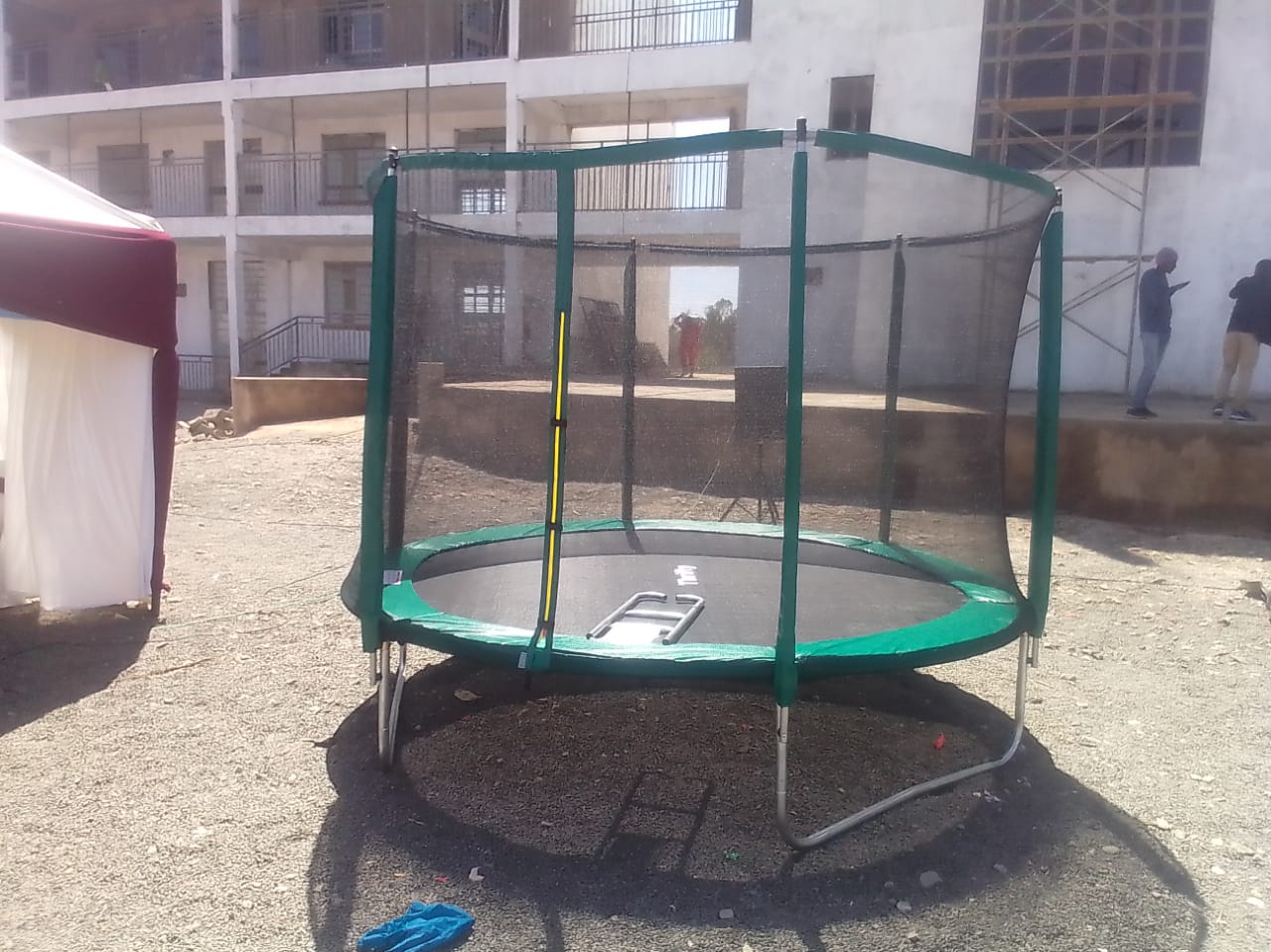
Why Trampolines for Boxer Training in Nairobi Are the Next Big Thing in Combat Conditioning
As Nairobi’s boxing scene heats up—from Kariobangi gyms to Westlands fitness centers—athletes are turning to smarter, joint-safe training methods to improve performance. One surprising tool gaining popularity is the trampoline. Once reserved for kids’ play or basic cardio, trampolines for boxer training in Nairobi are now transforming how fighters build endurance, agility, and explosive strength. […]
Read More →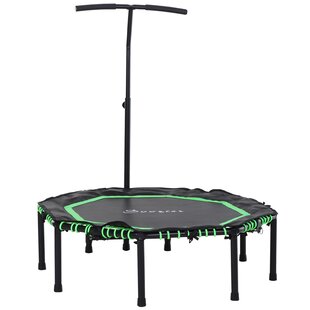
Trampolining for Exam Preparation in Nairobi: A Smart, Scientific Approach to Study Success
As students in Nairobi gear up for KCSEs, university exams, or professional certifications, they often turn to caffeine, all-nighters, and cramming marathons. But what if there were a faster, healthier, and evidence-based way to boost mental clarity, focus, and memory? Enter trampolining for exam preparation in Nairobi—a fun, low-cost fitness solution with real cognitive benefits. […]
Read More →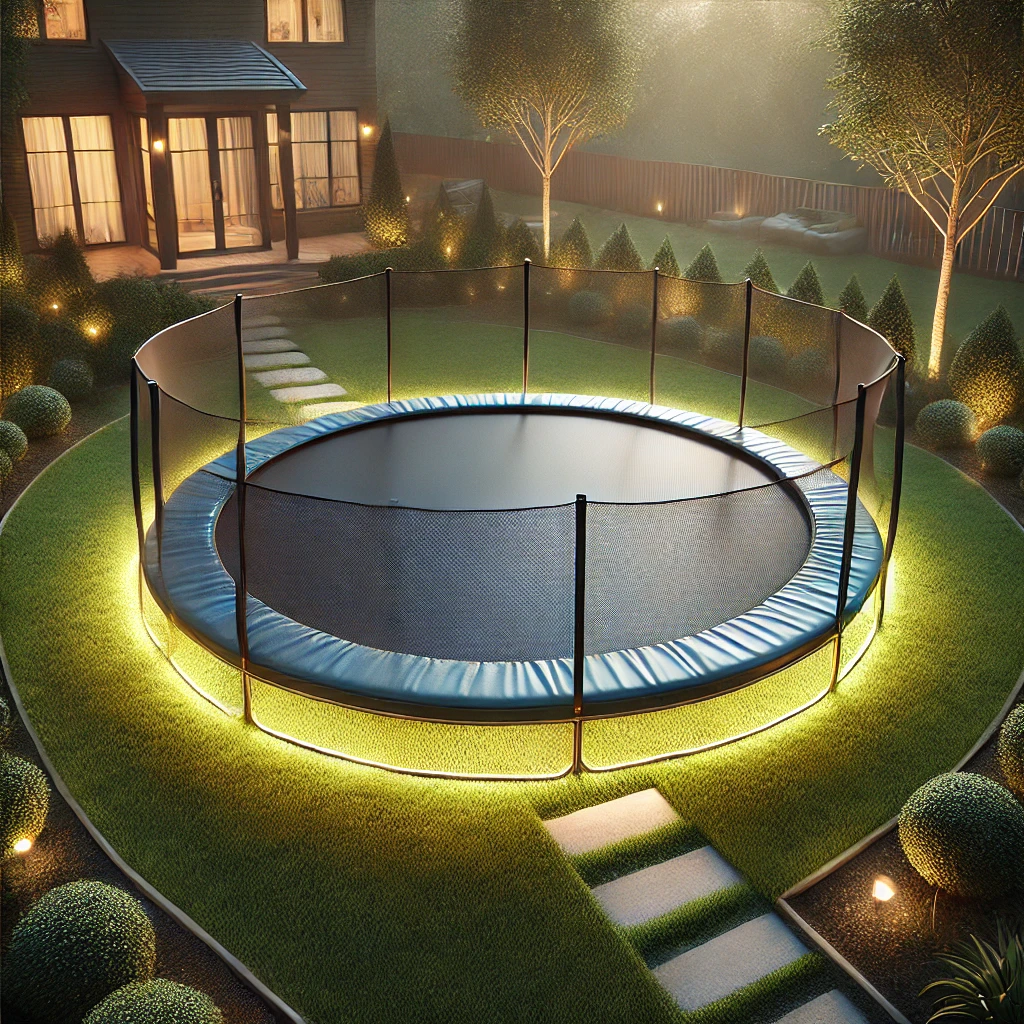
Trampoline Exercises for Seniors in Nairobi: A Smart, Safe, and Affordable Wellness Solution
In Nairobi’s fast-paced urban lifestyle, maintaining physical health as we age often feels expensive or complicated. But there’s an innovative, cost-effective trend making waves in senior wellness: trampoline exercises for seniors in Nairobi. Also known as “rebounding,” this low-impact workout is gentle on the joints, improves balance, boosts heart health, and requires only a compact, […]
Read More →
Trampoline: The Perfect Equipment for Gymnastics Enthusiasts in Nairobi
For gymnastics enthusiasts in Nairobi, finding the right equipment to build skill, strength, and agility can be a challenge. However, one tool that continues to rise in popularity is the trampoline for gymnastics in Nairobi. Whether you’re a beginner perfecting basic flips or an advanced athlete aiming to master complex aerial maneuvers, a quality trampoline […]
Read More →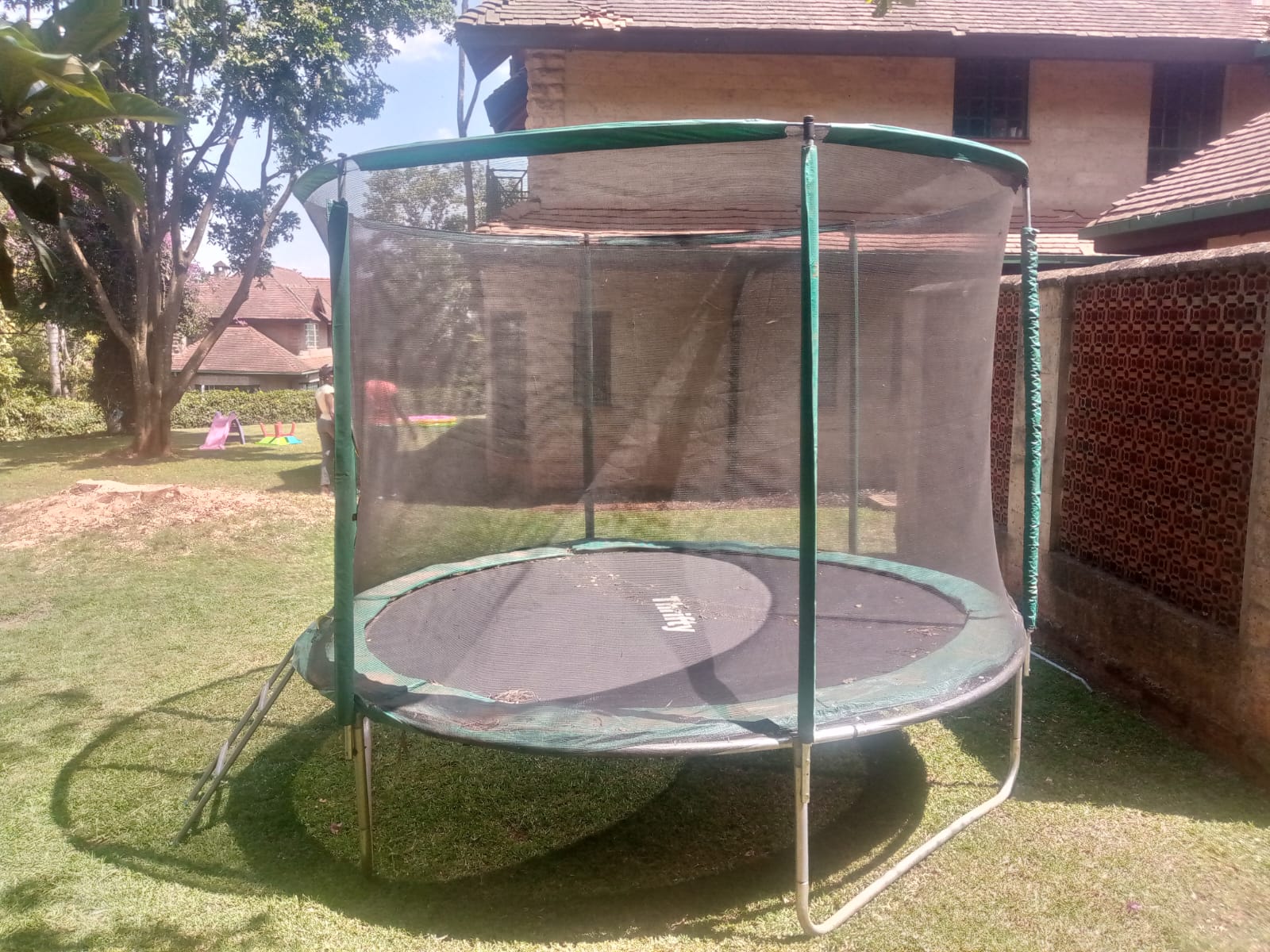
How Nairobi Churches and Youth Centers Use Trampolines for Outreach Programs
In the heart of Nairobi, where youth engagement faces increasing challenges, a creative and unexpected tool is bouncing into the spotlight—trampolines in Nairobi Kenya. Once thought of as mere backyard toys, trampolines are now playing a powerful role in youth ministry and outreach programs across the city. Churches and community centers are turning to this […]
Read More →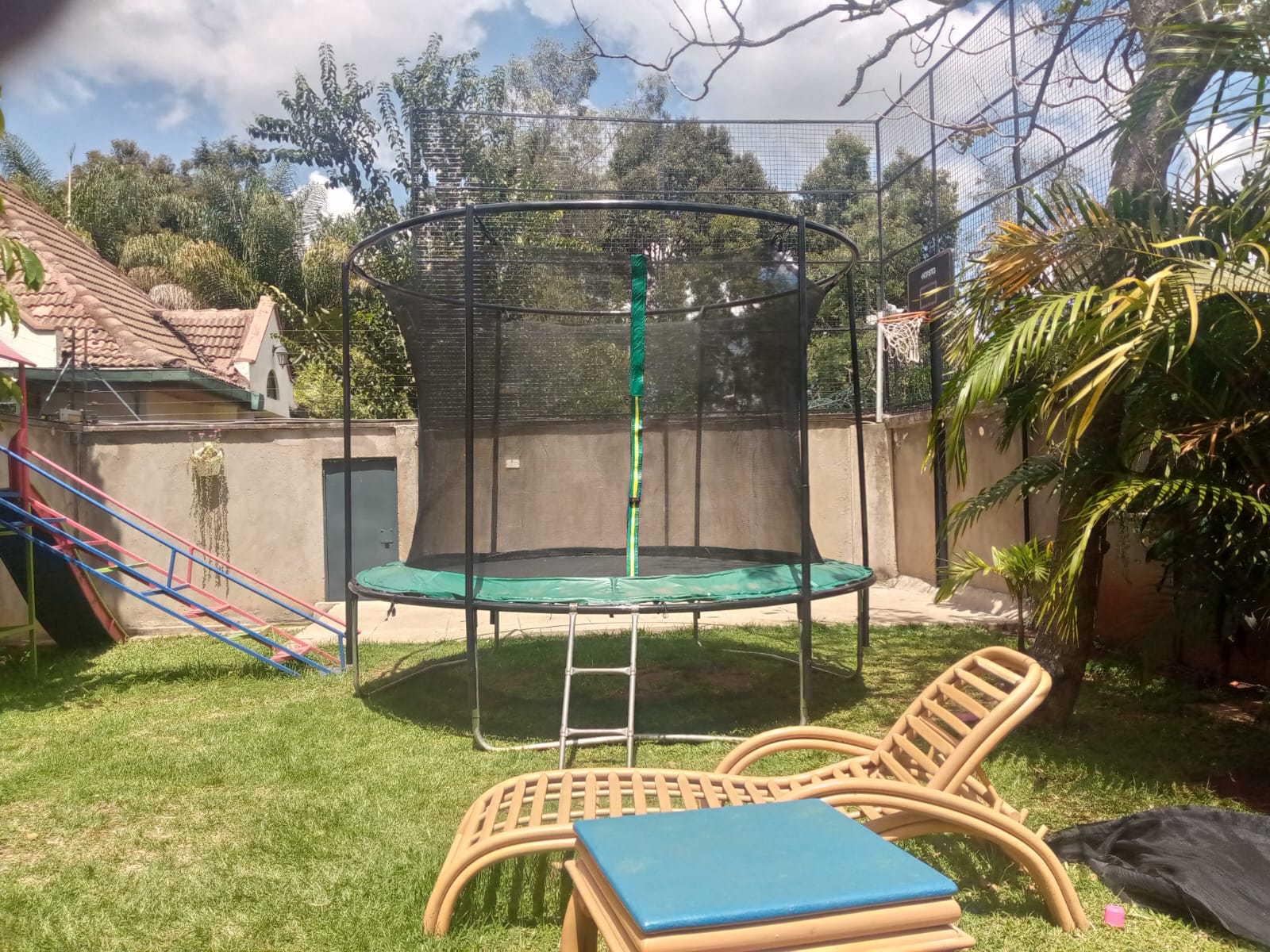
How Nairobi Estates Are Embracing Shared Trampoline Spaces for Kids
In recent years, Nairobi estates have witnessed a quiet revolution in how families think about children’s recreation. As urban spaces grow tighter and private yards become a luxury, shared trampoline spaces have emerged as the latest attraction in community play areas. These installations are not just about fun—they reflect a broader shift toward safer, inclusive, […]
Read More →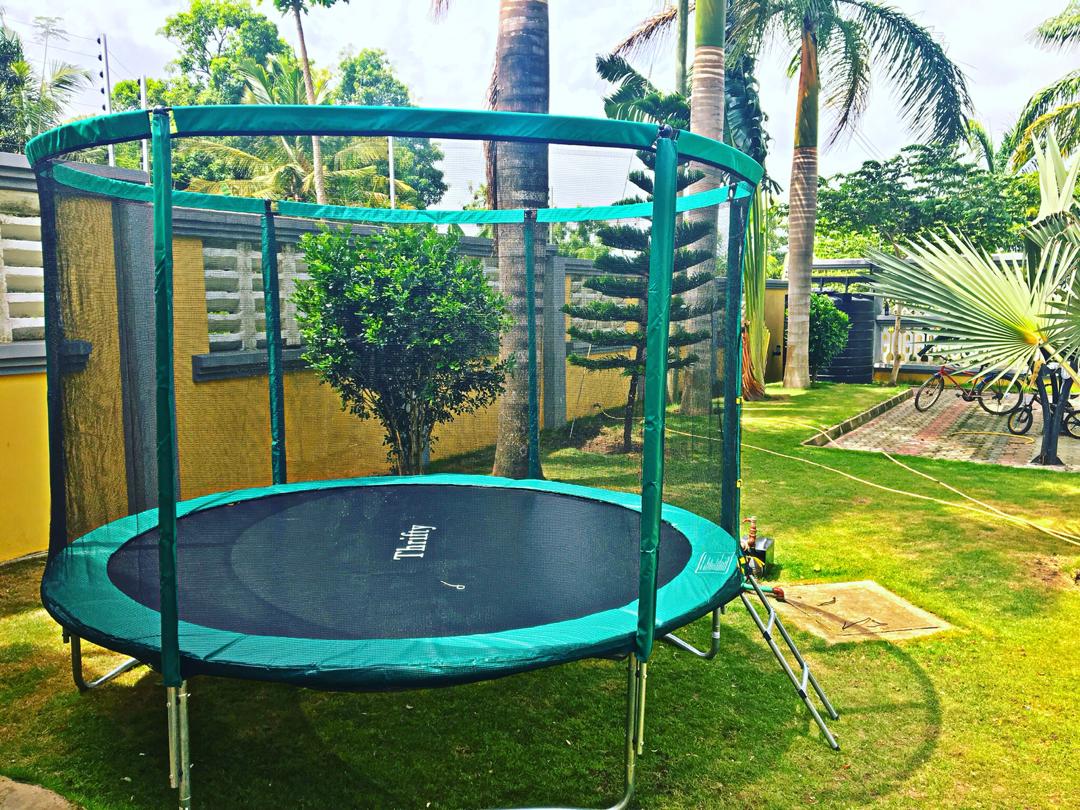
How Trampolines Enhance Endurance and Boost Athletic Performance in Nairobi
Athletes in Nairobi and across Kenya are constantly seeking innovative ways to improve their endurance and overall performance. One emerging fitness tool gaining popularity is the trampoline. More than just a fun recreational activity, trampoline training in Nairobi offers numerous benefits that help athletes reach their peak. Visit our shop HERE to explore all our products To […]
Read More →How to Start a Profitable Trampolining Business in Nairobi, Kenya
In Nairobi’s rapidly growing suburbs and middle-class estates, families are constantly on the lookout for fun, affordable, and safe entertainment for their kids. That’s where a trampoline business in Nairobi comes in — a low-barrier, high-potential opportunity that’s turning backyards into cash cows. Whether you’re looking for a weekend side hustle or a scalable kids […]
Read More →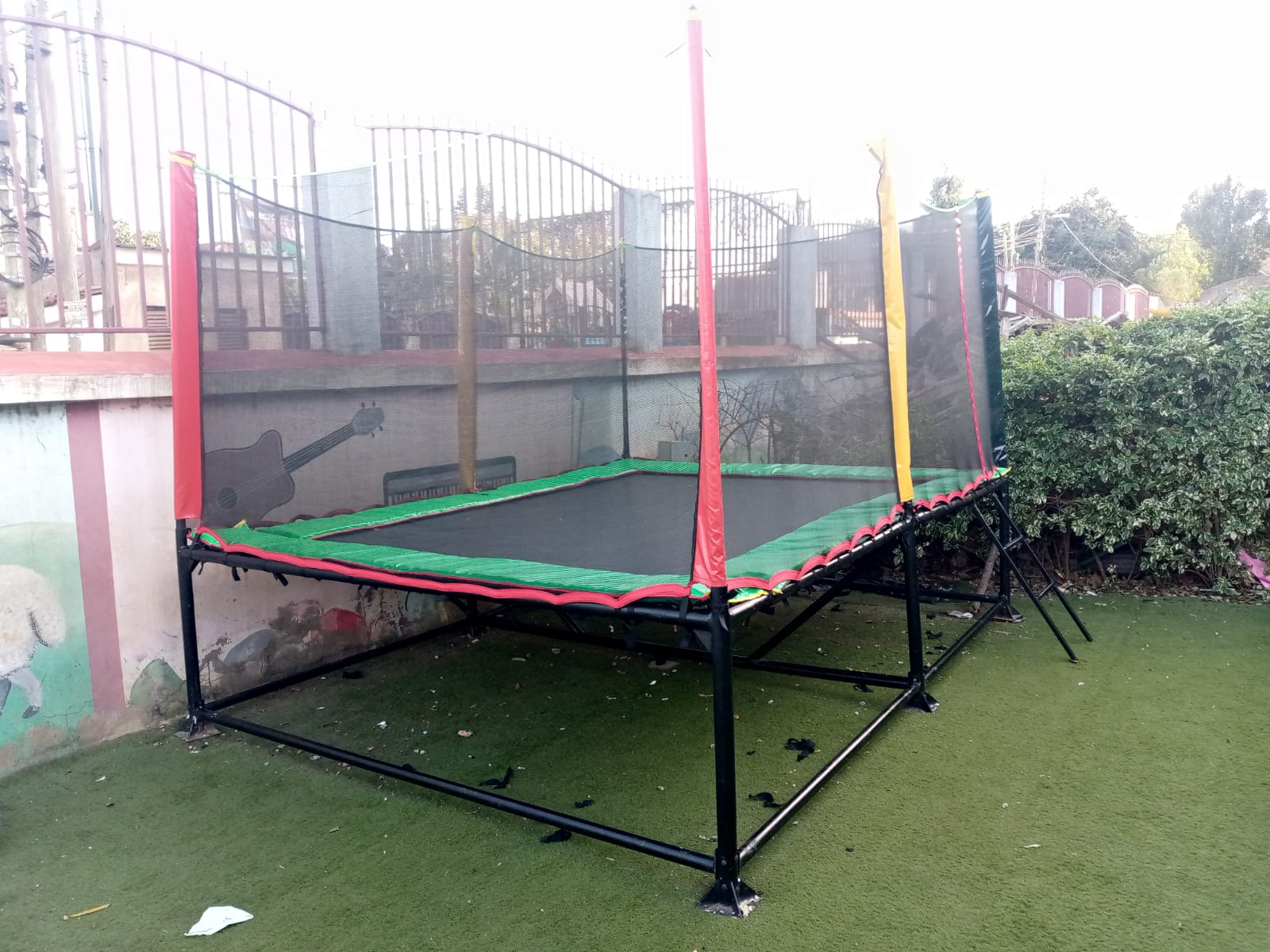
Buy Trampoline Nairobi: What to Know Before You Invest
Buy Trampoline Nairobi: What to Know Before You Invest Trampolines are fast becoming a fixture in Nairobi homes, schools, and event setups. Whether it’s for your children’s fun, family fitness, or party rentals, many city residents are exploring how to buy trampoline Nairobi options that suit their space, budget, and safety needs. But before making […]
Read More →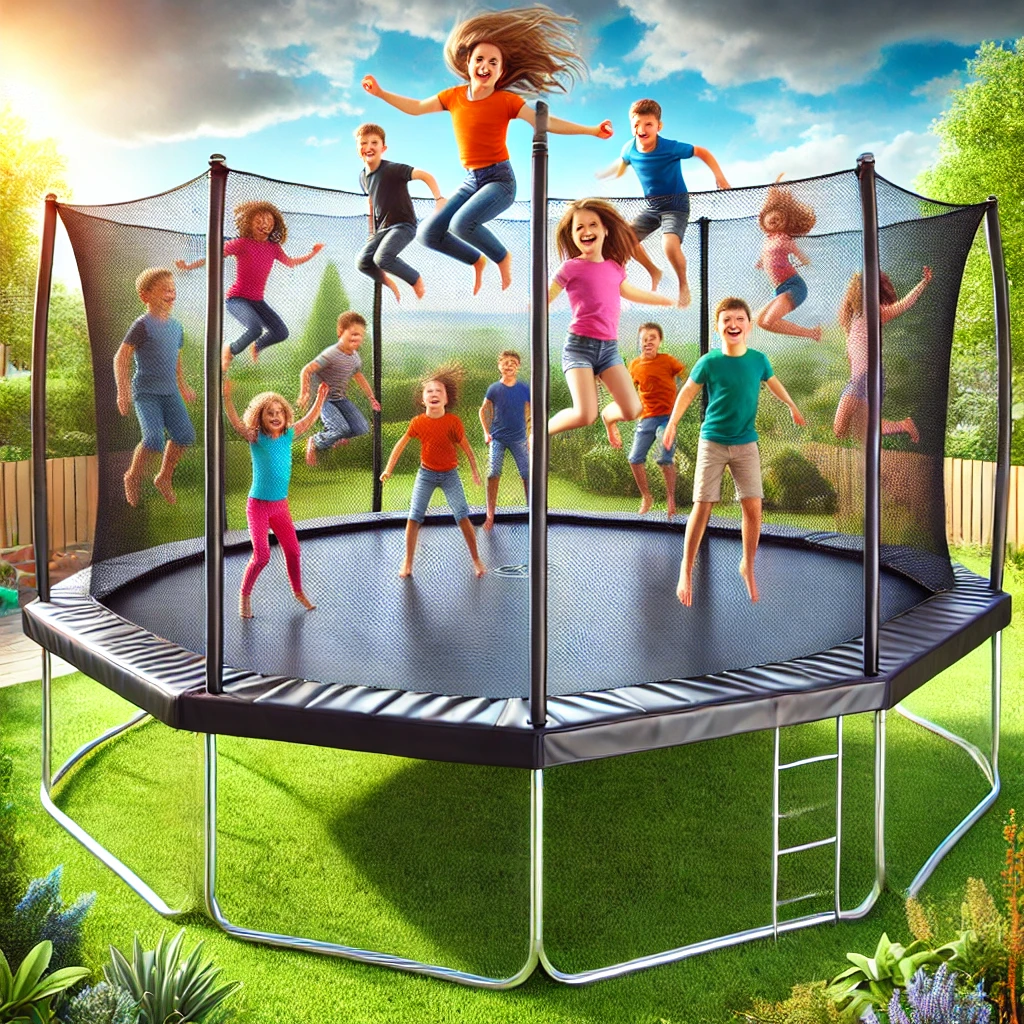
Can a Trampoline for Teens in Nairobi Help Fight Boredom and Bad Choices?
In many Nairobi neighborhoods—from Kayole to Karen—teens spend long afternoons with nothing to do. Limited public spaces, expensive sports clubs, and growing screen addiction leave young people idle. And boredom isn’t harmless. It can push teens into risky behaviors like drug use, crime, or unhealthy relationships. But could a trampoline—yes, a simple backyard trampoline—be part […]
Read More →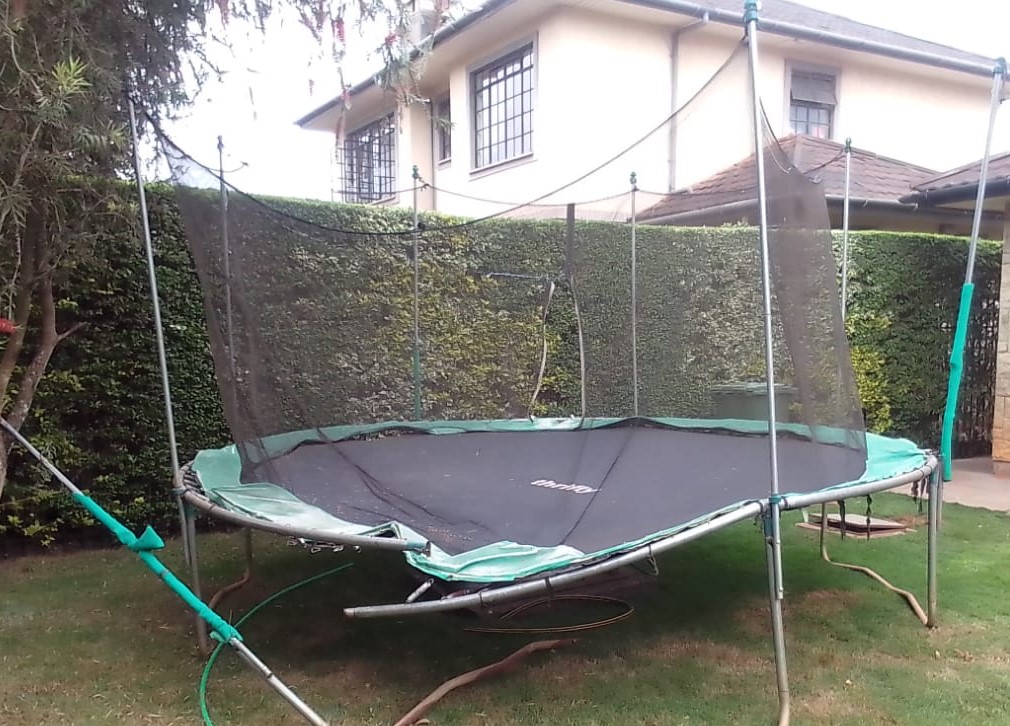
What Happens to Very Old Trampolines in Nairobi? The Scrap Yard Truth
In Nairobi’s ever-adaptive secondhand economy, almost nothing truly goes to waste. From repurposed car parts to refurbished electronics, discarded items find new life in the city’s dynamic scrap metal and jua kali markets. But what about leisure equipment like trampolines? As their popularity grows in estates and schools across the city, a question quietly emerges: […]
Read More →Solar-Powered Inflatable Trampolines for Nairobi’s Outskirts: Innovation for Play Where Power is Scarce
In the fast-growing outskirts of Nairobi—areas like Kajiado North, Githurai, and parts of Ngong or Ruai—access to stable infrastructure remains a challenge. Electricity is often intermittent, playgrounds are rare, and safe recreational spaces for children are even scarcer. But what if a playful bounce could offer both relief and innovation? That’s the promise behind solar-powered […]
Read More →Trampoline Fitness for Working Mums in Nairobi: The New Home Workout Craze
In the ever-busy lifestyle of Nairobi’s working mothers—where Zoom meetings, school runs, and home chores all collide—finding time for personal wellness is no small feat. But now, a growing number of women are embracing a fun, effective, and surprisingly convenient solution: trampoline fitness for working mums in Nairobi. More than just child’s play, trampolines—particularly small […]
Read More →
Social Trampolining: How Nairobi Youth Are Turning Bounce Challenges into TikTok Gold
In Nairobi’s fast-evolving youth culture, trampolines have leapt beyond backyard toys into the spotlight of digital creativity. A new trend known as social trampolining Nairobi is reshaping how local content creators, influencers, and teens engage with fitness, friendship, and fame. Through high-flying flips, bounce challenges, and dance routines set to trending audio, Nairobi’s youth are […]
Read More →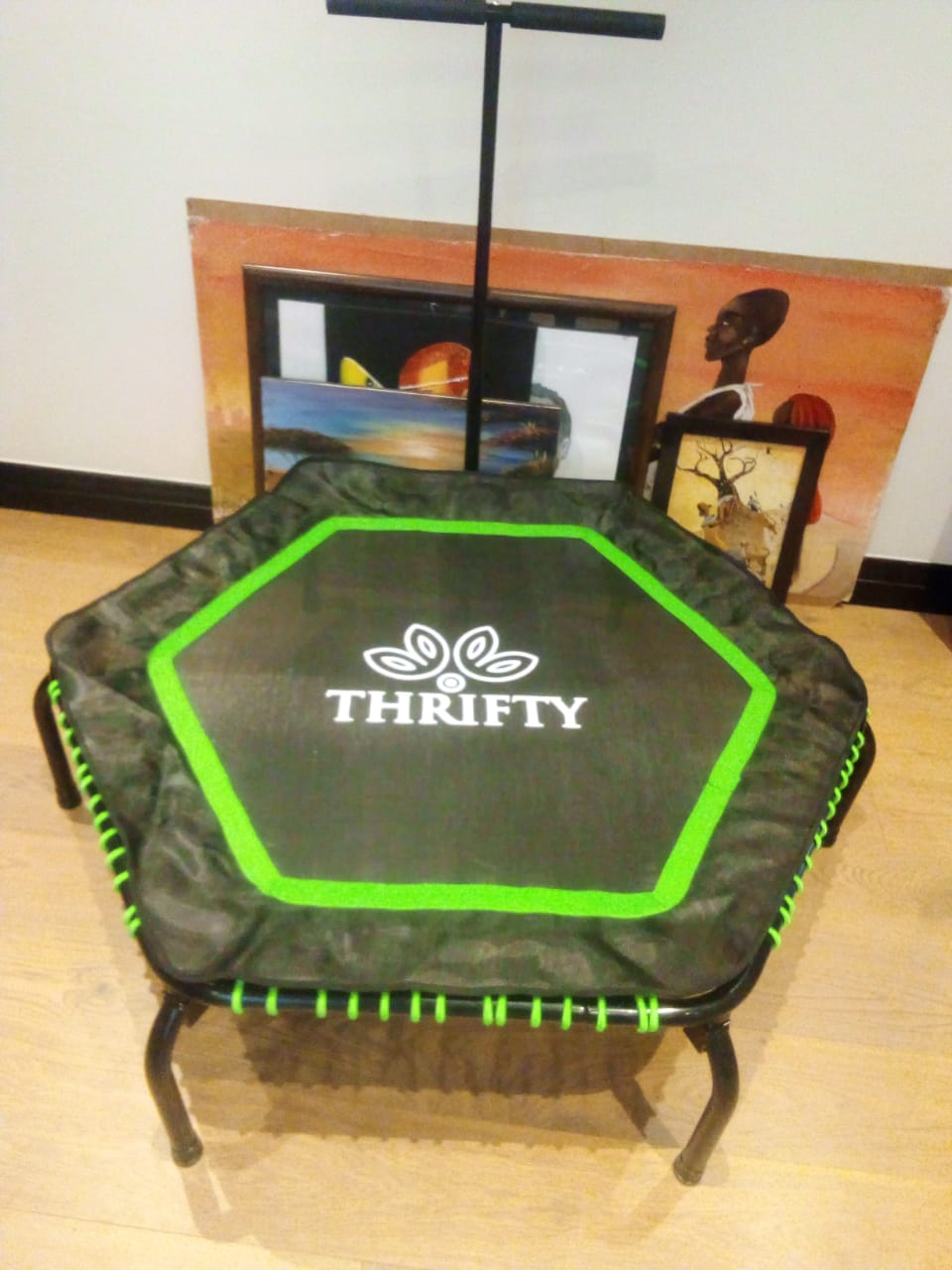
Bouncing Back: How Trampolines Help in Postpartum Recovery Workouts
Childbirth is one of the most physically demanding experiences a woman can go through. In Kenya, like in many parts of the world, postpartum recovery is often underestimated, with limited focus on holistic fitness for new mothers. However, a surprising tool is gaining popularity among fitness-conscious Kenyan mums: the mini trampoline. Research reveals that postpartum […]
Read More →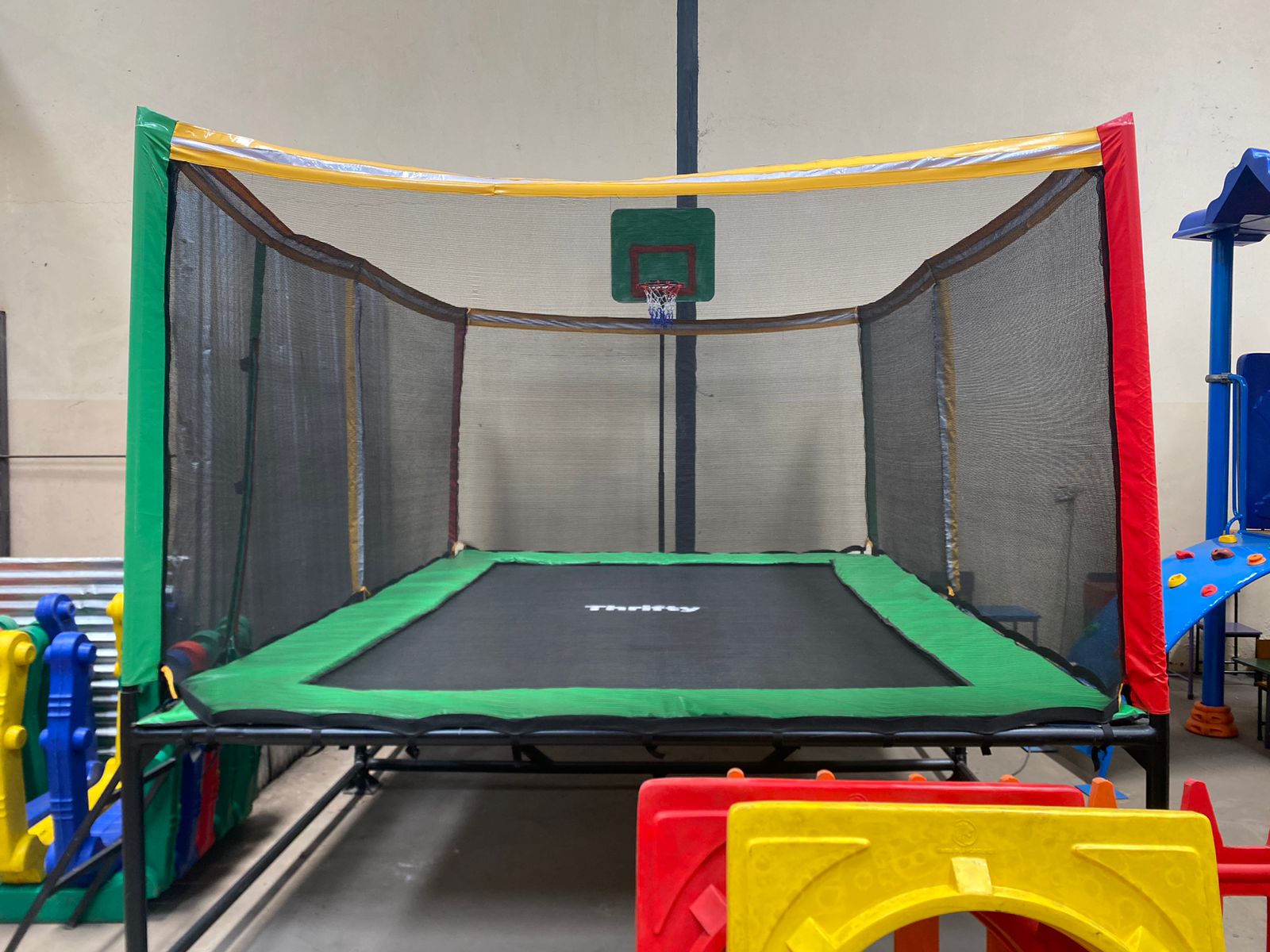
Trampolining Meets Afrobeat: Trampoline Fitness Classes in Kenya
Move over Zumba—there’s a new rhythm pulsing through Kenyan gyms, and it’s got people bouncing to the beat. Trampoline fitness classes in Kenya, especially those powered by Afrobeat music, are quickly becoming the go-to workout for fitness lovers looking for fun, low-impact, and calorie-torching routines. At the intersection of dance, cardio, and core training, these […]
Read More →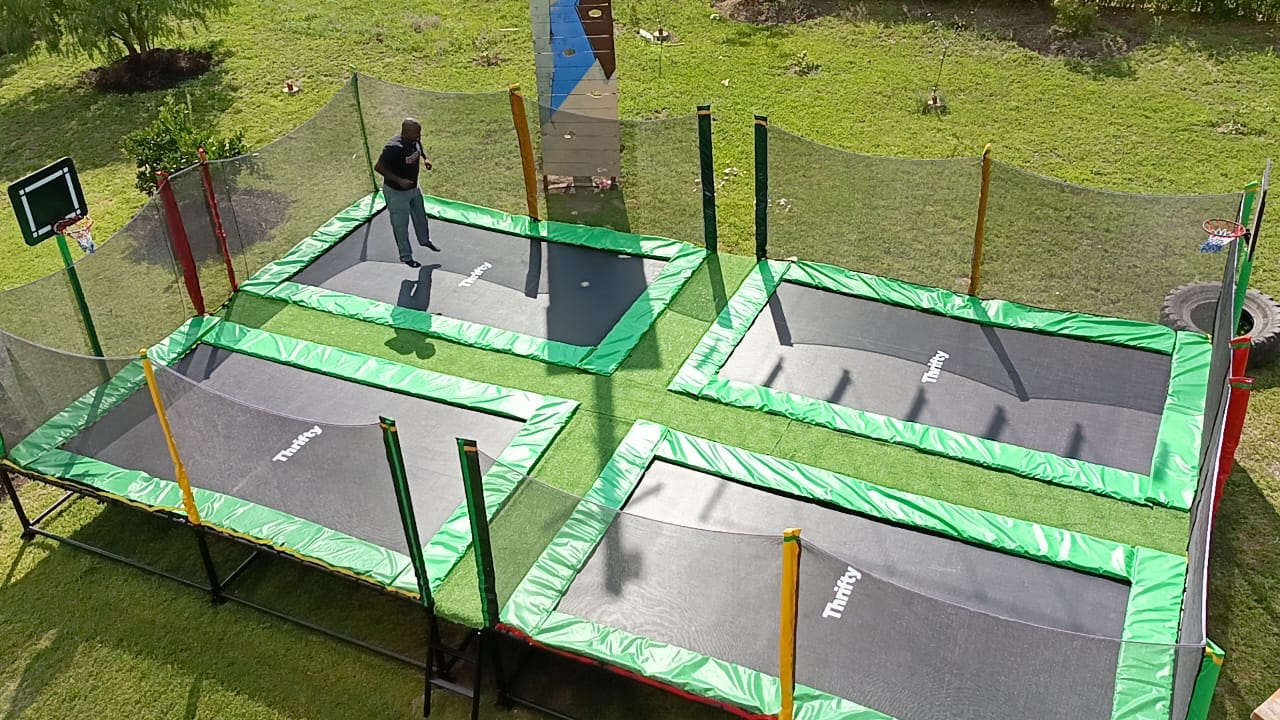
Trampolines for Public Institutions in Nairobi Kenya
In today’s evolving public service landscape, public institutions in Nairobi, Kenya are being called upon to deliver holistic services that support not just productivity, but also community health, youth development, and mental well-being. One surprisingly powerful and cost-effective tool is rising to meet this need: the trampoline. Far from being just a recreational item, trampolines […]
Read More →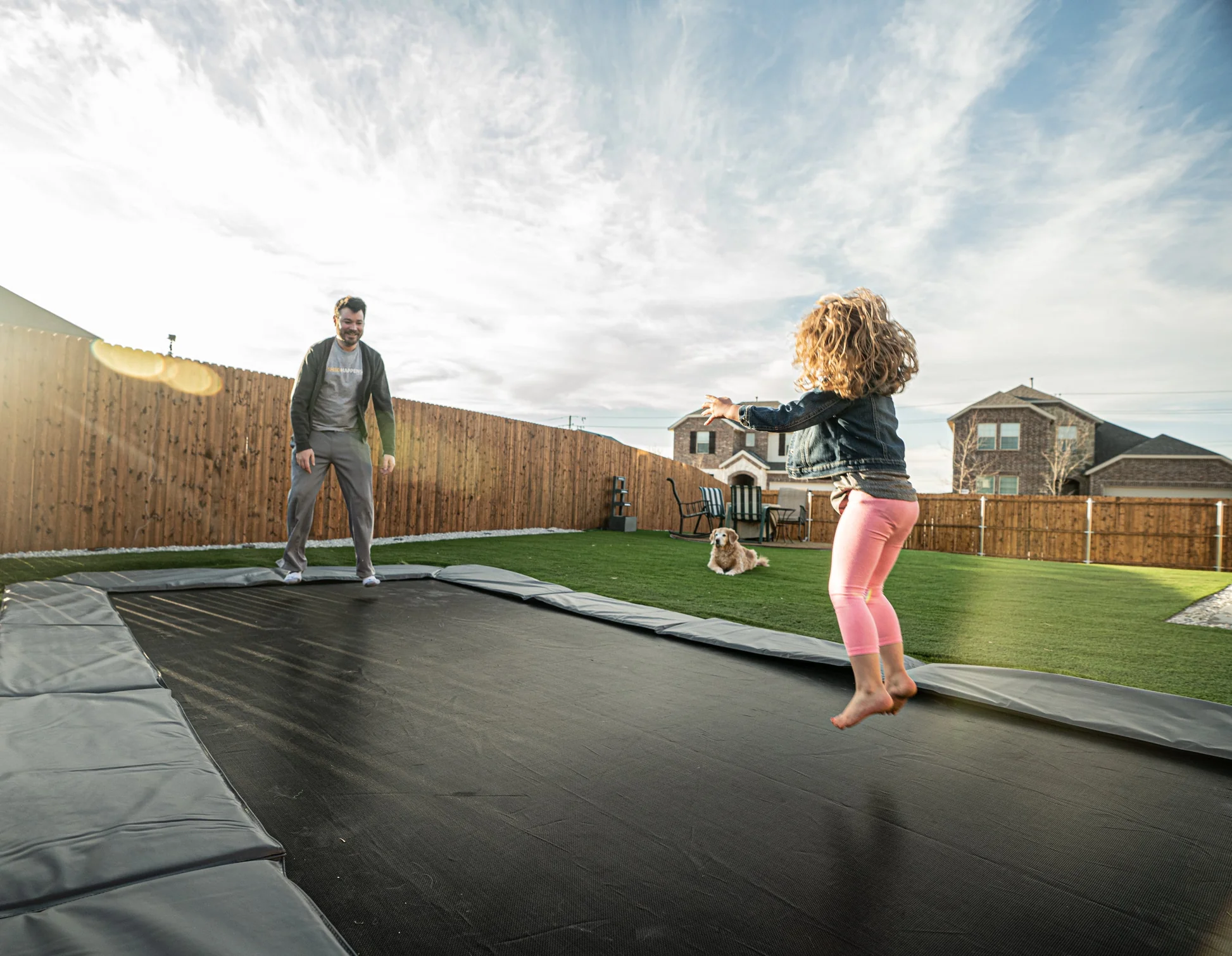
Trampolining for Autistic Children
For children on the autism spectrum, engaging in traditional physical activities can be overwhelming due to sensory sensitivities, coordination difficulties, or communication challenges. That’s where trampolining for autistic children offers a game-changing solution — combining sensory regulation, motor development, and emotional wellness in one fun activity. In Nairobi, more therapists, schools, and parents are integrating […]
Read More →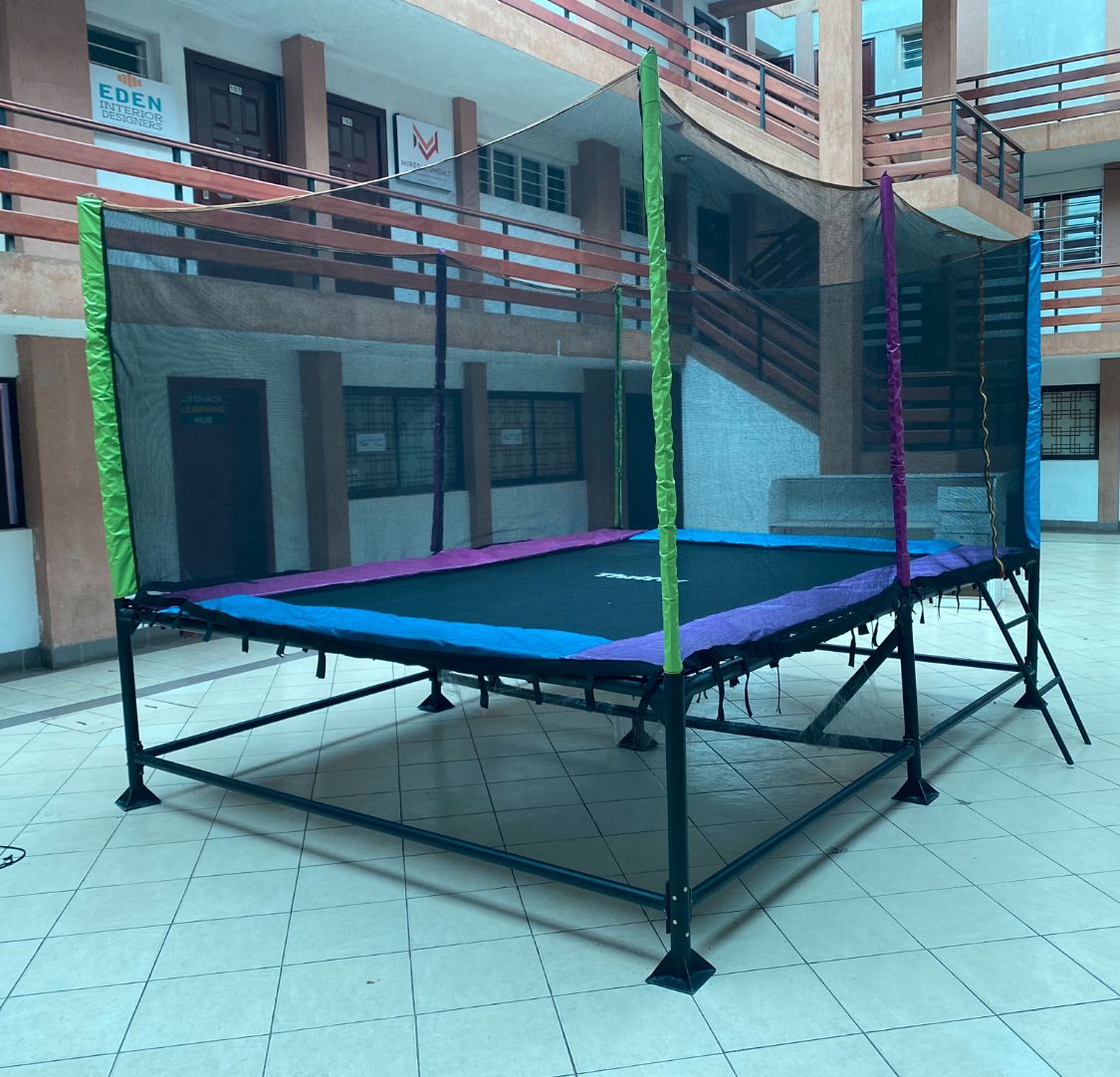
Trampolining for Health in Nairobi: Lymphatic drainage and Immunity
In recent years, trampolining for health in Nairobi has gained popularity not only for fitness but also for its therapeutic effects. Among these benefits, its role in improving lymphatic drainage and detoxification stands out. As more residents explore holistic health options, especially those that can be practiced at home or in fitness centers, trampolines for […]
Read More →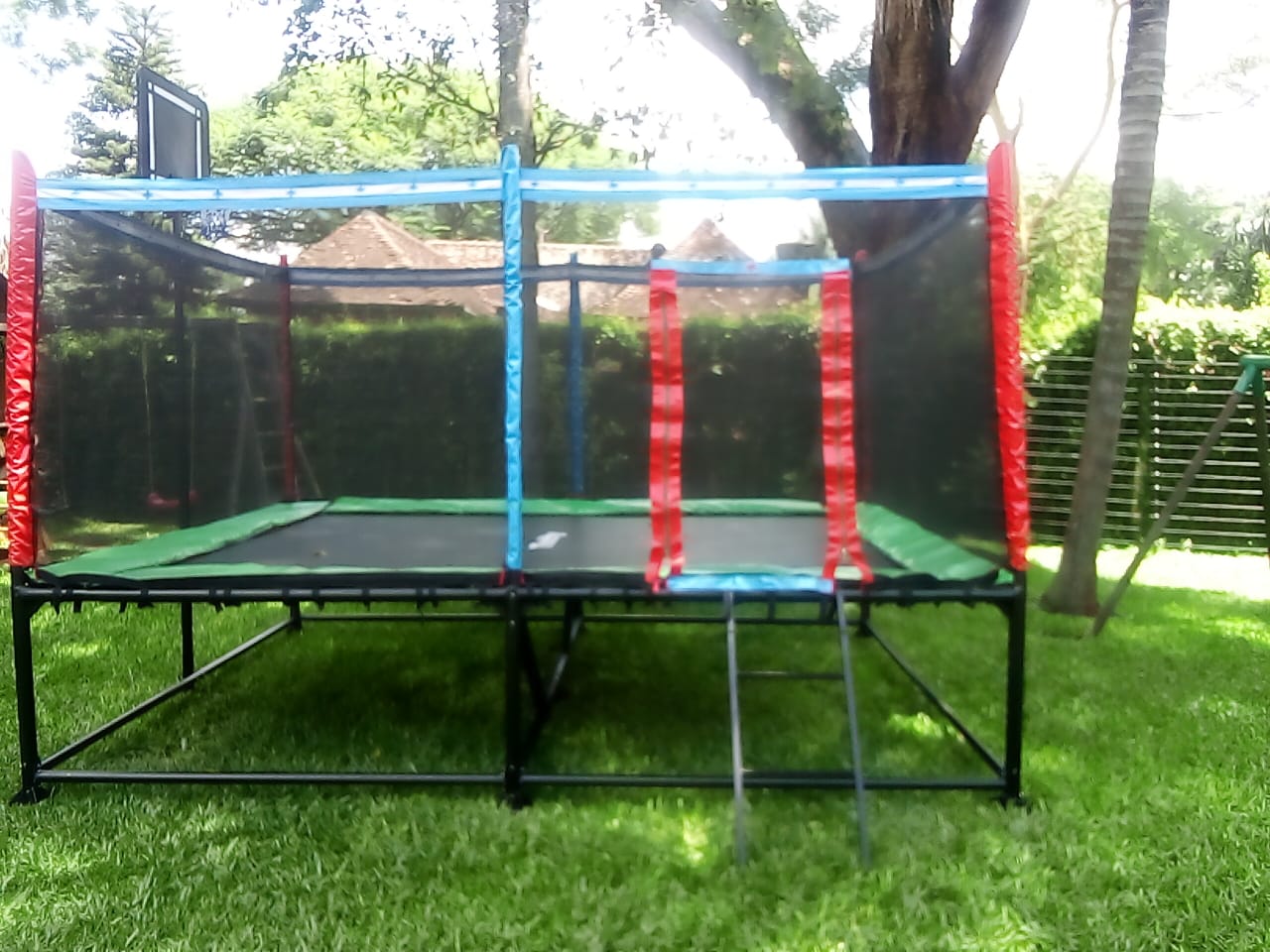
Trampolining and Weight Loss in Nairobi Kenya
Trampolining and weight loss go hand in hand, offering a fun, low-impact, and highly effective workout for individuals looking to shed extra pounds. Unlike traditional exercises, trampolining provides a full-body workout that burns calories, boosts metabolism, and strengthens muscles while being easy on the joints. In Nairobi, Kenya, where fitness trends are evolving, more people […]
Read More →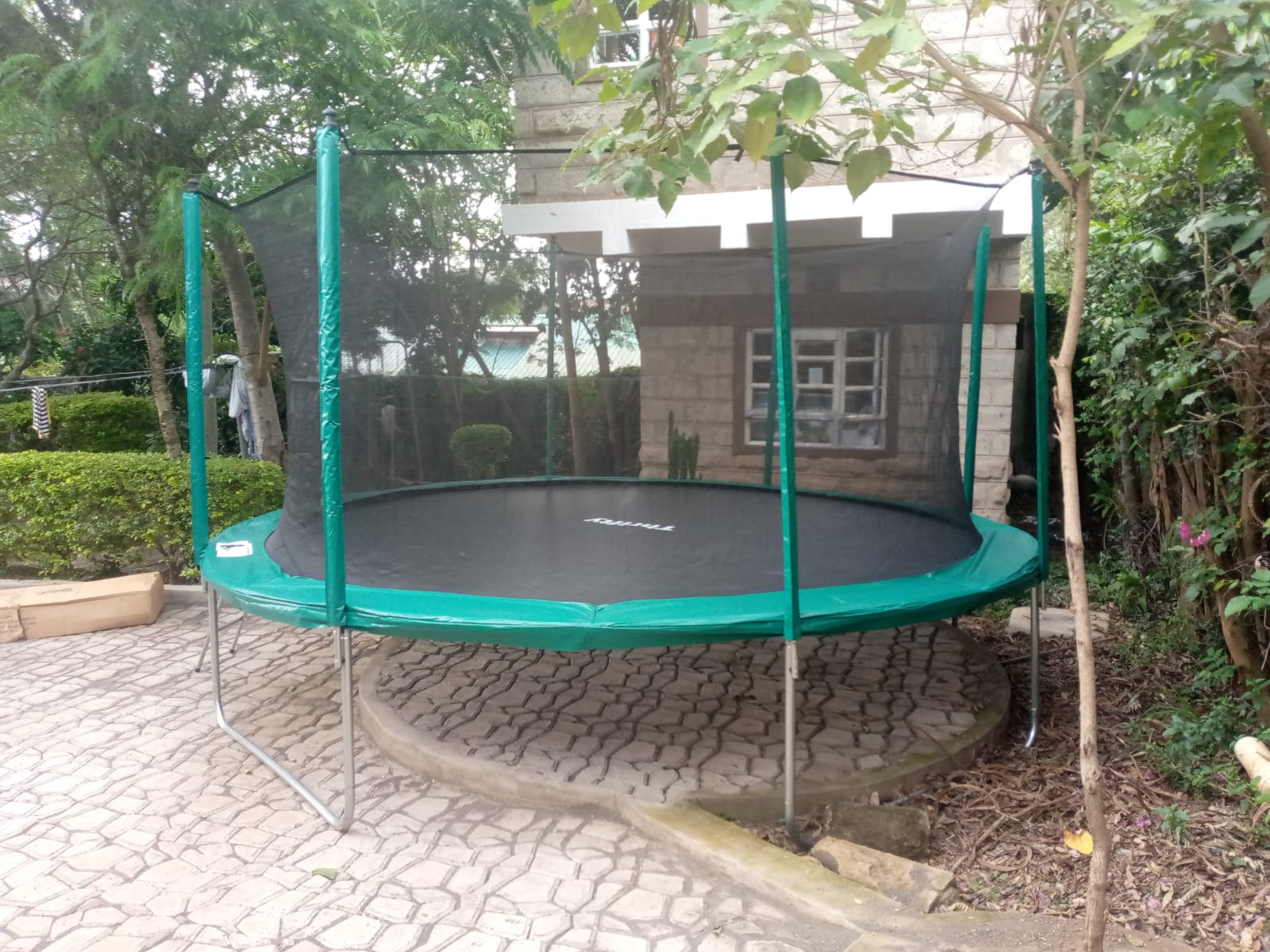
The Sale of Trampolines in Nairobi, Kenya: Market Trends, Benefits, and Scientific Insights
The sale of trampolines in Nairobi, Kenya, has grown significantly due to increasing awareness of their health, fitness, and recreational benefits. This paper explores the current market trends, the role of scientific research in promoting trampoline use, and the associated challenges. Notably, NASA and other scientific bodies have demonstrated the efficiency of trampolining as a […]
Read More →
Mini Trampoline Sale in Nairobi, Kenya
Looking for the best mini trampoline sale in Nairobi, Kenya? Whether you need a fun kids’ trampoline or a sturdy mini fitness trampoline, Frugal Innovations Kenya has got you covered! We offer high-quality mini trampolines for sale in Kenya at unbeatable prices, ensuring safety, durability, and fun for kids and adults alike. Visit our shop HERE to […]
Read More →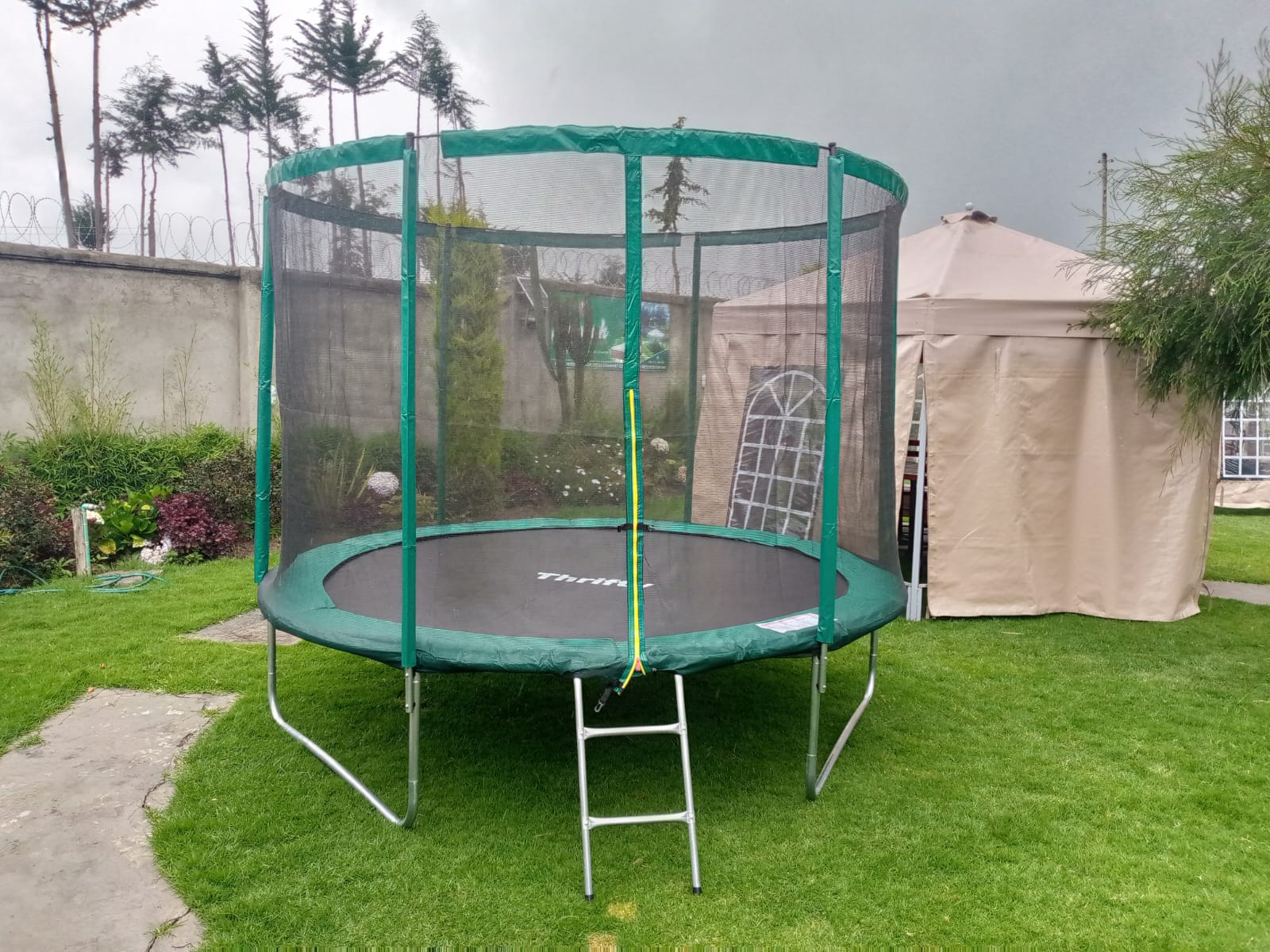
Best Trampolines for Sale Nairobi
Looking for quality trampolines for sale in Nairobi? Whether for fitness, fun, or recreational use, a trampoline is a great investment for families, schools, and businesses. At Frugal Innovations Kenya, we are one of the best trampoline suppliers in Kenya, offering top-quality trampolining equipment built for safety, durability, and an excellent bouncing experience. Visit our […]
Read More →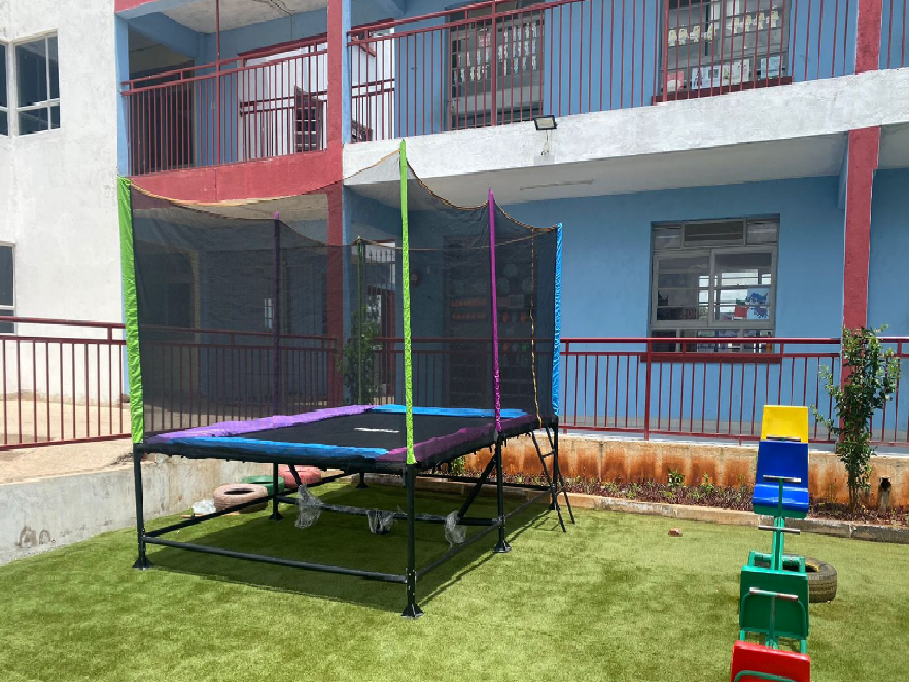
Sale of Trampoline Parts and Accessories in Kenya
Trampolines are a great way to enjoy outdoor fun, whether for kids or adults. However, over time, trampoline parts may wear out, requiring replacements to maintain safety and performance. If you’re looking for the sale of trampoline parts and accessories in Kenya, Frugal Innovations is your go-to supplier for high-quality trampoline spares at competitive prices. […]
Read More →
Trampoline Sale in Nairobi, Kenya – Best Deals on High-Quality Trampolines
Looking for the best trampoline deals in Nairobi? At Frugal Innovations Kenya, we offer top-quality trampolines for all ages. Whether you want a mini trampoline for your toddler or a large outdoor trampoline for family fun, we have it all! If you’re searching for an unbeatable trampoline sale in Nairobi, you’re in the right place. […]
Read More →
Your Trusted Trampolining Supplier in Kenya
At Frugal Innovations Kenya, we are passionate about keeping your trampoline in top condition. As Kenya’s most reliable trampolining supplier, we ensure your equipment remains safe, durable, and ready for action. Whether you need expert trampoline care, replacement parts, or a brand-new trampoline, we have you covered! Visit our shop HERE to explore all our products To […]
Read More →
The Advantages of Mini Trampolines in Nairobi, Kenya
Mini trampolines, also known as rebounders, are gaining popularity in Nairobi, Kenya, thanks to their affordability, space efficiency, and numerous health benefits. Whether for kids’ fun activities or low-impact fitness workouts, these small trampolines offer a range of advantages that make them a valuable investment for homes, schools, and fitness enthusiasts. Below are some key […]
Read More →
Affordable Mini Trampolines in Nairobi
At Frugal Innovations Kenya, we believe in providing innovative, budget-friendly solutions that enhance your lifestyle. If you’re looking for a fun, affordable way to stay active or keep your kids entertained, a Mini Trampoline in Nairobi is the perfect choice! Trampolines are not only great for fitness but also a fantastic way to bring joy and excitement to […]
Read More →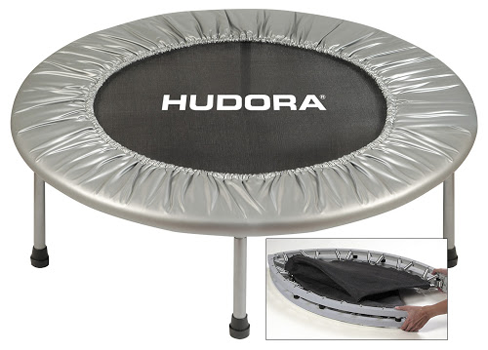
The Spring-Free Mini Trampoline Nairobi
Introducing the Spring-Free Mini Trampoline, now available in Nairobi, Kenya, exclusively through Frugal Innovations. This innovative trampoline offers a safer and quieter alternative to traditional models, making it an excellent addition to any indoor play area. Explore our shop on this LINK to purchase the Spring-Free Mini Trampoline in Nairobi Kenya. Key Features: Compact Design: […]
Read More →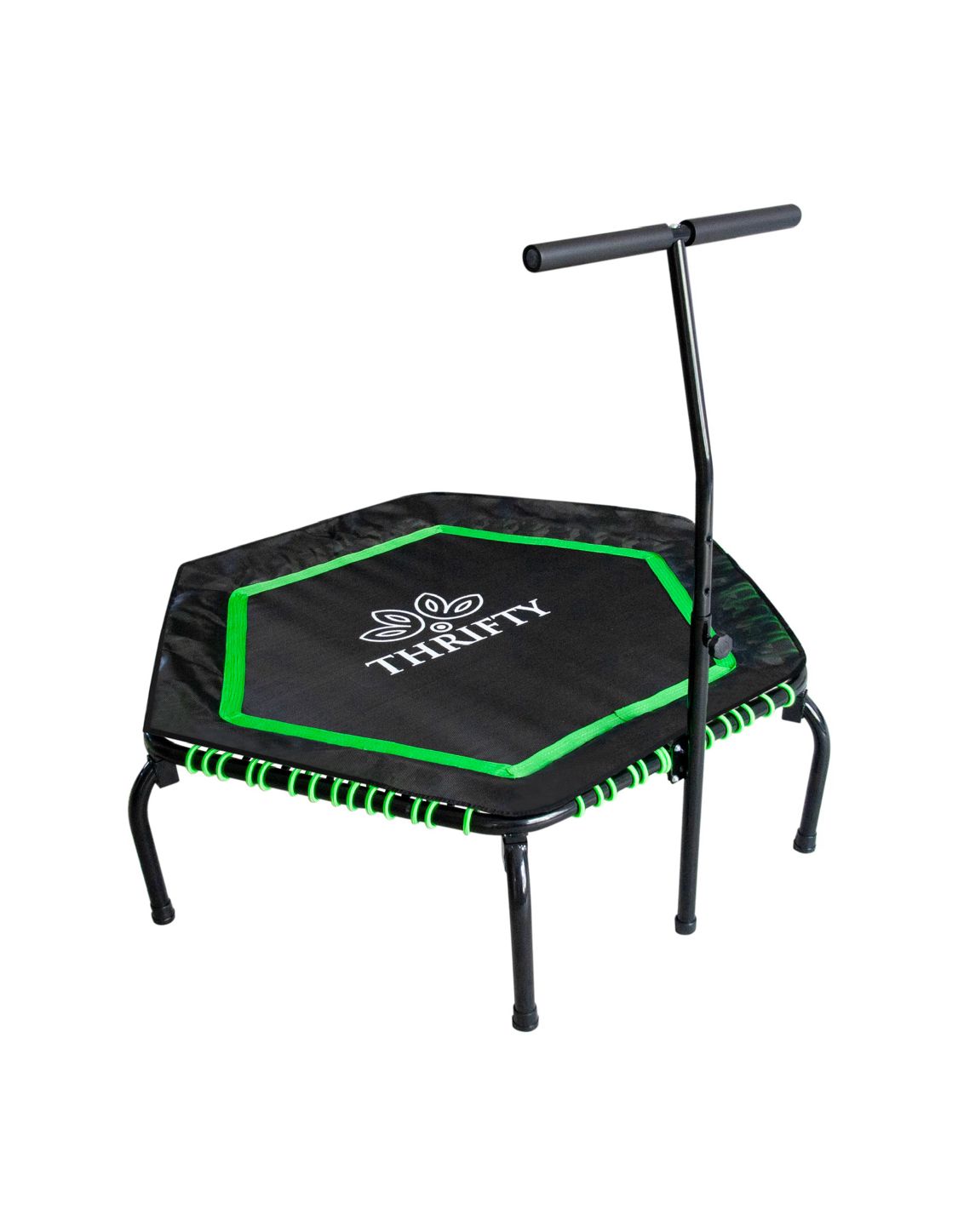
Your Trusted Partner for Trampoline Sale Kenya
Are you looking for the best trampoline sale Kenya has to offer? Look no further than Frugal Innovations Kenya, the most reliable supplier of high-quality trampolines, trampoline accessories, and repair services. Whether you’re purchasing a trampoline for home use, a school, a gym, or a recreational park, we have the perfect solution for you. Call/WhatsApp […]
Read More →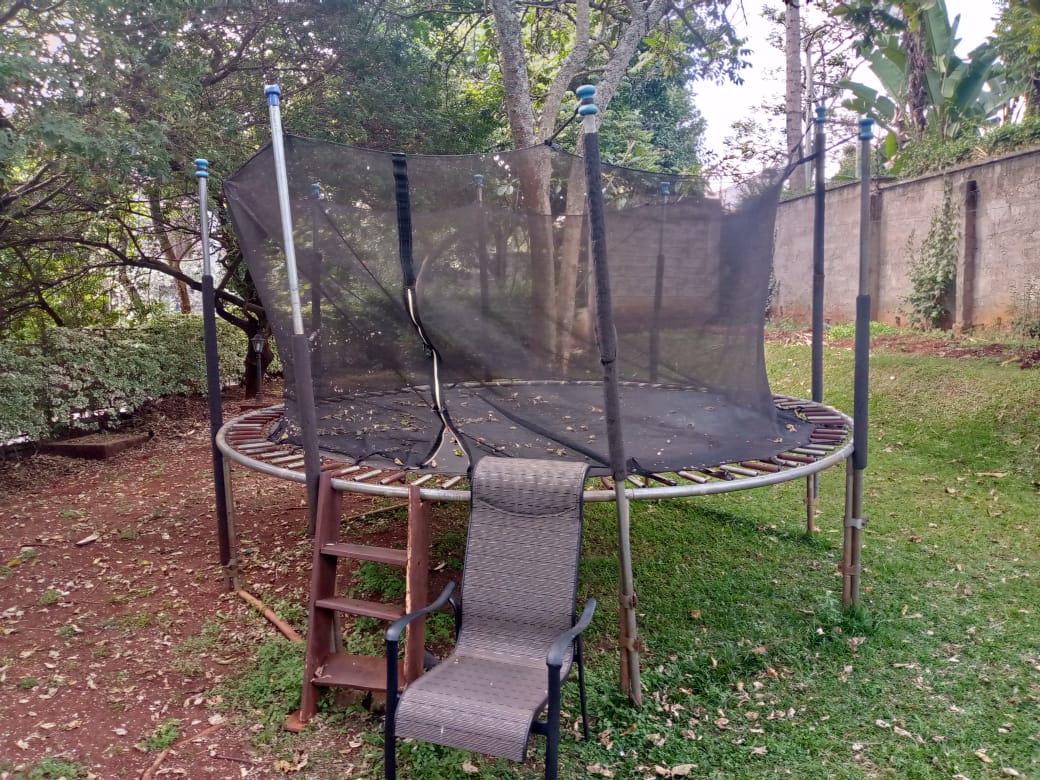
DIY Trampoline Repairs in Nairobi Kenya
Easy Fixes to Extend Your Trampoline’s Life When your trampoline starts showing signs of wear and tear, don’t rush to replace it just yet! DIY Trampoline Repairs in Kenya can save you money while ensuring your trampoline remains safe and functional. Whether it’s a torn jumping mat, rusty springs, or a damaged frame, taking a […]
Read More →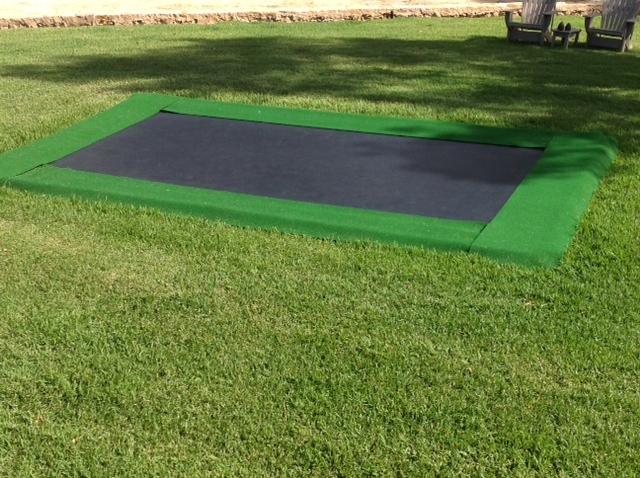
Explorer Inground Trampoline Double-Layer Mat (3.9 x 2.5 meters)
The Explorer Inground Trampoline double-layer mat (3.9 x 2.5 meters) is a premium outdoor trampoline offered by Frugal Innovations Kenya. Built for durability, safety, and style, this trampoline is perfect for families looking for a top-tier solution for outdoor play and fitness. Its double-layer mat provides enhanced performance and protection, making it a standout choice […]
Read More →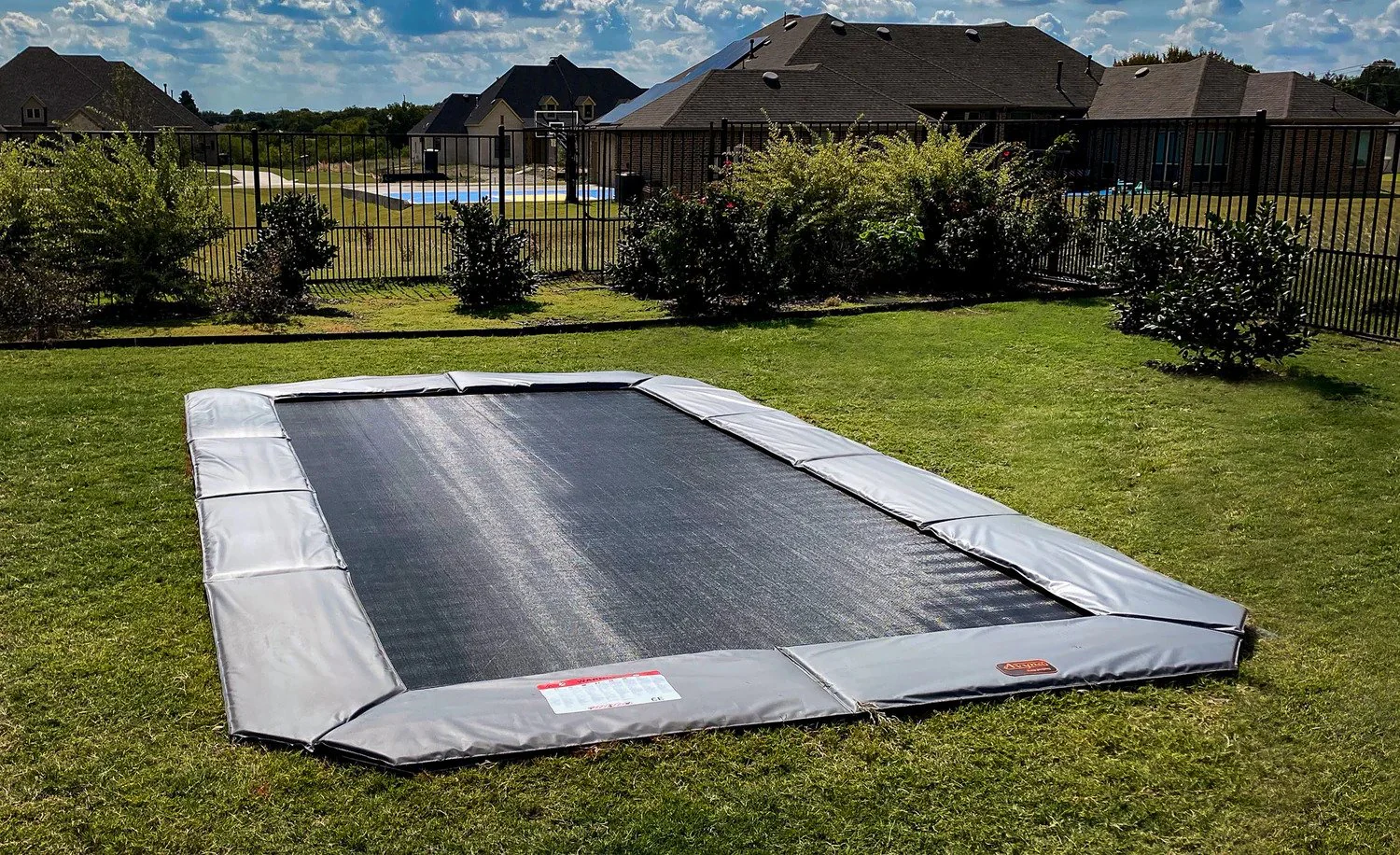
Explorer Inground Trampoline (3.9 x 2.5 meters)
The Explorer Inground Trampoline (3.9 x 2.5 meters) is an exceptional outdoor play and fitness solution offered by Frugal Innovations Kenya. Combining a sleek design with high-quality materials, this trampoline is perfect for families and fitness enthusiasts seeking a safe and durable trampoline. With a larger size and a focus on premium performance, the Explorer […]
Read More →
Comparing Inground Trampolines vs Regular Trampolines in Nairobi, Kenya
When it comes to adding fun and fitness to your home, trampolines are a fantastic option. At Frugal Innovations Kenya, the leading trampoline retailer in Nairobi, Kenya, we offer a range of trampolines to meet your needs. We have two popular types. The inground trampolines. vs. regular trampolines. Understanding their differences can help you make […]
Read More →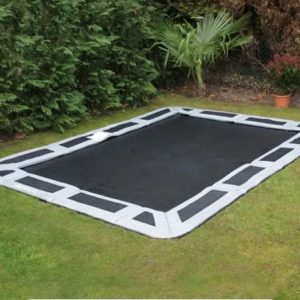
The Standard Inground Trampoline
The Standard Inground Trampoline (3.5 x 2.5 meters) is a standout addition to any backyard, combining quality, durability, and safety in one exceptional product. Designed and sold by Frugal Innovations Kenya, this trampoline is perfect for families looking to elevate outdoor fun or fitness enthusiasts seeking a high-performance solution for low-impact workouts. Product Features and […]
Read More →
Trampolines for Kids in Nairobi Kenya
Are you looking for the perfect way to keep your children active, happy, and entertained? Frugal Innovations Kenya offers the best selection of trampolines for kids in Nairobi Kenya, tailored to suit every budget and space requirement. Whether you need a small indoor trampoline or a large outdoor model, our trampolines combine fun, fitness, and […]
Read More →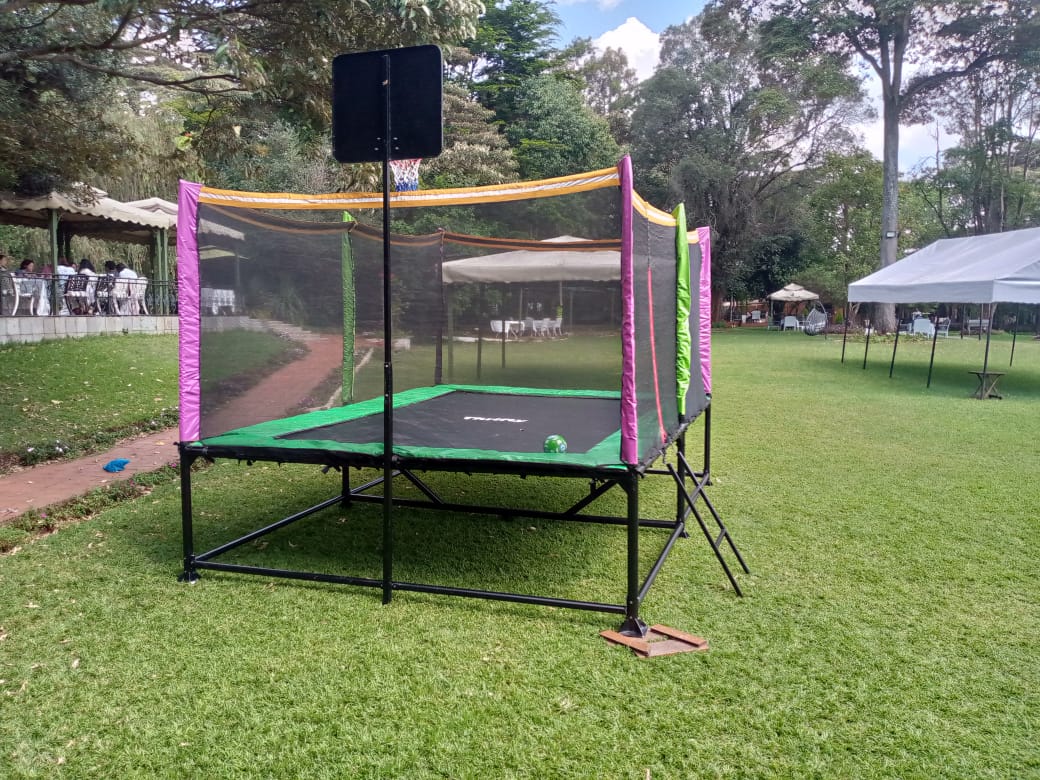
Jumbo Deluxe Trampoline Nairobi Kenya
The Jumbo Deluxe Trampoline Nairobi Kenya is a premier offering from Frugal Innovations Kenya, designed to provide an exceptional outdoor recreational experience for families and enthusiasts. This trampoline combines ample jumping space with the added excitement of a basketball hoop, promoting physical activity and fun. Key Features: Spacious Jumping Area: The trampoline offers a generous jumping […]
Read More →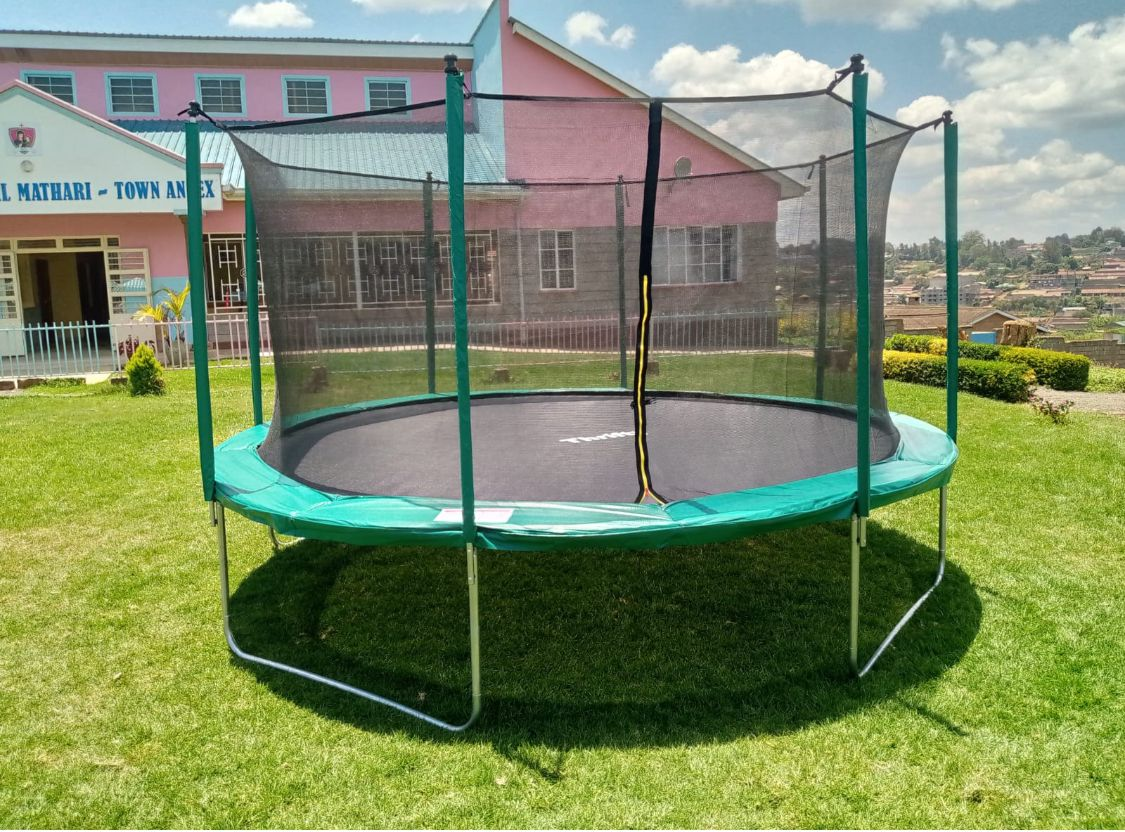
The Premium 14-Foot Trampoline
Frugal Innovations Kenya is proud to offer the 14-Foot Trampoline, a premium outdoor entertainment solution for families, schools, and recreational spaces. Designed with safety, durability, and performance in mind, this trampoline is perfect for larger backyards and group activities. Whether you’re looking to encourage physical activity or simply create unforgettable memories, this trampoline is a […]
Read More →
The 10-Foot Trampoline by Frugal Innovations Kenya
Frugal Innovations Kenya introduces the 10-Foot Trampoline, a perfect blend of fun, fitness, and safety for families and recreational spaces. This versatile trampoline is an excellent choice for medium-sized outdoor areas, offering a robust and secure jumping experience. With high-quality construction and essential safety features, this trampoline is designed to provide years of enjoyment for […]
Read More →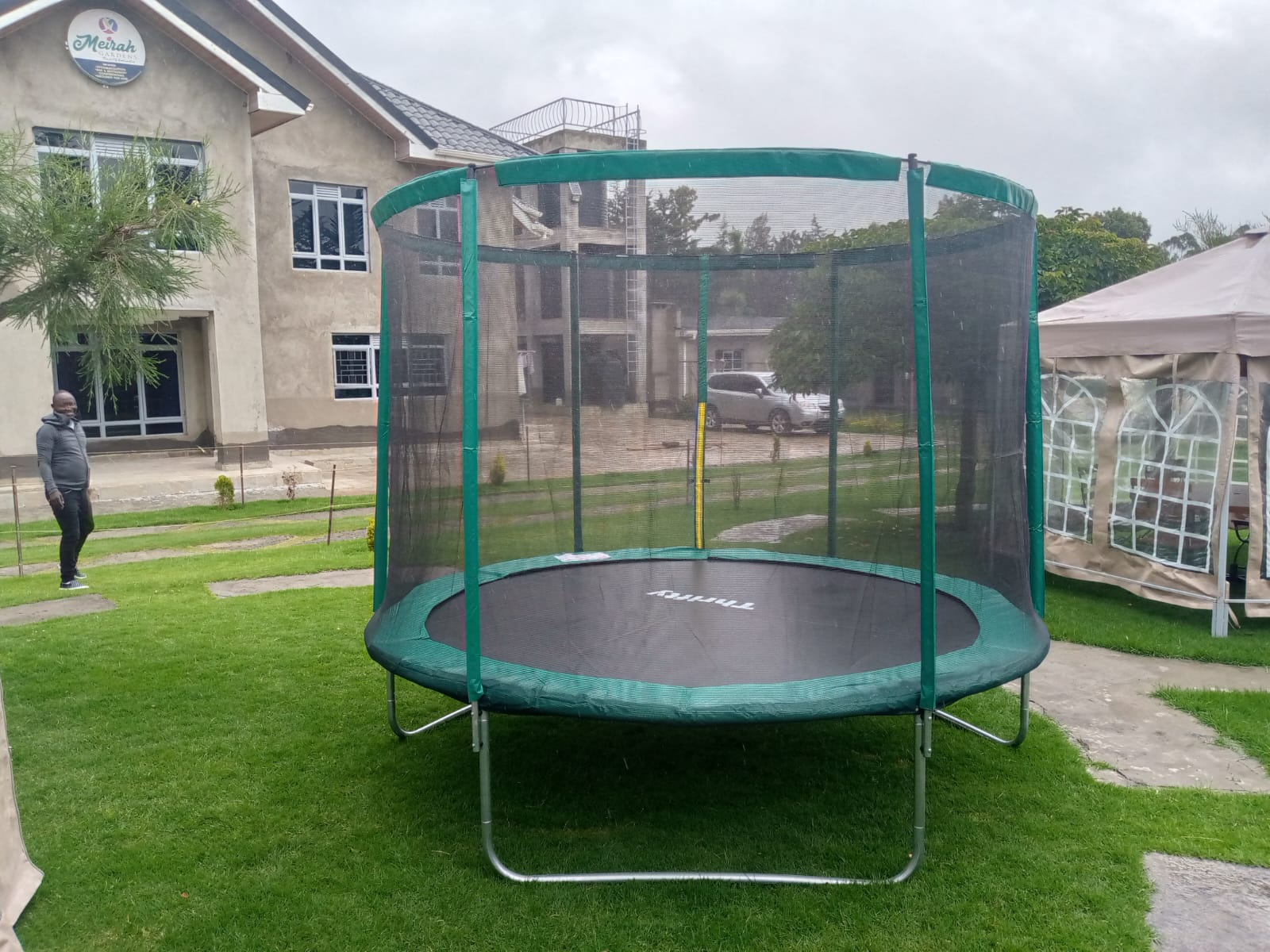
The 8-Foot Trampoline By Frugal Innovations Kenya
Frugal Innovations Kenya proudly presents the 8-Foot Trampoline, a compact yet versatile solution for families and recreational spaces. Designed to deliver maximum fun, safety, and durability, this trampoline is perfect for smaller outdoor areas and younger users. It’s an ideal choice for parents looking to provide a safe and engaging activity for their children while […]
Read More →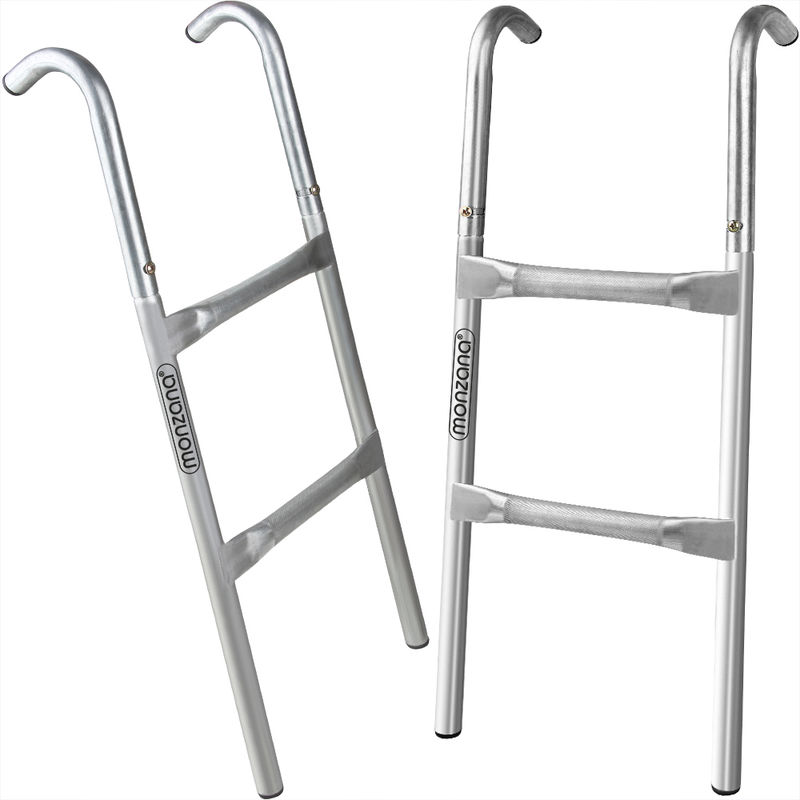
Trampolines Replacement Parts in Nairobi
Looking to maintain your trampoline’s safety and performance? Frugal Innovations Kenya offers a comprehensive selection of high-quality trampolines replacement parts in Nairobi, Kenya. From nets and mats to springs and ladders, we provide reliable solutions to keep your trampoline in perfect condition. Price and Product Information Replacement Part Size/Details Price (KSh) 8-Foot Trampoline Net For […]
Read More →
Buy a Trampoline in Nairobi Kenya
Buy a trampoline in Nairobi, Kenya, to Elevate your outdoor and indoor fun with high-quality trampolines from Frugal Innovations Kenya. Whether you need a compact mini trampoline for personal use or a larger model for family or commercial activities, we offer trampolines designed to meet diverse needs. Built with durability, safety, and excitement in mind, […]
Read More →
Experience Outdoor Joy with the Frugal Innovations Trampoline Park
Frugal Innovations Kenya is proud to introduce the Frugal Innovations Trampoline Park, the ultimate addition to any outdoor space in Nairobi and beyond. Designed to bring excitement, fitness, and unforgettable moments to families and businesses alike, this premium trampoline park sets a new benchmark for outdoor recreation. Whether you’re a parent searching for a safe […]
Read More →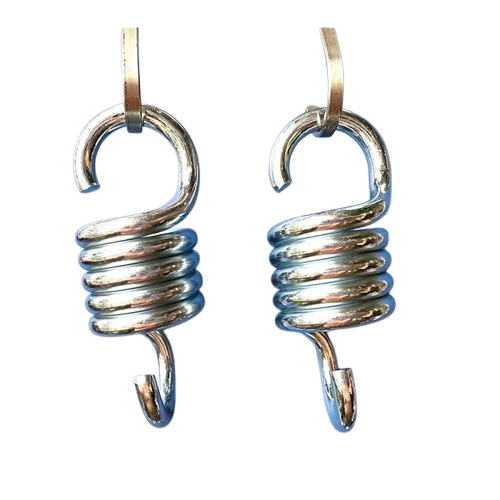
Quality Swing Springs in Nairobi, Kenya
Are you searching for high-quality swing springs to upgrade your outdoor or patio swing? Look no further than Frugal Innovations Kenya. Our selection of durable, safe, and affordable swing springs ensures a comfortable and reliable swing experience, making your outdoor spaces more enjoyable. To Order Visit Thrifty Innovations Kenya Frugal Innovations Kenya Call 0722724893 Why […]
Read More →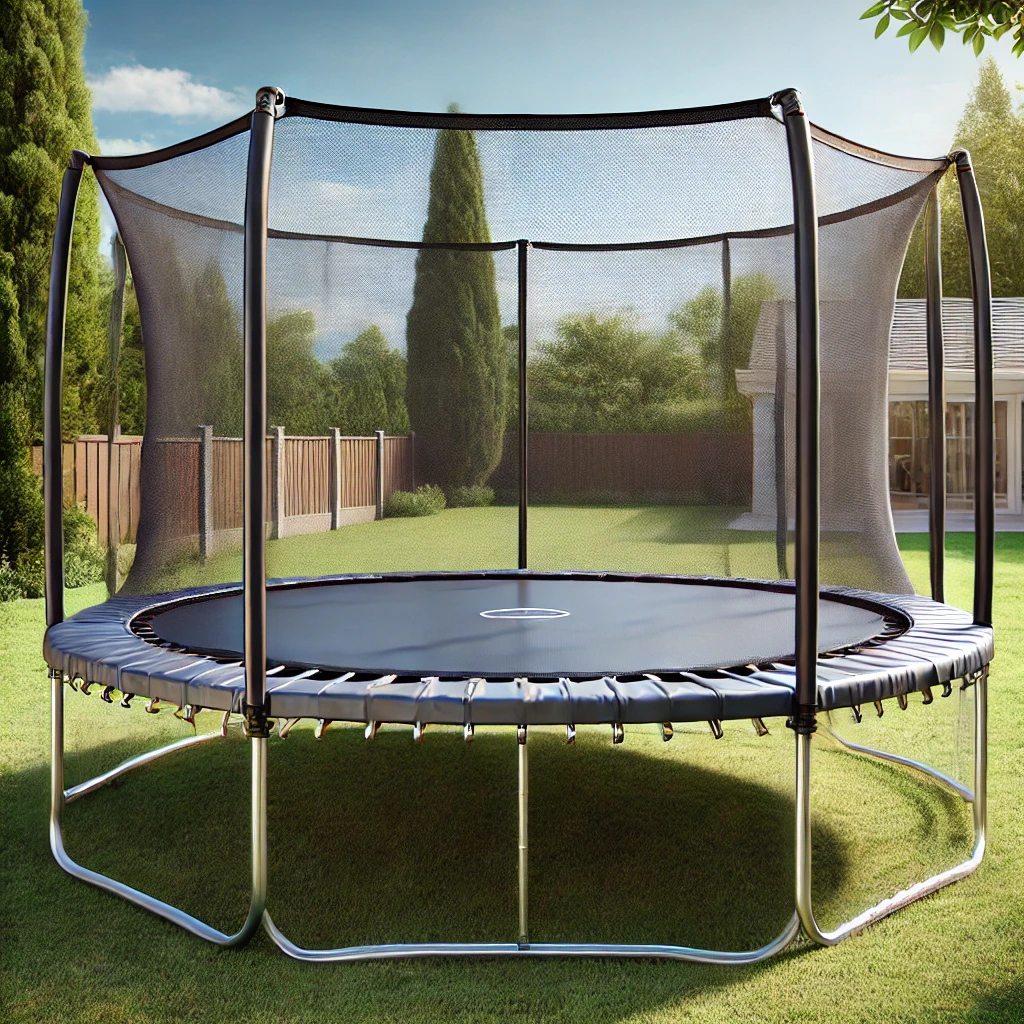
Choosing the Right Trampoline in Nairobi Kenya
Are you looking to add some outdoor fun to your backyard with a trampoline in Nairobi Kenya, but not sure which size is best for your family? At Frugal Innovations, we offer a range of trampolines that cater to different needs, preferences, and yard sizes. Whether you’re shopping for young children, teenagers, or the entire […]
Read More →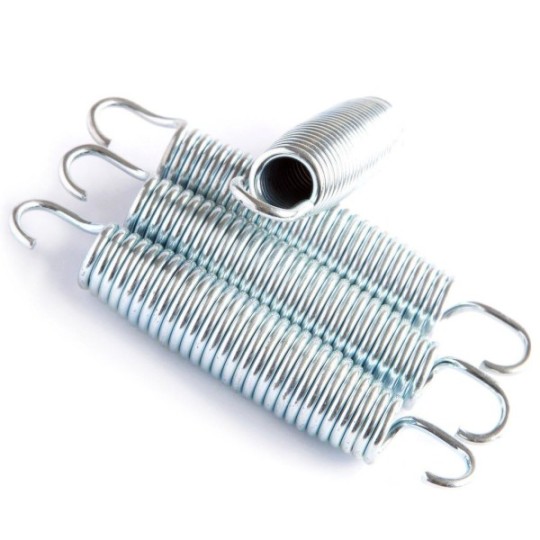
Trampoline Replacement Parts in Kenya
Are you looking for affordable and high-quality trampoline replacement parts in Kenya? Look no further than Frugal Innovations Kenya. As the top dealer, wholesaler, and distributor of trampoline parts, we offer a comprehensive range of essential trampoline components that ensure your trampoline remains safe, functional, and fun for years to come. Contact and Working Hours […]
Read More →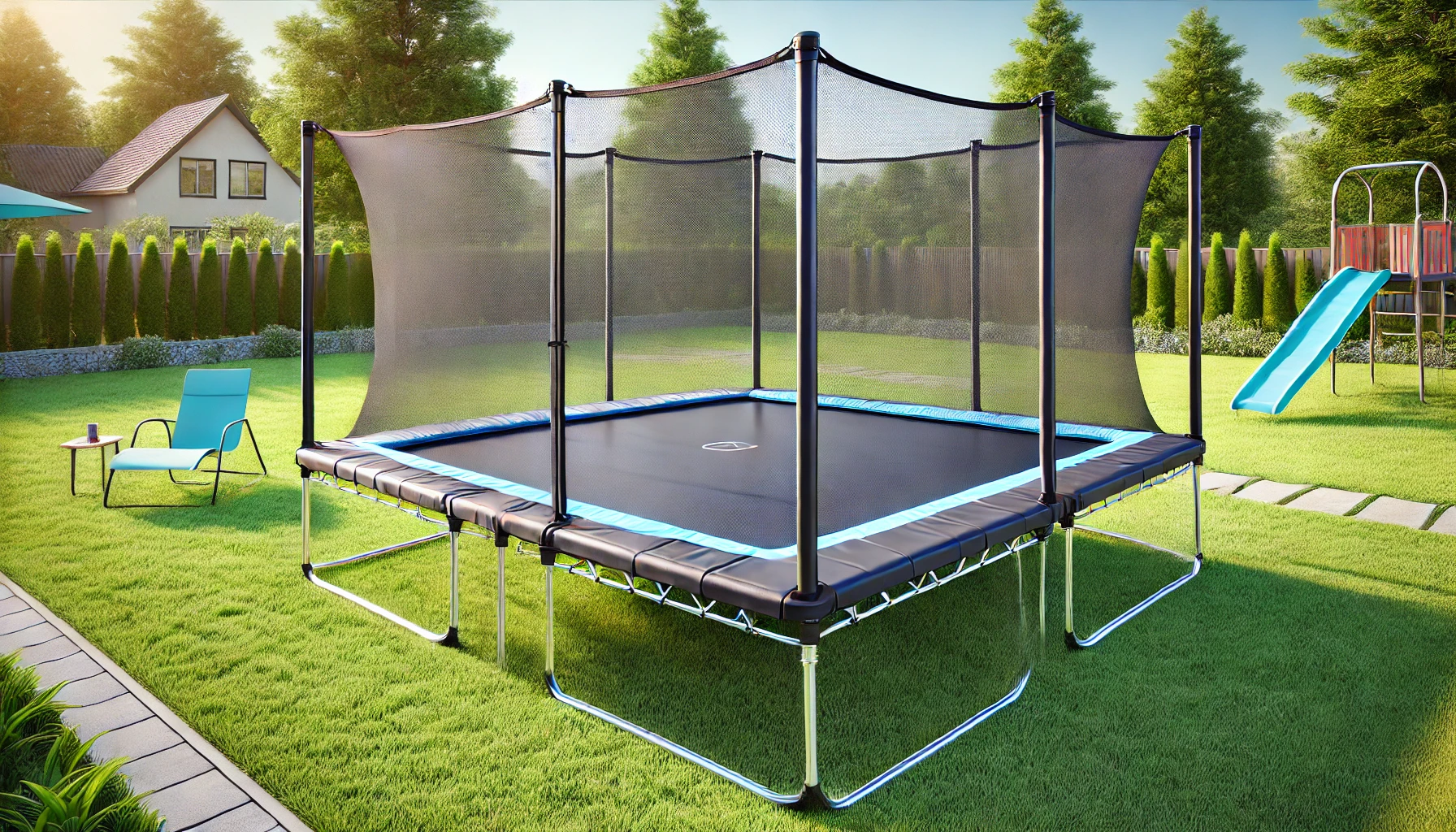
Where to Buy Trampolines in Nairobi Kenya
Are you looking for where to buy trampolines in Nairobi Kenya? Whether you’re searching for a fun way to keep your kids active or a fitness solution for the whole family, trampolines offer a great way to stay healthy and entertained. At Frugal Innovations Kenya, we provide a wide range of trampolines designed for both […]
Read More →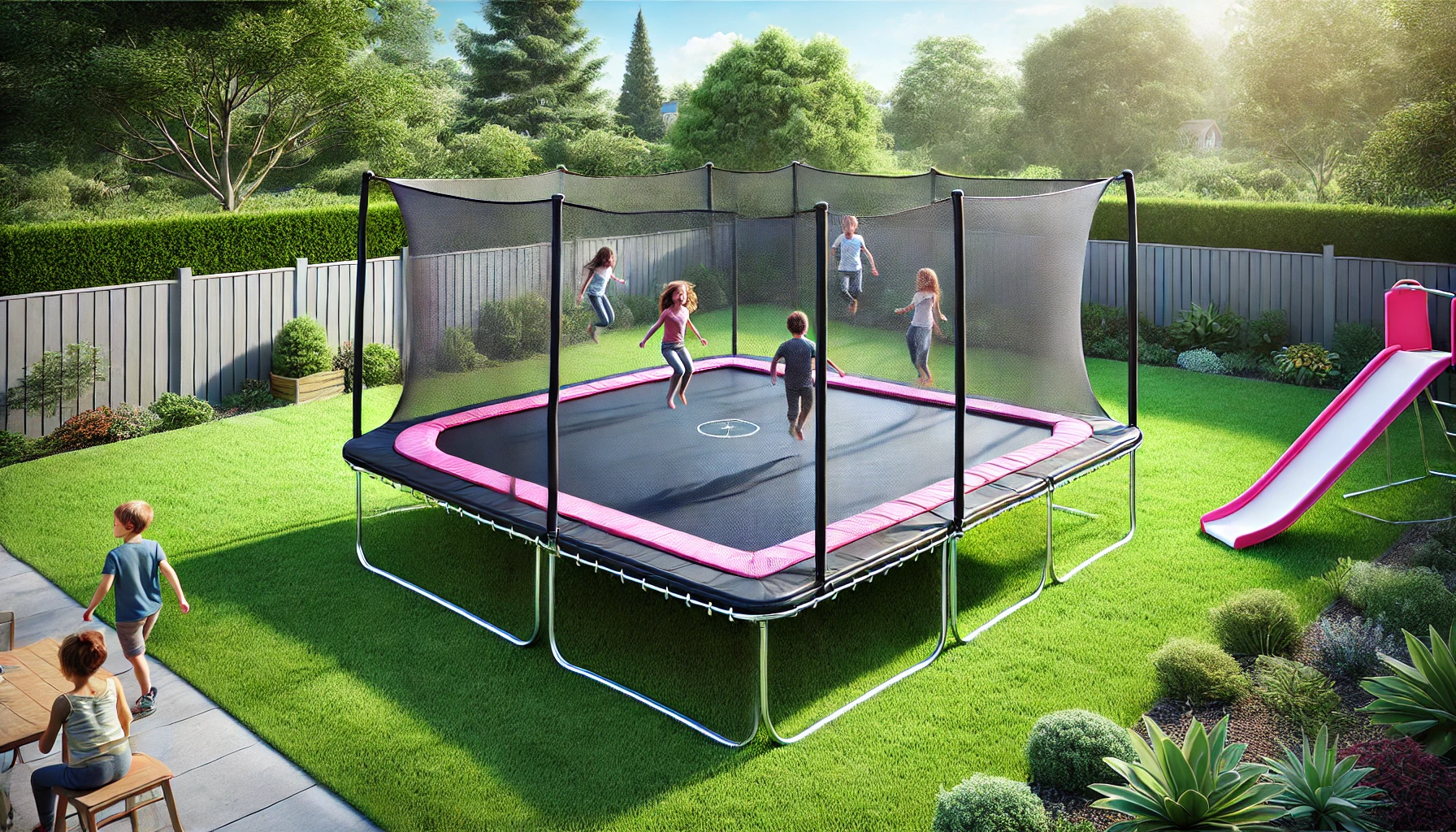
Buying a Trampoline in Kenya: Your Ultimate Guide
Are you thinking about buying a trampoline in Kenya? Whether it’s for family fun, fitness, or a unique way to entertain guests, choosing the right trampoline is essential. At Frugal Innovations Kenya, we offer a variety of trampolines to suit every need and budget. This guide will help you understand the key factors to consider […]
Read More →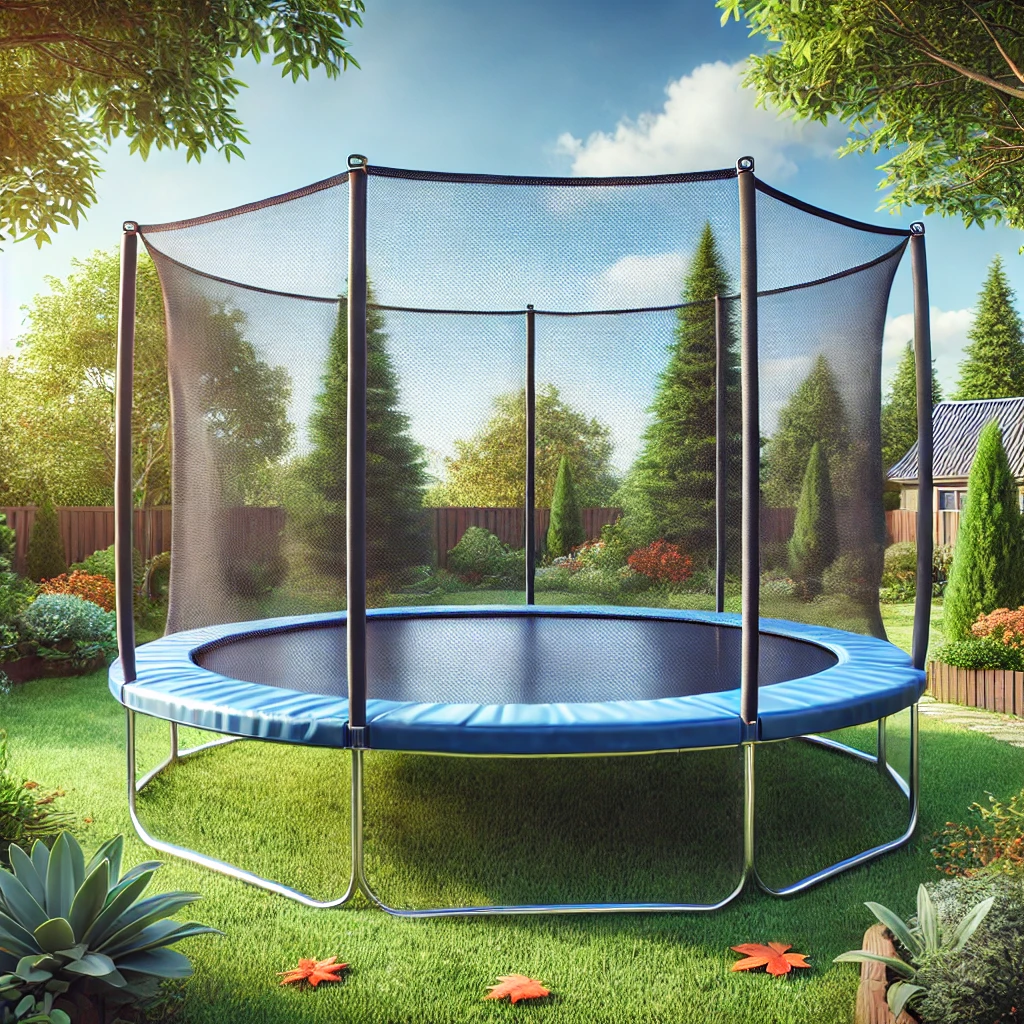
Different Types of Trampolines in Nairobi Kenya
Trampolines are a fantastic way to add fun, fitness, and excitement to your life. Whether you are looking for an activity for your kids, a way to stay fit, or just something to enjoy in your backyard, trampolines offer diverse options to meet your needs. Are you wondering if there are different types of trampolines […]
Read More →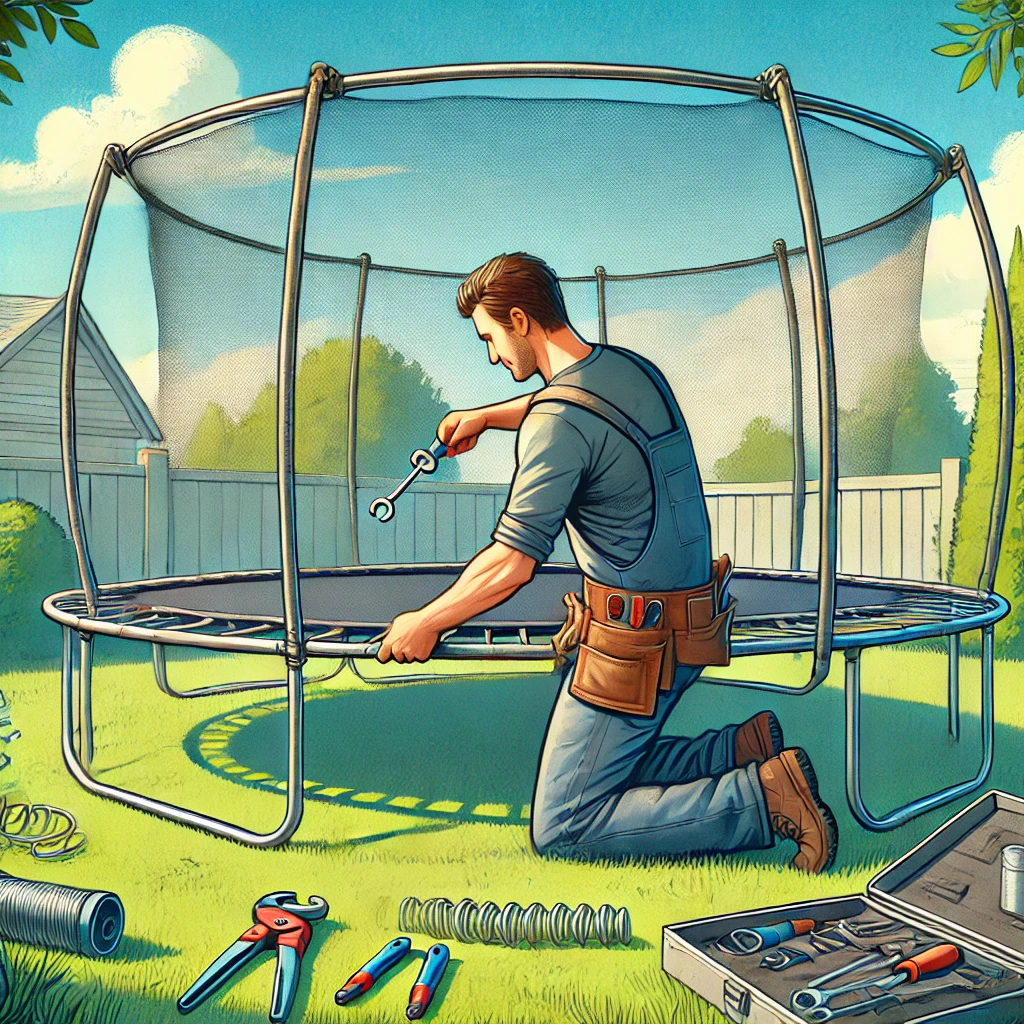
Professional Trampoline Repair Service in Nairobi, Kenya
Are you searching for a Professional Trampoline repair service in Nairobi, Kenya? Look no further! Frugal Innovation Kenya is here to provide top-notch trampoline repair solutions to keep your trampoline in perfect condition. Whether you are dealing with damaged Trampoline Springs or need help with other repairs, our experienced team has got you covered. 0722 […]
Read More →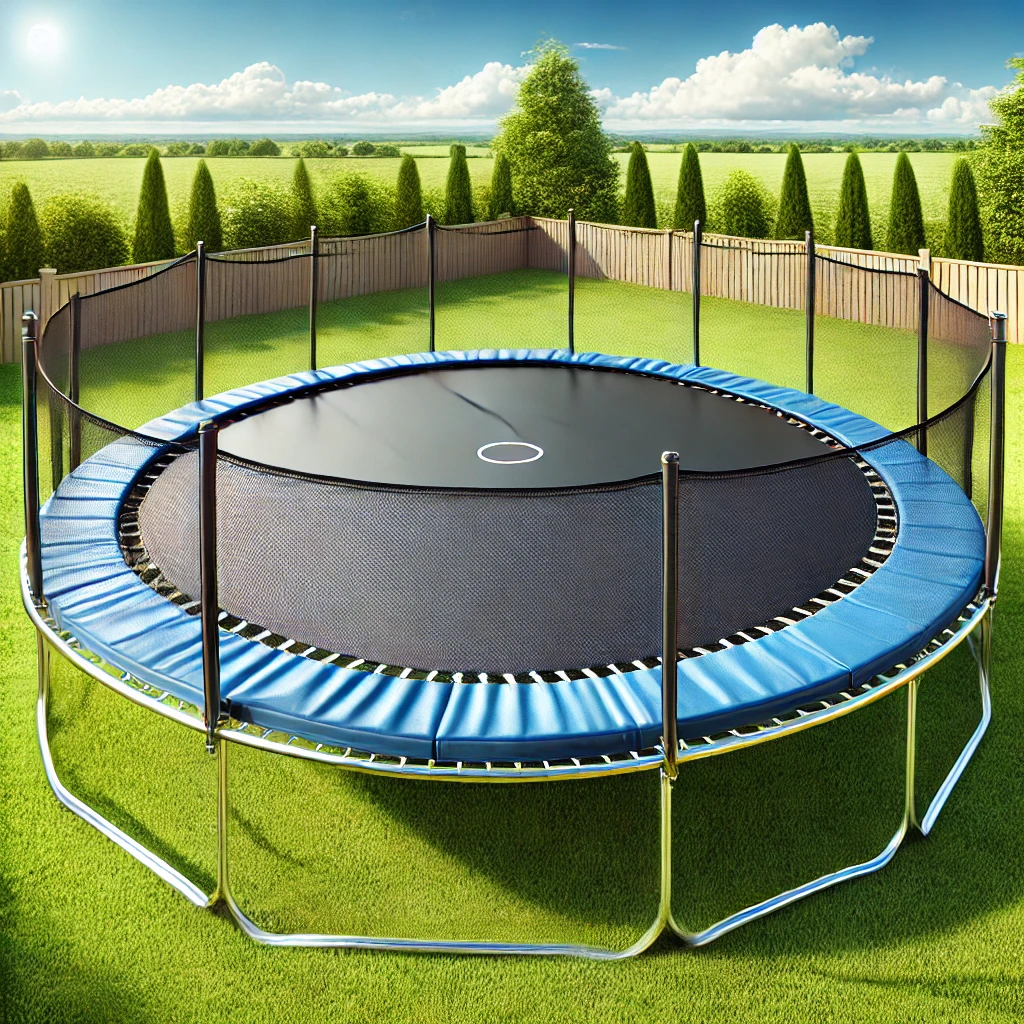
Top Trampoline Sellers in Kenya
Top Trampoline Sellers in Kenya When it comes to purchasing or repairing trampolines in Kenya, selecting the right seller is essential. For those seeking top-quality trampolines Nairobi or affordable trampolines Kenya, Frugal Innovations Kenya and Thrifty Enterprises are two outstanding choices. In this article, we will delve into why these two companies are considered among […]
Read More →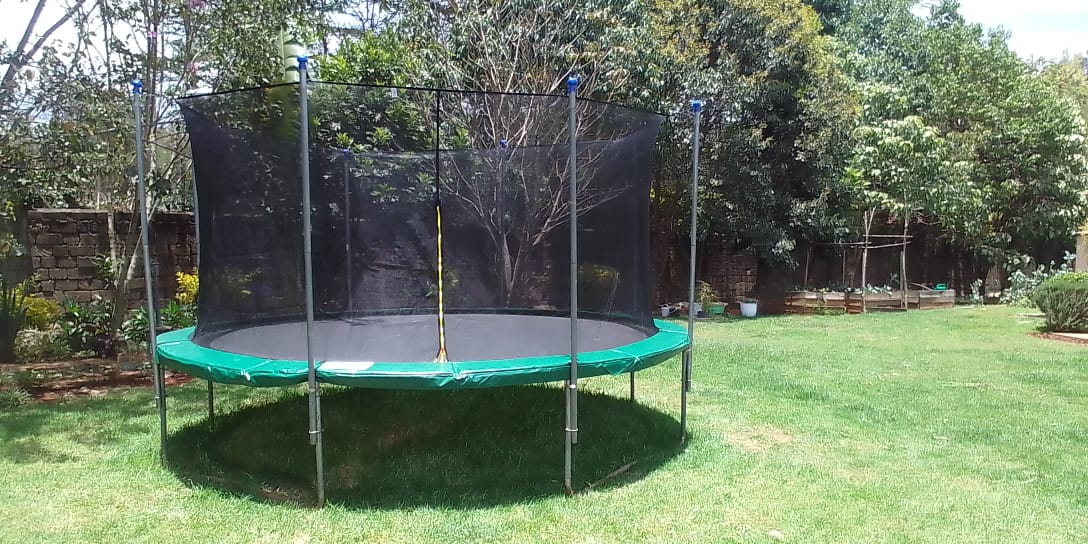
The Top Quality Trampoline Dealer in Nairobi Kenya
When it comes to finding the top quality trampoline dealer in Nairobi, Kenya, look no further than Frugal Innovation. As the leading name in the trampoline industry, we are proud to offer an exceptional range of trampolines and accessories that cater to every need and budget. Located conveniently in Nairobi, we are recognized as top […]
Read More →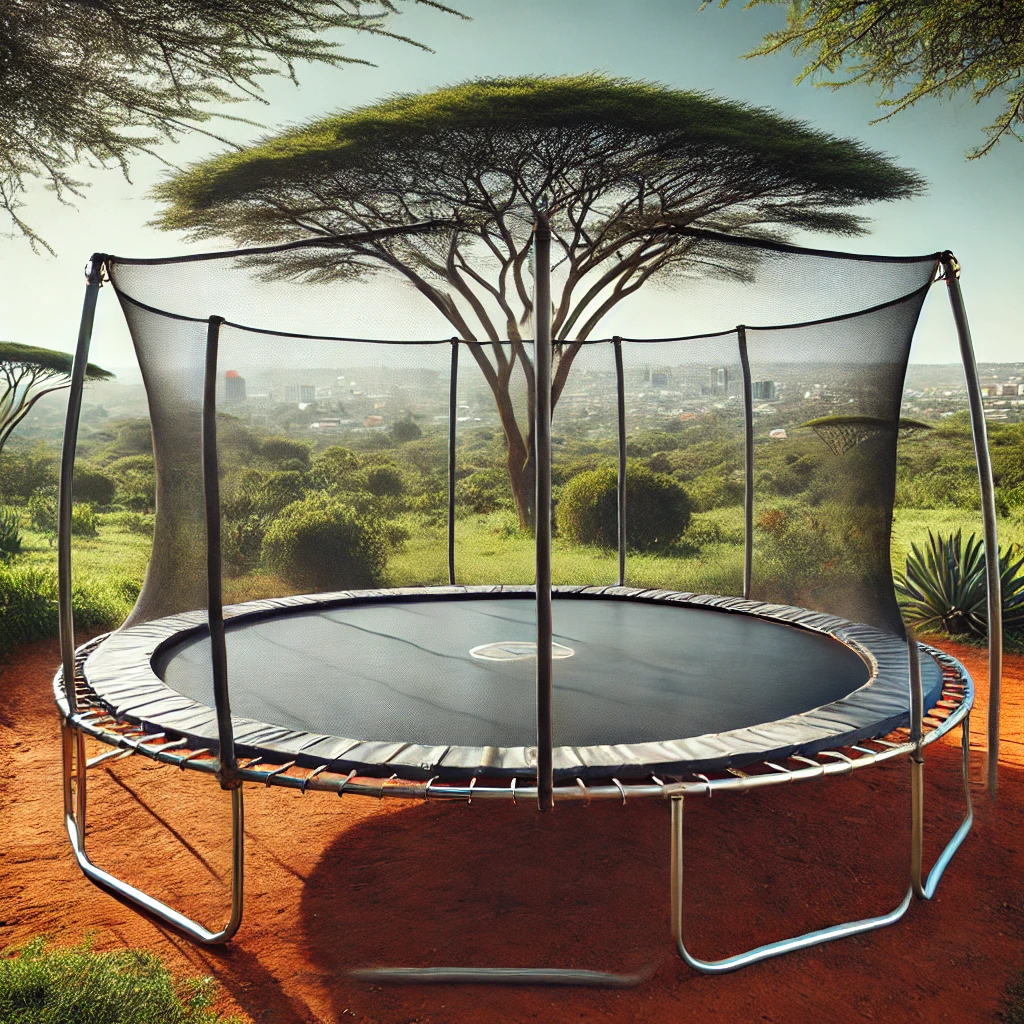
The Most Trusted Trampoline Dealer in Nairobi Kenya
If you are looking for the most trusted trampoline dealer in Nairobi Kenya, look no further! We are committed to providing high-quality trampolines for all your outdoor and indoor fun needs. As a leading name among trampoline dealers in Nairobi, we offer a wide range of products, from kids’ trampolines to large-scale outdoor trampolines. Our […]
Read More →
The Ultimate Guide to Buying Trampolines in Kenya
Are you considering buying trampolines in Kenya? Finding the best trampoline for your family or business can be overwhelming. Various factors, such as quality, price, and safety, must be considered. Fortunately, if you are looking for the ideal trampoline in Kenya, Frugal Innovations is here to help. This comprehensive guide will walk you through everything […]
Read More →
Trampolines in Kenya
Trampolines in Kenya: Premium Quality and Unmatched Value from Frugal Innovations At Frugal Innovations Kenya, we are dedicated to providing our customers with the finest trampolines in Kenya. Our wide range of trampolines is designed to cater to every need, whether you’re a family looking for fun or a fitness enthusiast seeking the best equipment. […]
Read More →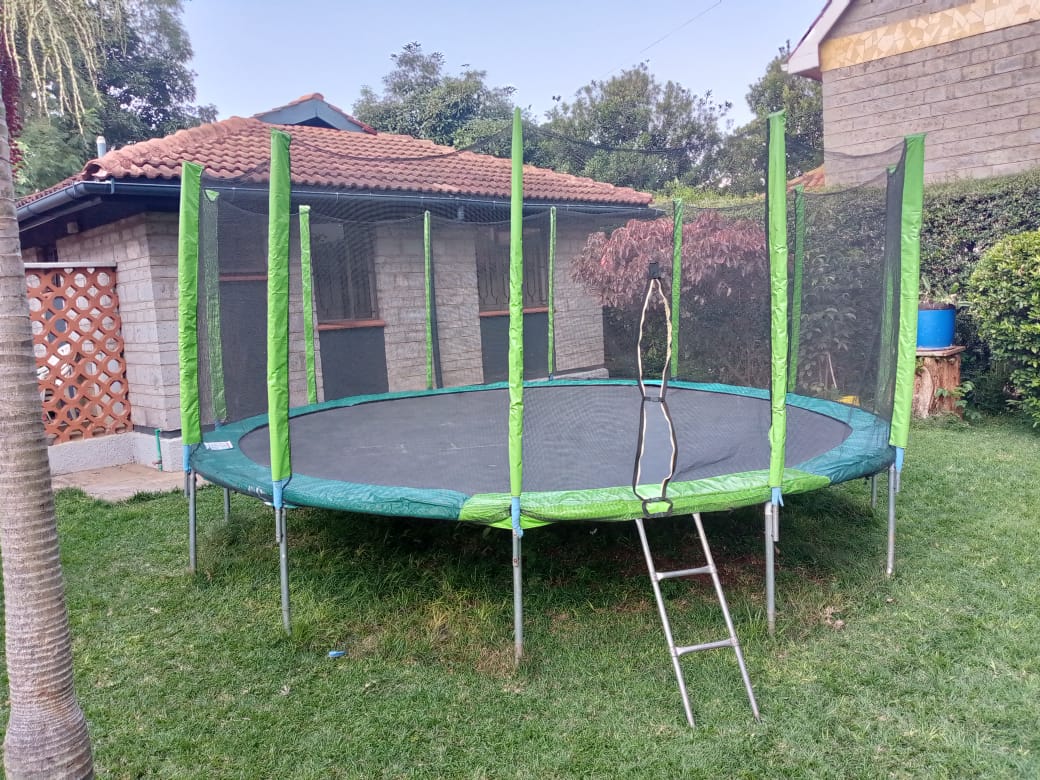
Trampolines Nairobi: Elevate Your Outdoor Fun
When it comes to outdoor fun, trampolines have become a popular choice for both residential and commercial spaces in Nairobi. Frugal Innovations Kenya is leading the market with high-quality trampolines that cater to various needs, from home gardens to school playgrounds. This article explores why “Trampolines Nairobi” is becoming a buzzword and how Frugal Innovations […]
Read More →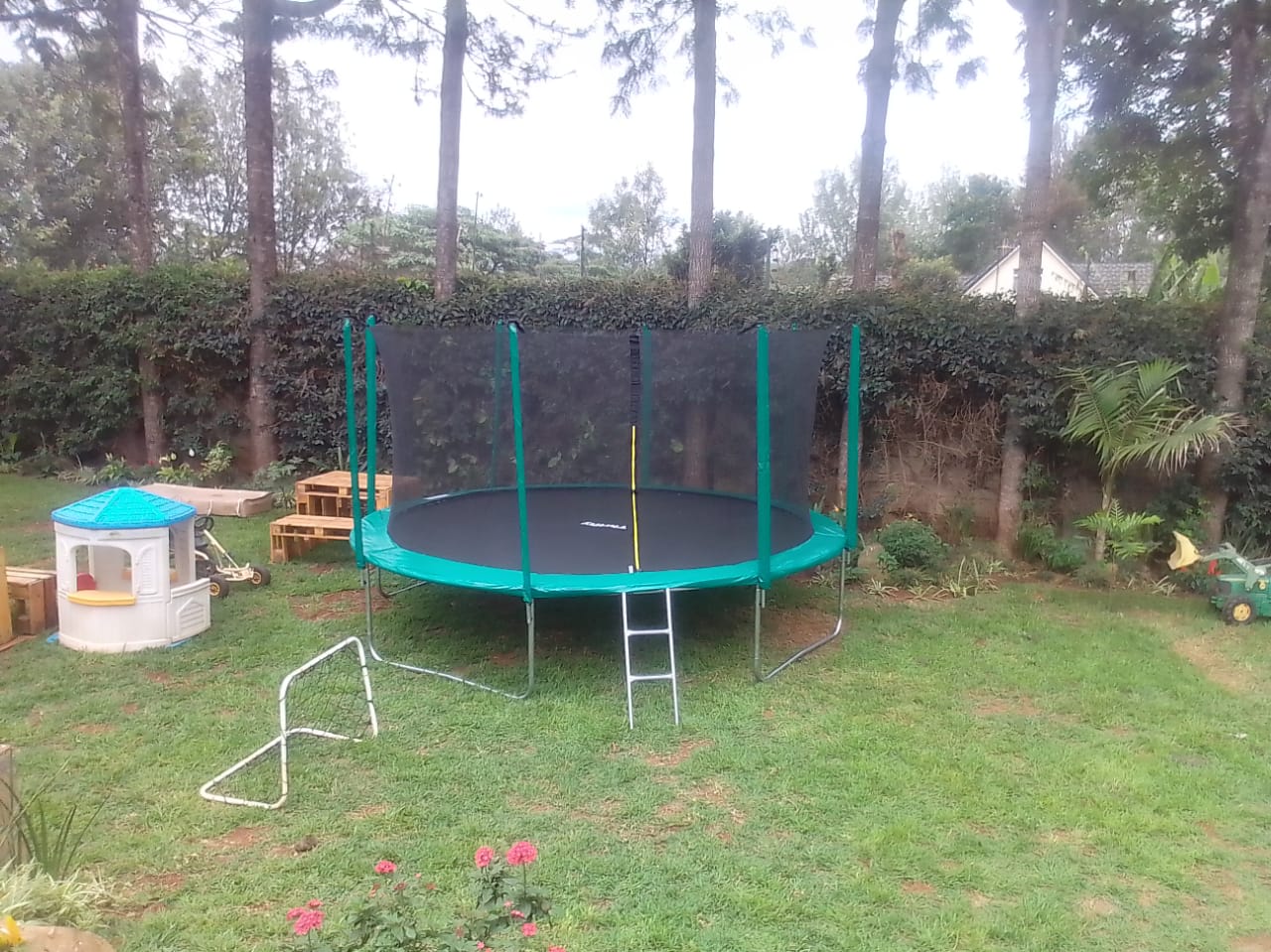
The Sale of Trampolines in Naivasha, Kenya
If you’re searching for a trampoline for sale in Naivasha, Kenya, Frugal Innovations Kenya is your top choice. We offer a wide range of high-quality trampolines perfect for both recreational and fitness purposes. As a leading supplier in the region, we are dedicated to providing durable and affordable trampolines to residents of Naivasha and nearby […]
Read More →The Sale of Trampolines in Eldoret, Kenya
If you’re searching for a trampoline for sale in Eldoret, Kenya, Frugal Innovations Kenya is your ultimate destination. We are committed to providing high-quality trampolines that cater to all your needs, whether it’s for family fun, fitness, or business. As one of the leading suppliers in the region, we pride ourselves on offering durable and […]
Read More →
The Sale of Trampolines in Machakos Kenya
Are you on the hunt for a trampoline for sale in Machakos Kenya? Look no further than Frugal Innovations Kenya. As a leading supplier in the region, we offer top-quality trampolines that are perfect for both recreational and fitness purposes. Our goal is to provide residents of Machakos with affordable, durable, and safe trampolines that […]
Read More →
Best Trampoline Supplier in Kenya
When it comes to finding the best trampoline suppliers in Kenya, Thrifty Enterprises Kenya stands out as a top choice. Known for our reliability, quality products, and excellent customer service, Thrifty Enterprises has established itself as the best trampoline supplier in Kenya and is a leader in the market. Whether you’re looking for a mini […]
Read More →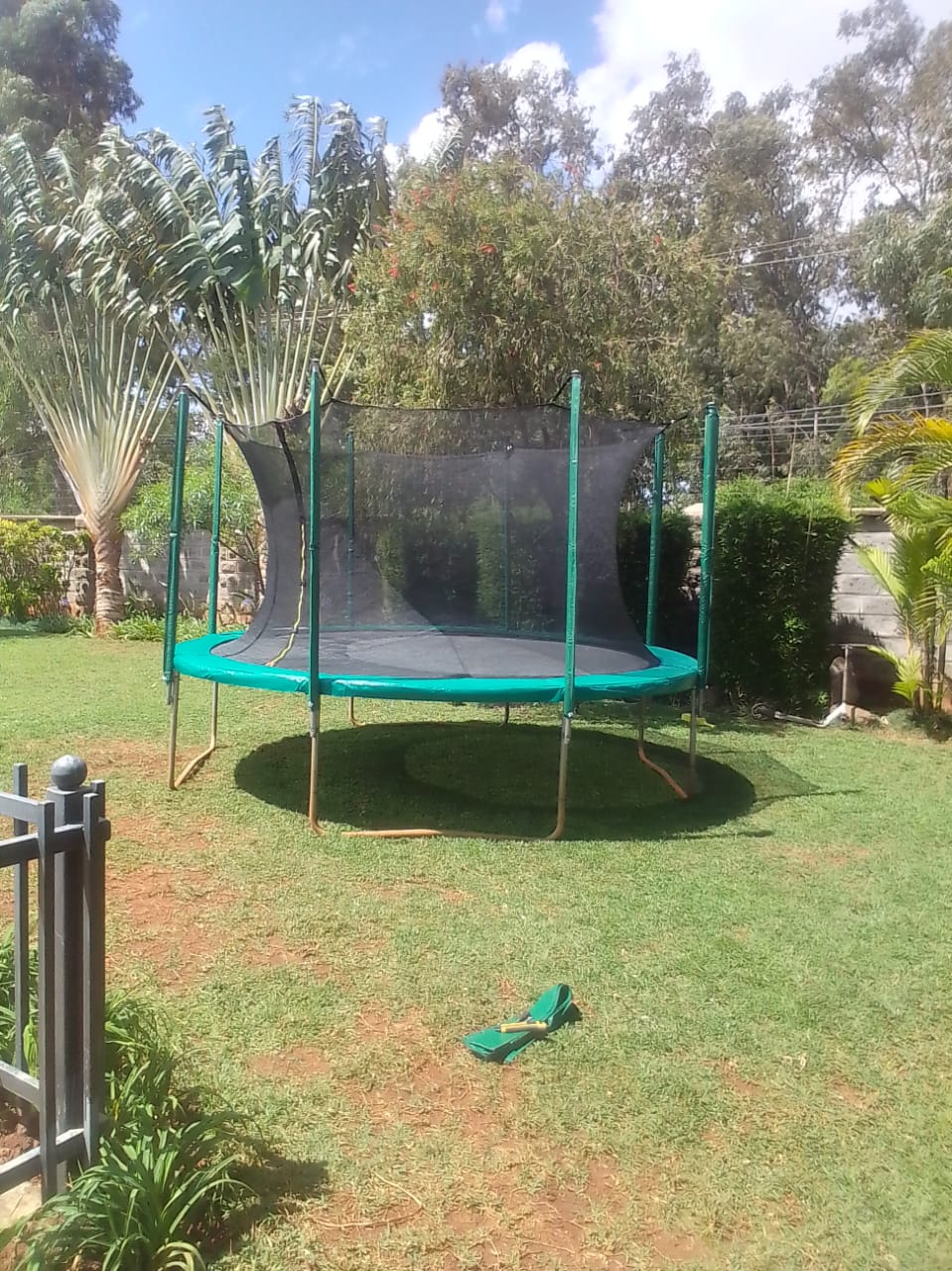
The 14ft Trampoline in Kenya
Discover the Ultimate 14ft Trampoline: Safe, Durable, and Fun for the Whole Family If you’re looking to bring excitement, fun, and fitness to your backyard, look no further than the 14ft Trampoline with Ladder and Safety Enclosure Net from Frugal Innovations. Priced at Ksh 79,000 or more, this high-quality trampoline is the perfect outdoor equipment […]
Read More →
Reliable Trampoline Dealer in Kenya
Looking for the best place to buy a trampoline in Nairobi? Look no further than Frugal Innovations Kenya, the leading and most reliable trampoline dealer in Kenya. Whether you’re looking to add a fun activity for your kids or enhance your outdoor recreational space, Frugal Innovations Kenya has got you covered with high-quality trampolines at […]
Read More →
The Sale of Trampolines in Nanyuki Kenya
The sale of trampolines in Nanyuki Kenya has become increasingly popular as more families seek to add fun and exercise to their home environments. Whether you are looking to entertain your children, encourage physical activity, or just have some outdoor fun, trampolines offer a fantastic solution. This article will guide you through everything you need […]
Read More →The Sale of Trampolines in Nakuru Kenya
Nakuru, a vibrant city in Kenya, is seeing a surge in demand for recreational activities, with trampolines becoming a popular choice among families and businesses. Frugal Innovations Kenya is at the forefront of meeting this demand, offering a wide range of trampolines and related services. This article explores the offerings and services of Frugal Innovations […]
Read More →
Where to Buy Trampoline in Nairobi Kenya
Are you searching for where to buy trampoline in Nairobi? Whether you’re looking to add some fun to your backyard or planning to enhance your fitness routine, a trampoline can be an excellent investment. In this comprehensive guide, we’ll explore the best places to purchase trampolines in Nairobi, including options for those seeking to shop […]
Read More →
Why Every Home Needs a Heavy Duty Trampoline in Kenya
In recent years, trampolines have become a popular addition to many Kenyan households. They provide endless fun for children and adults alike while offering numerous health benefits. In Kenya, the trend of owning a heavy duty trampoline in Kenya is on the rise, and for good reasons. This article explores why every home in Kenya […]
Read More →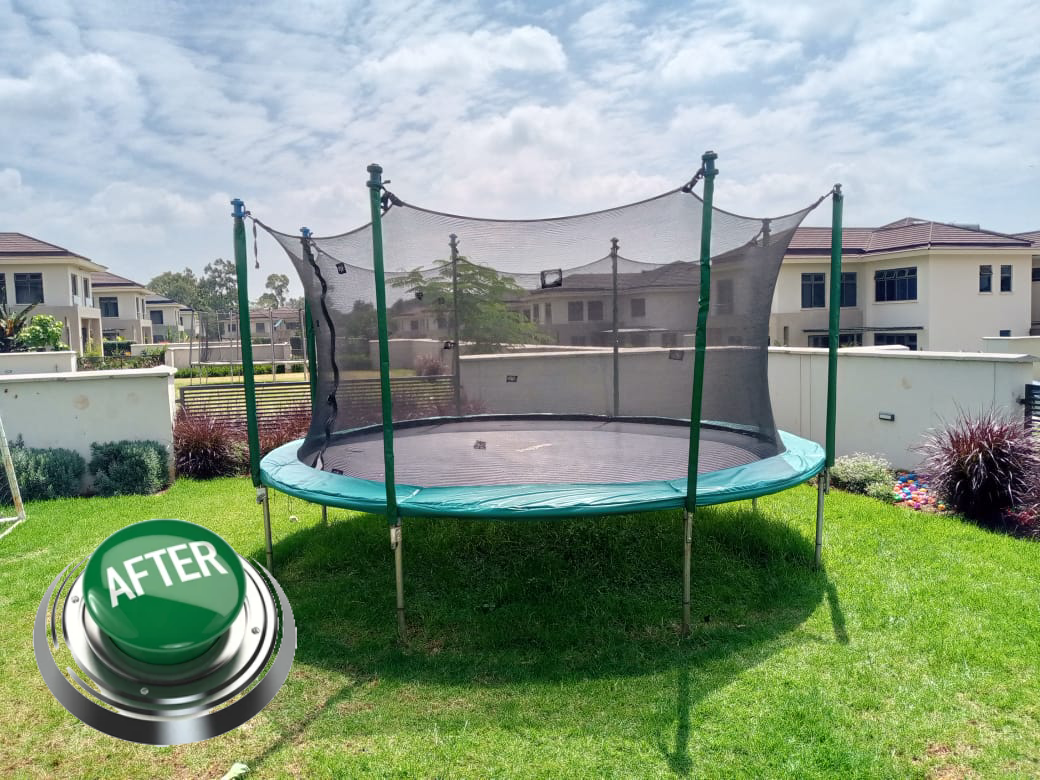
The Sale of Trampolines in Thika Kenya
Are you looking for a good company that thrives in the sale of trampolines in Thika Kenya? Well, at Frugal Innovations, we believe in bringing fun, fitness, and a sense of community to Thika. Our range of high-quality trampolines is designed to provide an exceptional experience for individuals and institutions alike. If you’re in Thika, […]
Read More →The Sale of Trampolines in Kajiado Kenya
At Frugal Innovation, we are thrilled to bring joy and fun to families in Kajiado, Kenya, with our top-notch trampolines. As a community-focused company, we understand the importance of providing affordable recreational options for children and adults alike. Our commitment to offering the best sale of trampolines in Kajiado, Kenya, is driven by our desire […]
Read More →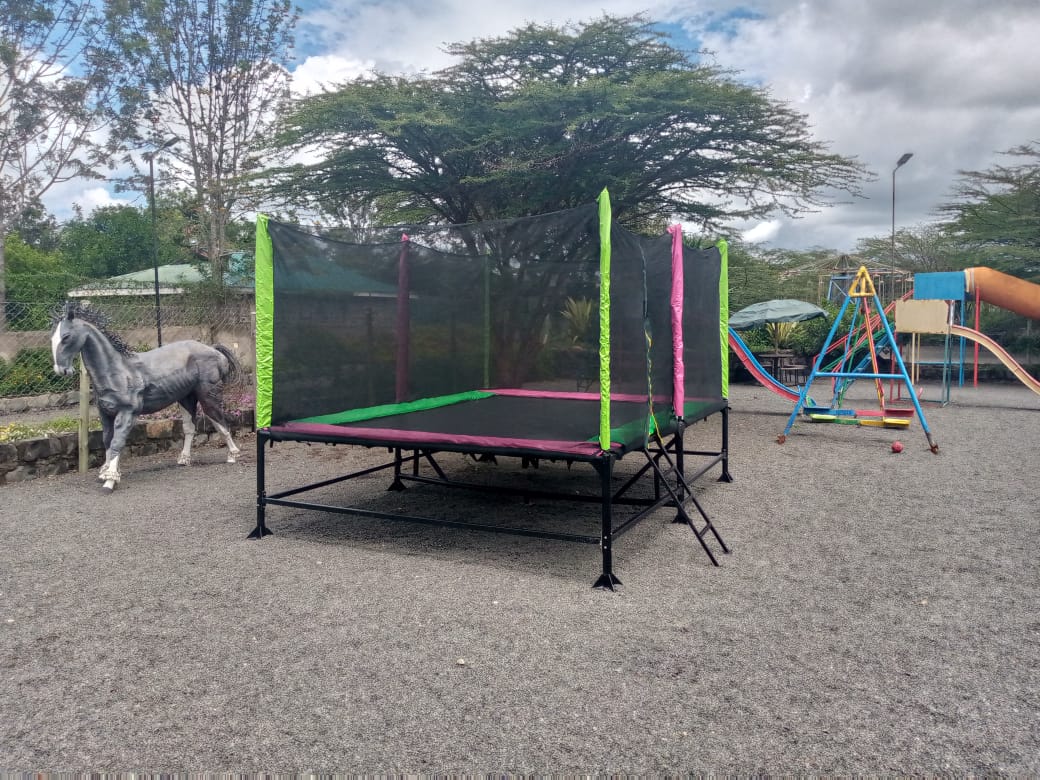
Heavy-Duty Trampolines Suppliers in Nairobi, Kenya
Frugal Innovations is a leading heavy-duty trampolines suppliers in Nairobi, Kenya. Known for its commitment to quality and innovation, Frugal Innovations caters to a diverse clientele, including fitness enthusiasts, sports facilities, and recreational centers. We offer a range of heavy-duty trampolines designed to meet various needs, ensuring durability, safety, and performance +254 722 724893 info@thriftyent.com […]
Read More →Trampolines for Sale in Kisumu, Kenya
Are you looking for a trampoline for sale in Kisumu, Kenya? Nestled along the shores of Lake Victoria, Kisumu offers a vibrant market for trampolines. Whether you’re looking to purchase or repair a trampoline, our website and Facebook page showcase a variety of options tailored to your needs. Contact Us to learn more about trampolines […]
Read More →
The Trampoline Dealer with a Difference in Kenya
Frugal Innovations is a trampoline dealer in Kenya that stands out as the pioneer in providing quality recreational equipment at accessible prices. Nestled in the heart of Nairobi, we have carved a niche for ourselves as more than just trampoline dealers; we are a beacon of frugality and innovation in the local business landscape. Contact […]
Read More →
Trampoline Ladder Types in Kenya
A trampoline ladder is an accessory designed to provide safe and easy access to a trampoline, especially for children and shorter individuals. It typically attaches securely to the trampoline frame, allowing users to climb up and down without difficulty. There are various types of trampoline ladders available, each designed to suit different needs and preferences. […]
Read More →
The Go-To Trampoline Service Center in Kenya
Trampolines provide endless hours of fun and exercise for families and fitness enthusiasts. However, like any recreational equipment, they require maintenance, occasional repairs, and, eventually, replacement. If you’re wondering whether trampolines can be repaired, what can damage them, and if they need regular upkeep, this article will guide you through these aspects and highlight why […]
Read More →
Supply of Trampoline Accessories in Nakuru, Kenya
As trampolines continue to gain popularity for recreational and fitness purposes, the demand for a high-quality supply of trampoline accessories in Nakuru is rising. These accessories are essential for ensuring safety, enhancing performance, and extending the longevity of the trampolines. In Nakuru, Kenya, Frugal Innovations has emerged as the leading distributor of trampoline accessories, offering […]
Read More →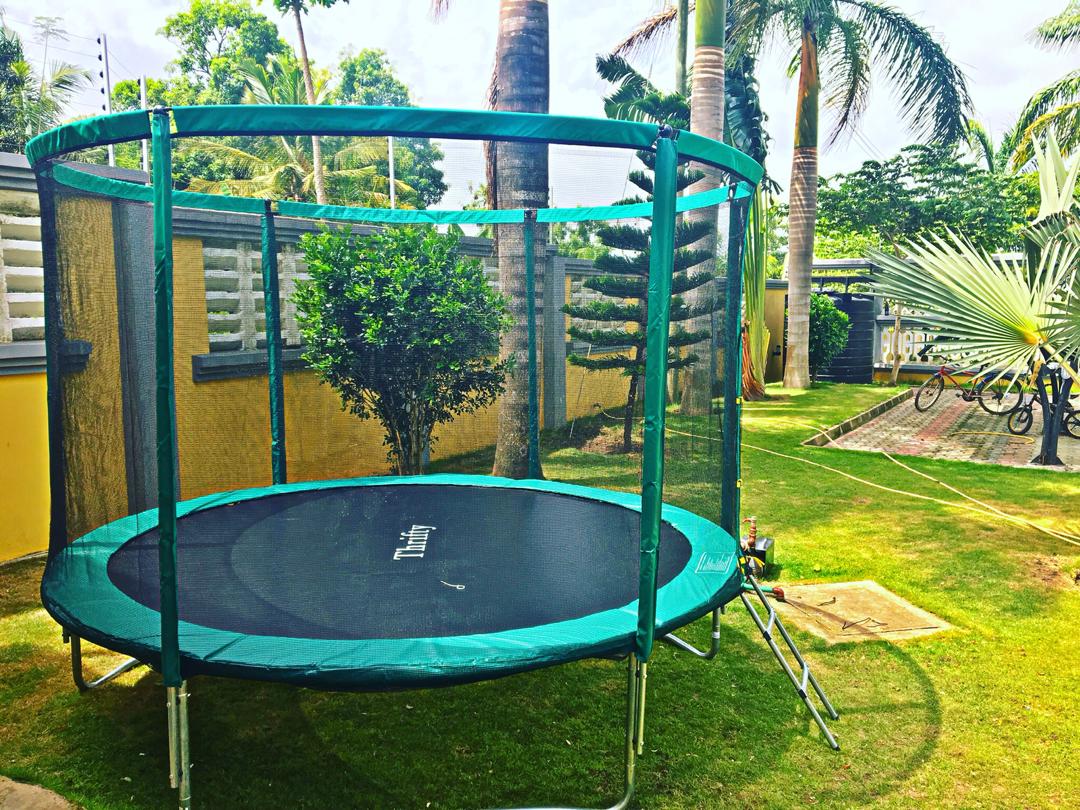
The Leading Trampoline Dealer in Kenya
Frugal Innovations Kenya stands out as a beacon of quality and innovation for trampoline dealerships in Kenya. Renowned for its commitment to providing top-notch trampolines, the company has become the go-to destination for families, schools, and fitness enthusiasts across the country. This article delves into what makes Frugal Innovations Kenya the leading trampoline dealer in […]
Read More →
Sale of Trampoline Parts and Accessories in Kenya
The trampoline market in Kenya is experiencing rapid growth, driven by an increasing interest in fitness, recreational activities, and outdoor entertainment. This surge in demand has created a substantial need for the sale of trampoline parts and accessories. Whether for maintenance, upgrades, or enhancements, these components are essential for ensuring safety, durability, and enjoyment. This […]
Read More →Heavy Duty Commercial Trampolines in Kenya
If you’re looking to invest in recreational equipment that guarantees both safety and durability, heavy duty commercial trampolines Kenya are the way to go. Designed to withstand rigorous use and varying weather conditions, these trampolines are perfect for commercial use, whether in schools, parks, or entertainment centers. For Heavy duty commercial trampolines ( Commercial Trampolines […]
Read More →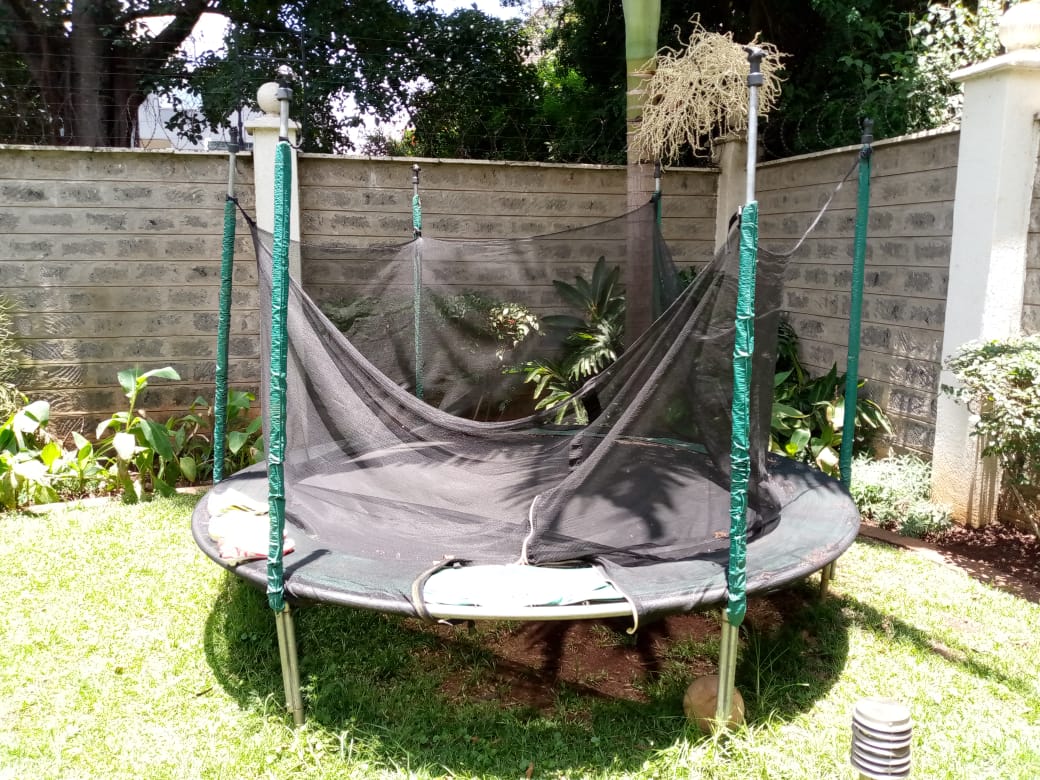
6 Best Tips for Trampoline Repairs in Kenya
Undertaking trampoline repairs in Kenya, particularly the trampoline net repair involves steps to ensure it’s safe and secure for continued use. Here’s a guide to help you through the process: Contact Us for Trampoline Repairs in Kenya 0722 724893 info@thriftyent.com thriftyent.com Materials Needed for trampoline repairs in Nairobi Kenya Replacement Netting: If the damage is […]
Read More →Heavy Duty Trampolines in Kenya
In outdoor entertainment, nothing quite matches the sheer joy and boundless energy of bouncing on high-quality heavy duty trampolines in Nairobi Kenya. Whether it’s for recreational purposes, fitness endeavors, or simply a fun activity for the family, heavy duty trampolines in Kenya have become a staple in backyards and playgrounds across the globe. Heavy duty […]
Read More →
Frugal Sells Trampolines in Nakuru Kenya
Looking to add a dash of excitement to your life in Nakuru, Kenya? Welcome to Frugal Innovations, where we specialize in bringing joy and adventure right to your doorstep with our premium selection of trampolines. Whether you’re searching for an indoor trampoline in Nakuru, Kenya, or an outdoor trampoline in Nakuru, Kenya, we’ve got you […]
Read More →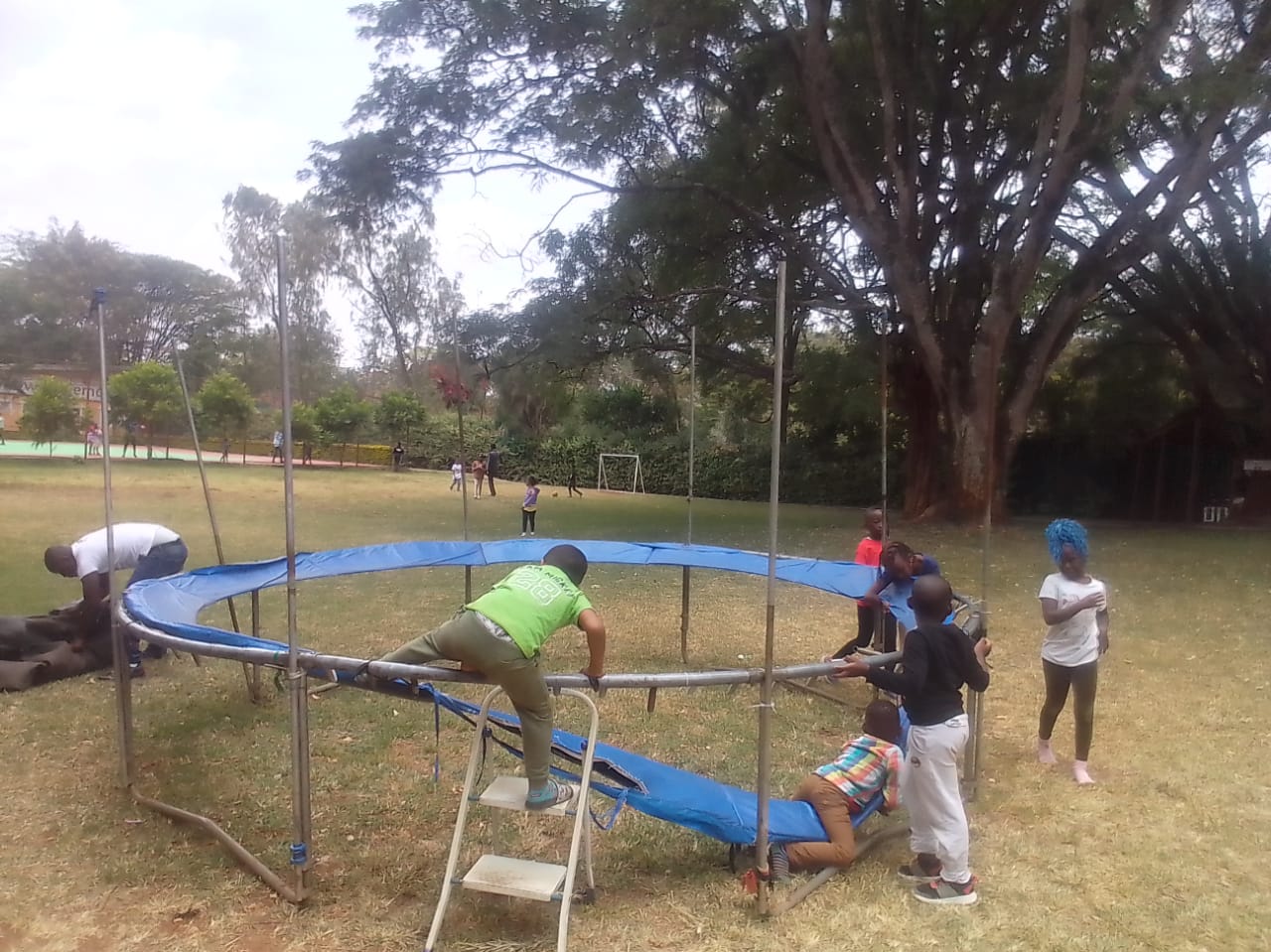
Maintaining Your Trampoline in Kenya
Maintaining your Trampoline in Kenya Nairobi is not just about preserving the equipment; it’s about safeguarding the well-being of those who use it. Beyond extending its lifespan, regular upkeep ensures optimal safety and performance, minimizing the risk of accidents and injuries. From inspecting the frame for rust to checking the mat for tears, proactive maintenance […]
Read More →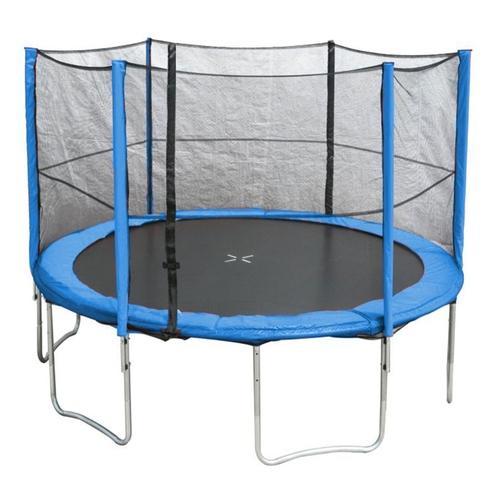
The Best Trampoline Suppliers in Nairobi Kenya
When it comes to finding genuine trampoline suppliers in Nairobi, Kenya, reliability is paramount. Whether you’re a recreational enthusiast or a business owner looking to stock quality trampolines, having a trusted supplier is essential. In the bustling city of Nairobi, Kenya’s capital, the demand for high-quality trampolines is met by Frugal Innovations, a leading name […]
Read More →
Trampoline Pad Replacemet in Kenya
Trampolines offer boundless fun and exhilarating experiences for both children and adults alike. However, amidst the joy of bouncing, safety remains paramount. At the heart of trampoline safety lies a crucial component: the trampoline pad. Serving as a protective barrier between jumpers and the sturdy frame and springs, trampoline pads play a vital role in […]
Read More →
The Role of Trampoline Springs
Have you ever taken the time to ponder over the role of trampoline springs for Kenyan trampoline owners ? Trampoline springs play a crucial role in the functionality and performance of trampolines, serving as the backbone of the bouncing mechanism. These resilient metal coils enable the characteristic bounce and rebound that make trampolines a beloved […]
Read More →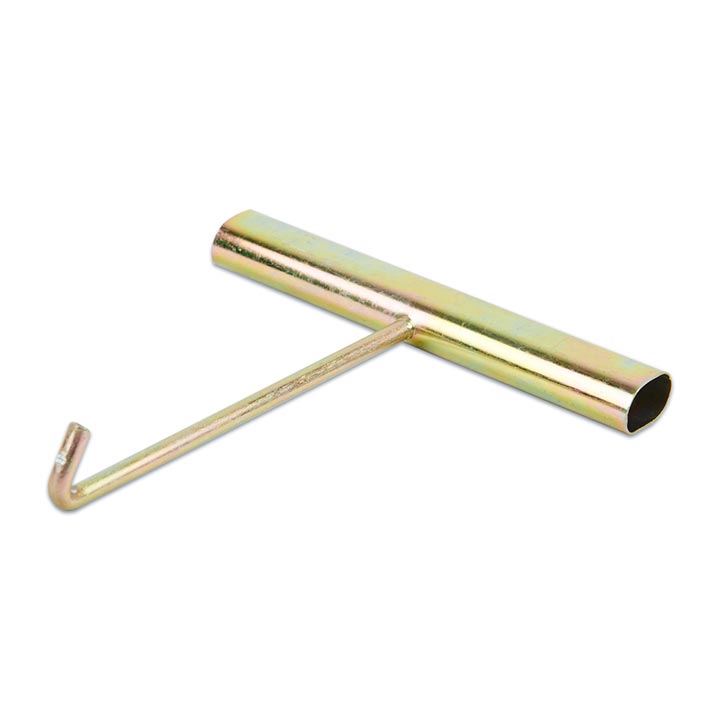
Importance of Trampoline Spring Hooks in Kenya
Trampoline spring hooks in Nairobi Kenya play a crucial role in the safety, performance, and longevity of trampolines. Contact us for trampoline repairs in Kenya, and trampoline maintenance in Nairobi. You can also, buy a brand-new trampoline right here +254 722 724893 info@thriftyent.com thriftyent.com Here are several reasons why they are important Trampoline Spring Hooks […]
Read More →
Trampoline Suppliers in Kenya and the Youth
Trampolines have gained popularity worldwide as a recreational activity for people of all ages, including youth. Locally the trampoline suppliers in Kenya can have several impacts on the youth. Here is how ; Contact Us for Trampoline Repairs Services 0722 724893 info@thriftyent.com thriftyent.com Frugal Innovations is the best trampoline service center in Kenya Trampoline Suppliers […]
Read More →
Trampoline Wholesalers in Kenya
Are you in search of the most trusted trampoline wholesalers in Kenya? Look no further than Frugal Innovations. Frugal Innovations stands as the epitome of reliability and authenticity in the trampoline industry in Kenya. Serving key cities such as Nairobi, Mombasa, Nakuru, Kisumu, and Eldoret, we have cemented our position as the leading trampoline supplier […]
Read More →
Kenya’s Best Trampoline Repair Experts
Frugal Innovations, Kenya’s Best Trampoline Repair Experts stands tall as Kenya’s leading trampoline repair company, dedicated to delivering unparalleled excellence, trustworthiness, and reliability in trampoline care and maintenance. Specializing in trampoline mat replacement, trampoline spring replacement, trampoline net replacement, trampoline pad replacement, and comprehensive servicing, Frugal Innovations is your ultimate destination for all things trampoline-related. […]
Read More →
Trampoline Maintenance Experts in Kenya!
Hey there, trampoline owners in Kenya! Are you tired of dealing with the hassle of keeping your trampoline in top-notch condition? Look no further – Frugal Innovations, Trampoline Maintenance Experts in Kenya! is here to take care of all your trampoline maintenance needs! Contact Us : 0722 724893 info@thriftyent.com thriftyent.com Why Choose Us? At Frugal […]
Read More →
Trampoline Mat Replacement in Kenya
In Kenya, where outdoor activities are embraced and families seek ways to enjoy quality time together, Nairobi trampolines have become a staple in many households. However, as with any equipment subjected to regular use, trampoline mats are prone to wear and tear over time. When it comes to ensuring safety and longevity, Frugal Innovations Kenya […]
Read More →
The Best Trampoline Service Center in Kenya
Looking for the best trampoline service center in Kenya? Well, in Nairobi Kenya, where innovation meets recreation, Frugal Innovations Kenya has emerged as the go-to destination for trampoline enthusiasts seeking top-notch products and services. With a commitment to quality, safety, and unparalleled customer satisfaction, Frugal Innovations Kenya has elevated the trampoline experience, setting new standards […]
Read More →
Repair Your Trampoline in Nairobi Kenya
Nairobi, with its vibrant energy and active lifestyle, has embraced trampolines as a popular recreational activity for both young and old. However, the joyous bouncing experiences are often accompanied by a common woe – the wear and tear of trampolines in Nairobi. In this article, we delve into the reasons you need to repair your […]
Read More →
Trampoline Service Center in Nairobi
Welcome to the Trampoline Service Center in Nairobi, Kenya, operated by Frugal Innovations. As the leading destination for trampoline repair and maintenance in Kenya, we take pride in our commitment to quality and frugal innovations, ensuring your trampoline receives the care it deserves. Follow this Link to Buy Trampoline Parts in Nairobi Kenya Trampolines are […]
Read More →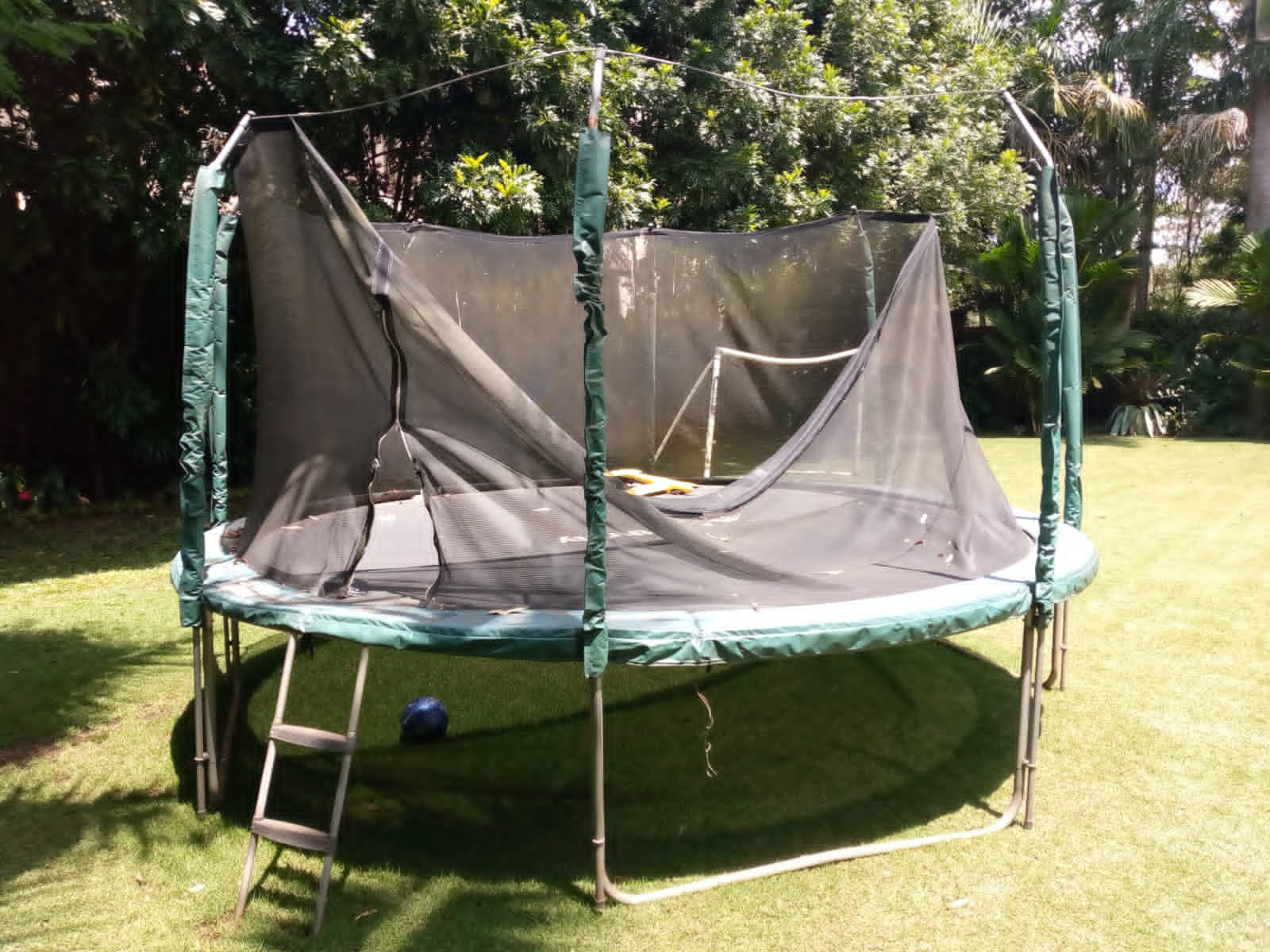
Trampoline Repairs Near Me, Nairobi Kenya
Do you happen to own a trampoline in Nairobi Kenya? If the answer is yes, then you’re likely a discerning investor. Maybe you are wondering, how do I get trampoline repairs near me Nairobi Kenya? Well, Frugal Innovation offers Trampoline Maintenance Services in Nairobi, Kenya Now, let’s assess the current condition of your trampoline in […]
Read More →
Trampoline Parts Service Nairobi Kenya
Explore the world of trampolines with our renowned trampoline parts service Nairobi Kenya, catering to Nairobi and beyond. Our expertise extends to areas such as Lavington, Karen, Kerarapon, Runda, Loresho, Rosslyn, Kiambu, Membley, Ruiru, Tigoni, Kitisuru, Peponi, Westlands, Parklands, and many more. We specialize in the sale and installation of trampolines in Nairobi Kenya , […]
Read More →
Trampoline spring maintenance in Nairobi Kenya
Trampoline spring maintenance in Nairobi Kenya is crucial for ensuring the safety and longevity of your trampoline. Springs play a vital role in providing the bounce and support needed for a fun and safe jumping experience. Regular inspection and care of trampoline springs can prevent accidents, and injuries, and extend the life of your equipment. […]
Read More →
Trampoline Care and Maintenance Nairobi Kenya
Trampoline care and maintenance in Nairobi Kenya are crucial for ensuring the longevity of your trampoline. But what specific aspects should you focus on? We shall share Trampoline safety guidelines and maintenance routines that, when performed annually, will keep your trampoline in optimal condition! Assess the Jumping Mat’s Condition The jumping mat undergoes intense use […]
Read More →
Trampoline Mantenance in Kenya
Trampoline maintenance in Nairobi Kenya is essential to ensure its longevity, safety, and optimal performance. In Nairobi, Kenya, where weather conditions can vary, it’s crucial to adapt your trampoline repair and maintenance routine accordingly. Here’s a seasonal trampoline maintenance checklist for your Trampoline Care Services Kenya Regular Inspections Check the trampoline frame, legs, and springs for […]
Read More →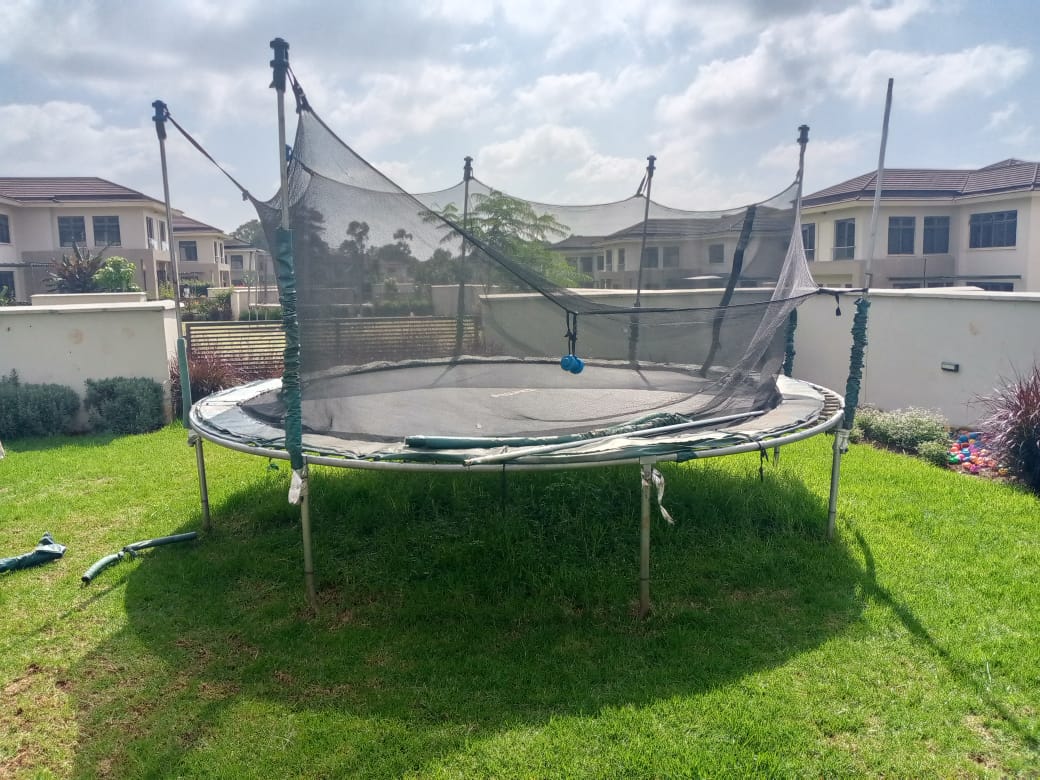
Trampoline Repairs, Accessories, and Components for Replacement in Nairobi, Kenya
Trampolines have become the go-to choice for fun and exercise among both children and adults in Kenya and Tanzania. However, with frequent use, these recreational items may experience wear and tear, necessitating trampoline repairs i.e. the replacement of crucial components. Frugal Innovations offers a comprehensive selection of trampoline parts and accessories to ensure the continued […]
Read More →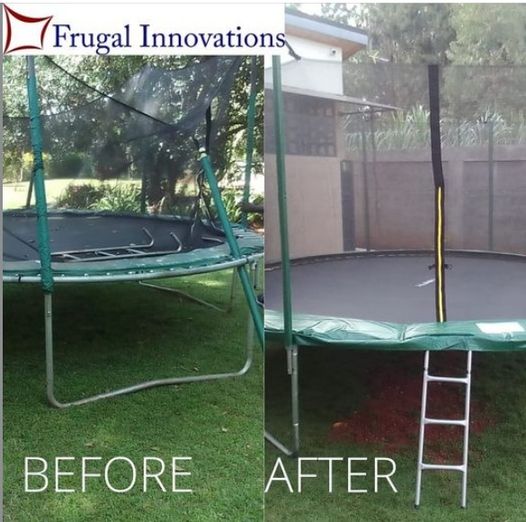
Quality Trampoline Repairs In Nairobi Kenya
Are you a proud owner of a trampoline in Nairobi Kenya, or Mombasa or Nakuru, or any other place in the country? If so, you’ve made a wise investment in your family’s entertainment. However, it’s essential to assess the current state of your trampoline for safety.Frugal Innovations, Thrifty Enterprises Ltd, the market leader in Kenya, […]
Read More →
Garden Trampolines
Garden trampolines are a popular choice for both recreational and competitive purposes. They offer an affordable way for children to enjoy aerobic activity and develop their gymnastic skills. However, it’s important to prioritize safety as trampoline-related injuries have become a concern for hospital Emergency Departments. When using garden trampolines, it is important to keep these […]
Read More →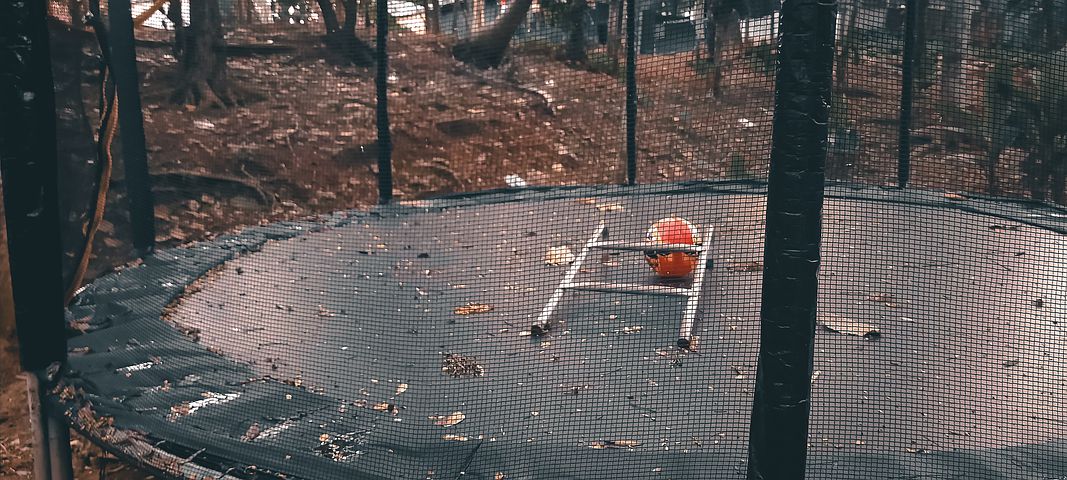
Tools to Assemble aTrampoline in Nairobi Kenya
Tools to assemble a trampoline in Nairobi Kenya are various but you will typically need the following Screwdriver (Phillips or flathead): Used for tightening screws or bolts. Adjustable wrench: Useful for tightening nuts and bolts. Rubber mallet: Used to secure joints and fittings without damaging them. Spring tool: Helps attach the springs to the trampoline […]
Read More →
Physics of Trampoline Bounce in Nairobi Kenya
Have you ever given thought to the physics of trampoline bounce in Nairobi Kenya Bouncing on trampolines isn’t just a source of fun, it’s also a fascinating showcase of Newton’s Basic Laws of Motion. Delving into the physics behind trampoline jumps, we can observe how these fundamental laws come into play. These are crucial to […]
Read More →
Commercial Trampolines in Nairobi Kenya
Commercial Trampolines in Nairobi Kenya designed for school use come in various sizes and feature different thicknesses of bed webbing. The larger the trampoline and the narrower the bed webbing, the greater the potential for enhanced performance. The bed webbing options include 4mm or 6mm for higher performance, and 13mm or 25mm for standard performance. […]
Read More →
Maintain Your Trampoline in Nairobi Kenya Winter
As winter approaches in Nairobi, Kenya, it’s essential to ensure that your trampoline is well-maintained to withstand the unique challenges posed by the season. But how do you exactly, maintain your trampoline in Nairobi Kenya winter While Nairobi’s winter might not be as harsh as in some other regions, taking proactive measures can prolong the […]
Read More →
Trampoline Assembly Tips in Nairobi Kenya
When assembling the Thrifty Premium trampoline enclosure, you need the best trampoline assembly tips in Nairobi Kenya. It’s important to follow extra steps because of the top rims. For those with young children using the trampoline, it’s best to use the Thrifty enclosure as it’s designed for added safety. The Thrifty trampoline enclosure appears more […]
Read More →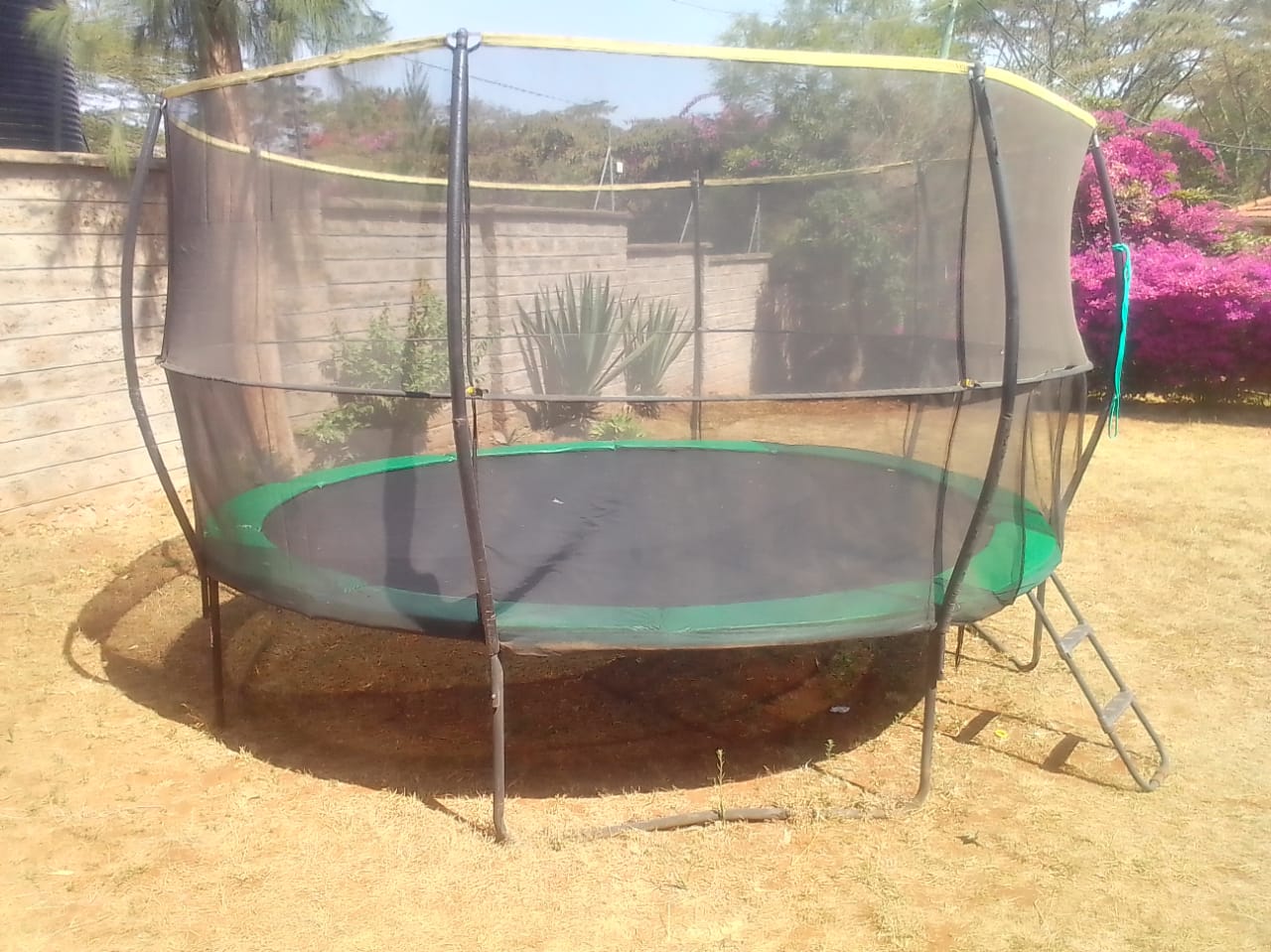
Setting Up and Assembling a Trampoline Enclosure in Nairobi
Assembling a Trampoline Enclosure in Nairobi can pose a challenge when you are not well guided. The Thrifty trampoline in Nairobi is a fantastic toy for kids of all ages. However, to ensure your children can bounce safely, it’s important to consider adding a trampoline enclosure. Whether you already own a Nairobi trampoline or are […]
Read More →
Maintenance of a trampoline enclosure in Nairobi Kenya
Frugal Innovation, a pioneering company in Nairobi, Kenya, is redefining the concept of trampoline enclosure maintenance with its innovative and cost-effective solutions. The maintenance of a trampoline enclosure in Nairobi Kenya is a crucial aspect to ensure the safety and longevity of these recreational structures. Frugal Innovation understands the unique challenges faced by trampoline owners […]
Read More →
Moving Your trampoline in Nairobi Kenya
Lifting a trampoline requires proper technique and coordination to ensure the safety of everyone involved. This is especially true if you are moving your trampoline in Nairobi Kenya Here are the steps to lift and move a trampoline correctly: Assess the weight: Before attempting to lift the trampoline, evaluate its weight and ensure that you […]
Read More →
A Guide on Trampoline Care and Maintenance in Kenya
. We believe you love your Thrifty trampoline Nairobi Kenya as much as we do. That’s why we’ve created this guide on trampoline care and maintenance to assist you in properly caring for it, ensuring it serves you well for many years. If you want to take good care of your Thrifty trampoline, it’s important […]
Read More →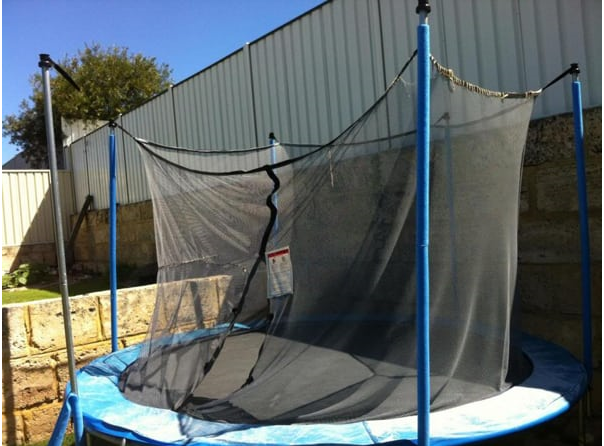
How long do Nairobi Trampolines Last?
A trampoline is an investment in your family’s fun, now and in the future. If you are considering buying a Nairobi Kenya trampoline, you may be wondering, so, how long do Nairobi trampolines last? This article explores the lifespan of trampolines and provides tips on extending their longevity. Follow This Link To Buy Trampoline Parts in Nairobi Kenya […]
Read More →
Essential gadgets for trampoline longevity
Trampoline care, trampoline maintenance, and trampoline repairs are all critical for equipment longevity. To ensure the durability of your trampoline, consider using various gadgets. Although most trampolines are built to withstand various weather conditions, having additional gadgets can provide extra protection. Contact us for trampoline repairs, trampoline care, and trampoline maintenance 0722 724893 info@thriftyent.com thriftyent.com […]
Read More →
Trampoline Pad Maintenance in Kenya
Trampoline pad maintenance in Kenya is critical because trampoline pads cover the joints and springs that connect the metallic parts, providing extra user safety. By blocking the gaps between springs, the children and other bouncers will be safe from accidents. However, most trampoline owners in Nairobi Kenya overlook these foam, water-resistant covers while performing routine […]
Read More →
Grease the Trampoline Springs to Eliminate Squeaking
When you hear lots of squeaky noises from your trampoline, know it is time to grease the trampoline springs to eliminate squeaking. It also means urgent trampoline repairs are required to elongate its use. Furthermore, any delays create a dangerous situation for the users. So, why does a trampoline squeak in the first place? Metallic […]
Read More →
5 signs your trampoline needs maintenance in Kenya
Although trampolines are constructed to be sturdy and durable, occasional trampoline maintenance and care is required. By keeping up with trampoline repairs and replacing parts as necessary, you can extend the lifespan of your trampoline. Moreover, proper trampoline maintenance in Kenya can save you money in the long run. Therefore, it is essential to learn […]
Read More →
Parts of a Trampoline in Kenya
When you’re engrossed in the sheer delight of bouncing on a trampoline in Nairobi Kenya , it’s easy to forget about the materials that make it possible. But have you ever pondered what trampolines are constructed from and which particular parts contribute to that exhilarating bounce you adore? Lets explore the main parts of a […]
Read More →
Why Trampoline Springs Break
Do you have fond memories of bouncing on a trampoline in Kenya for hours as a child? Maybe you’ve set up one in your backyard to entertain your kids. Trampolines are known for being an endless source of fun while providing exercise benefits. Nevertheless, to ensure safety and optimal performance, it’s important to grasp how […]
Read More →
Trampoline Longevity
How much do you know about trampoline longevity? Trampolines are not just fun backyard accessories but also an investment that requires proper care to ensure longevity. As time passes, trampolines may lose their sturdiness and flexibility. Therefore, it is crucial to maintain them properly. In this guide, we will explore the average lifespan of a […]
Read More →
Tips for Repairing a Trampoline Zipper in Kenya
When a trampoline zipper isn’t working properly, it can be caused by various issues. Two possible causes are a damaged trampoline zipper lock or a damaged enclosure zip that cannot be fixed. In these scenarios, repairing a trampoline zipper may be necessary. However, the most straightforward explanation for a malfunctioning trampoline zipper is that it’s […]
Read More →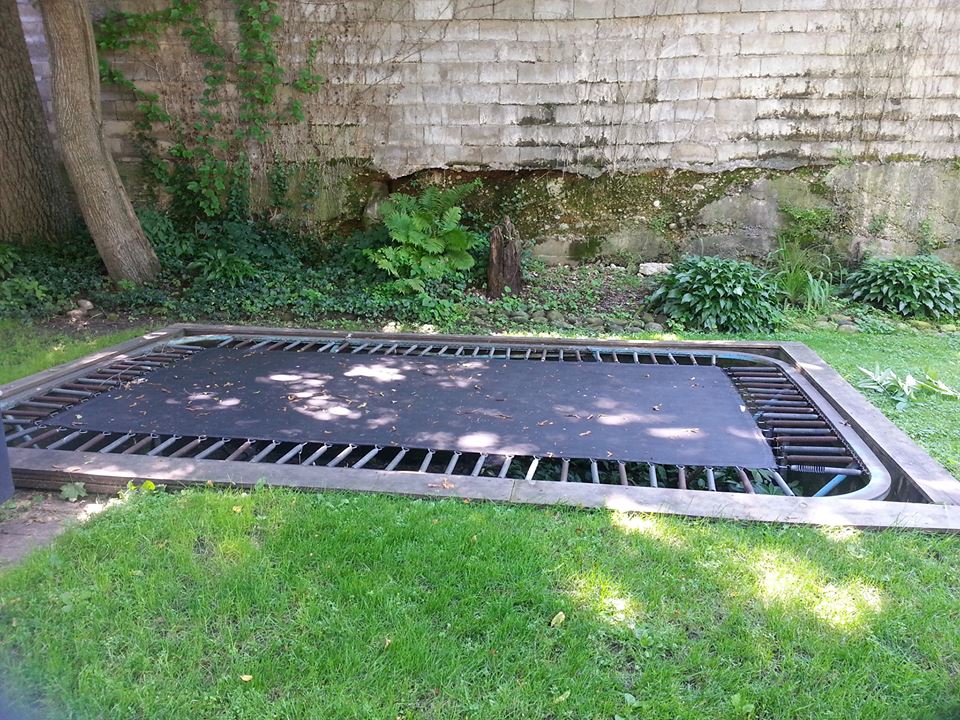
Fixing Trampoline Mat holes by Yourself
Owning a trampoline in your backyard is an excellent way to enjoy some indoor exercise and have fun. Nevertheless, with frequent use, wear and tear problems can arise, especially on the trampoline’s springs, mat, and legs. Among these issues, mat holes are the most common type of damage, and depending on their severity, repairs may […]
Read More →
How to Fix a Trampoline Mat Hole
Ever thought of ways to fix a trampoline mat hole by yourself using a sewing machine? Fixing a large hole in a trampoline mat can be challenging, especially when finding good replacement patches is difficult. However, you can still repair these holes without replacing the whole mat using a sewing machine. Call Us for trampoline […]
Read More →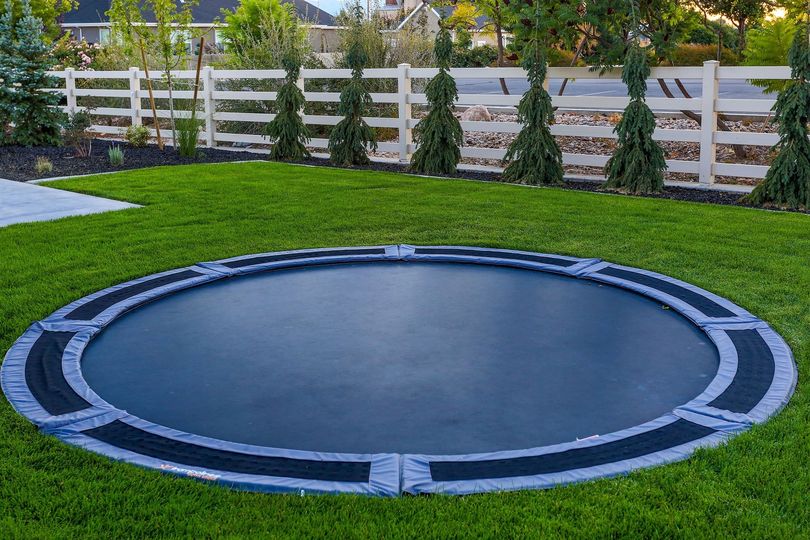
Pros and Cons of an In-ground Trampoline in Kenya
In-ground trampolines are popular due to their numerous advantages over traditional above-ground models. However, before making a purchase, it’s essential to be aware of some common problems associated with in-ground trampolines. This article will discuss 5 in-ground trampoline problems (pros and cons) that you should consider. Ensuring Proper Ventilation: One of the most important issues […]
Read More →
How to disassemble a Trampoline for storage
What is the best idea on how to disassemble a Trampoline? Storing a trampoline is important to prevent damage caused by extreme temperatures and moisture. Disassembling the trampoline is the first step. To do this, you will need a Phillips head screwdriver, a damp towel, a dry towel, a small box for the springs, and […]
Read More →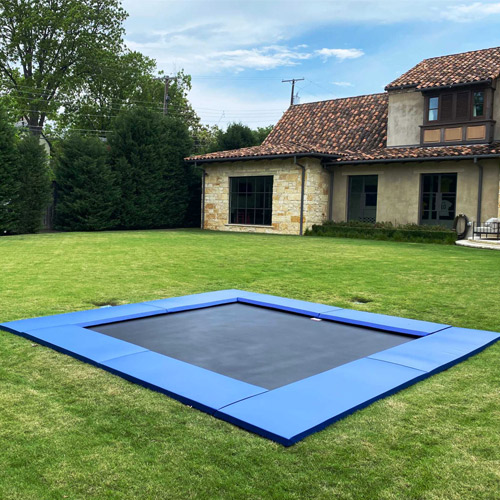
Cleaning an In-Ground Trampoline in Kenya
Do you have details about cleaning an in-ground trampoline properly? If you have an in-ground trampoline in Nairobi Kenya, it’s important to keep it clean and free of any debris, which can compromise its safety and durability. In this article, we’ll share some tips on how to properly clean your in-ground trampoline. Call Us for […]
Read More →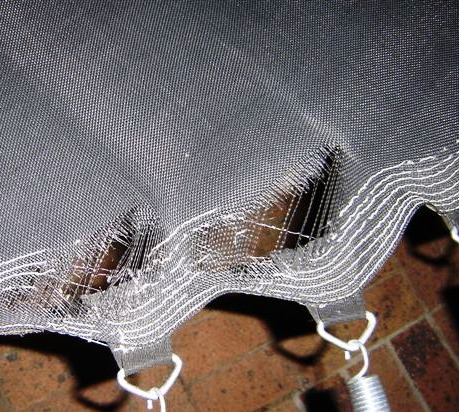
Trampoline Mat Maintenance in Kenya
Kenyan Trampolines can provide a lot of fun and exercise for people of all ages, but it’s important to maintain them properly to ensure safety and longevity. Here are ten trampoline mat maintenance tips to keep your trampoline in Kenya in good condition +254 722 724893 info@thriftyent.com thriftyent.com Bring your mat inside during the […]
Read More →
Procedure for Assembling a Trampoline in Kenya
Trampolines are gaining popularity in Kenya for both commercial and domestic use. This then increases the demand for people to learn the procedure for assembling a trampoline. Below is a six-step by step procedure for assembling a trampoline at home. In case you missed the article on how to disassemble a trampoline at home, click […]
Read More →
Frequency of trampoline care and maintenance
The frequency of trampoline care and maintenance depends on various factors such as usage, weather conditions, and the quality of the trampoline materials. Here’s a general guideline for the frequency of trampoline care and maintenance Regular Inspections Perform visual inspections of the trampoline frame, springs, mat, and safety enclosure regularly, ideally every month or so. […]
Read More →
Importance of Replacing Trampoline Parts in Nairobi, Kenya.
Does your trampoline look like the above picture? It simply means that it’s time to consider replacing trampoline parts. Trampolines can be dangerous if they are not properly maintained. Just as we habitually check the brakes on our children’s bikes, we also should take care of our trampoline, ensuring that it is always in good […]
Read More →
The Fun in Trampoline Cleaning
Parents know how difficult it can be getting their children to engage in Trampoline cleaning, leave alone do any form of chores. In this article, we will provide a few tips that will make cleaning the trampoline in Nairobi enjoyable for your children and leave them looking forward to it every single day. Contact 0722724893 […]
Read More →
Trampoline Parts and Accessories in Kenya.
Trampolines are outdoor equipment that are mostly used for recreation but are also very essential when it comes to exercising. When trampolines are well taken care of, they can last for a very long time. A trampoline has three main components; the frame, springs, and jumping mat without these trampoline parts and accessories, the trampoline […]
Read More →
Disassembling a Trampoline in Kenya
Trampolines are gaining popularity in Kenya, Tanzania and Uganda. More and more parents prefer to get a trampoline as a gift for their children given the health benefits associated with trampolining in East Africa. But the maintenance of these trampolines has become a significant requirement.
Read More →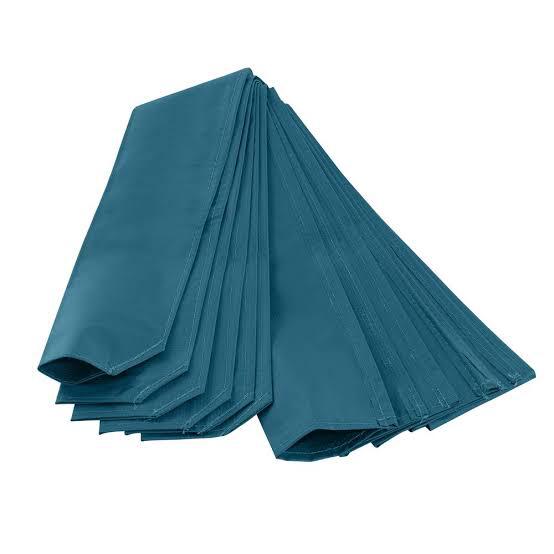
Importance of Trampoline Pole Foam Sleeves
Trampoline Pole Foam Sleeves are pads that cushion the trampoline steel poles. They are made of mildew-resistant, high-density foam and are quite instrumental for trampoline repairs in Kenya. You will also need them during trampoline care and maintenance in Nairobi and all other Kenyan cities Contact Us for the purchase of trampoline spare parts in […]
Read More →
Trampoline Maintenance Tips
Have you just purchased a trampoline and are wondering how to maintain it? Look no further than the following trampoline maintenance tips that will help you manage your trampoline. A well-maintained trampoline should serve you for a very long time and the following tips could help you achieve just that! Contact us via the following […]
Read More →
Trampoline Maintenance and Care
A trampoline is a huge investment, and however sturdy it is, if you do not properly care for it, you will lose it. Therefore, it is very important to care for and maintain your trampoline to enhance its longevity. Read on to find out 5 considerations to make for trampoline maintenance and care. For trampoline […]
Read More →
Pros of Trampoline Maintenanace in Kenya
Your trampoline could be the greatest investment for your children. The pros of trampoline maintenence in Kenya are profound .Getting a trampoline not only means buying it and setting it up, it also involves some trampoline maintenance that will help it last longer and you will also enjoy all the benefits the trampoline has to […]
Read More →
How to Maintain your Trampoline
Buying a good quality trampoline may be quite costly. To attain value for your money, the trampoline should be able to serve you for many years. This will only happen if the trampoline is well taken care of and necessary measures of protecting the trampoline are well adhered. Below, we will provide 3 steps on […]
Read More →
Making Trampoline Cleaning in Kenya Fun
Parents know how difficult it can be getting their children to clean, let alone do any form of chores. In this article, we will provide a few tips for making trampoline cleaning fun for your children and leave them looking forward to it every single day. Contact Us for trampoline purchases and trampoline repairs +254 […]
Read More →
Importance of Trampoline Parts
Trampolines are outdoor equipment that are mostly used for recreation but are also very essential when it comes to exercising. When trampolines are well taken care of, they can last for a very long time. A trampoline has three main components; the frame, springs, and jumping mat without these the trampoline cannot function. The other […]
Read More →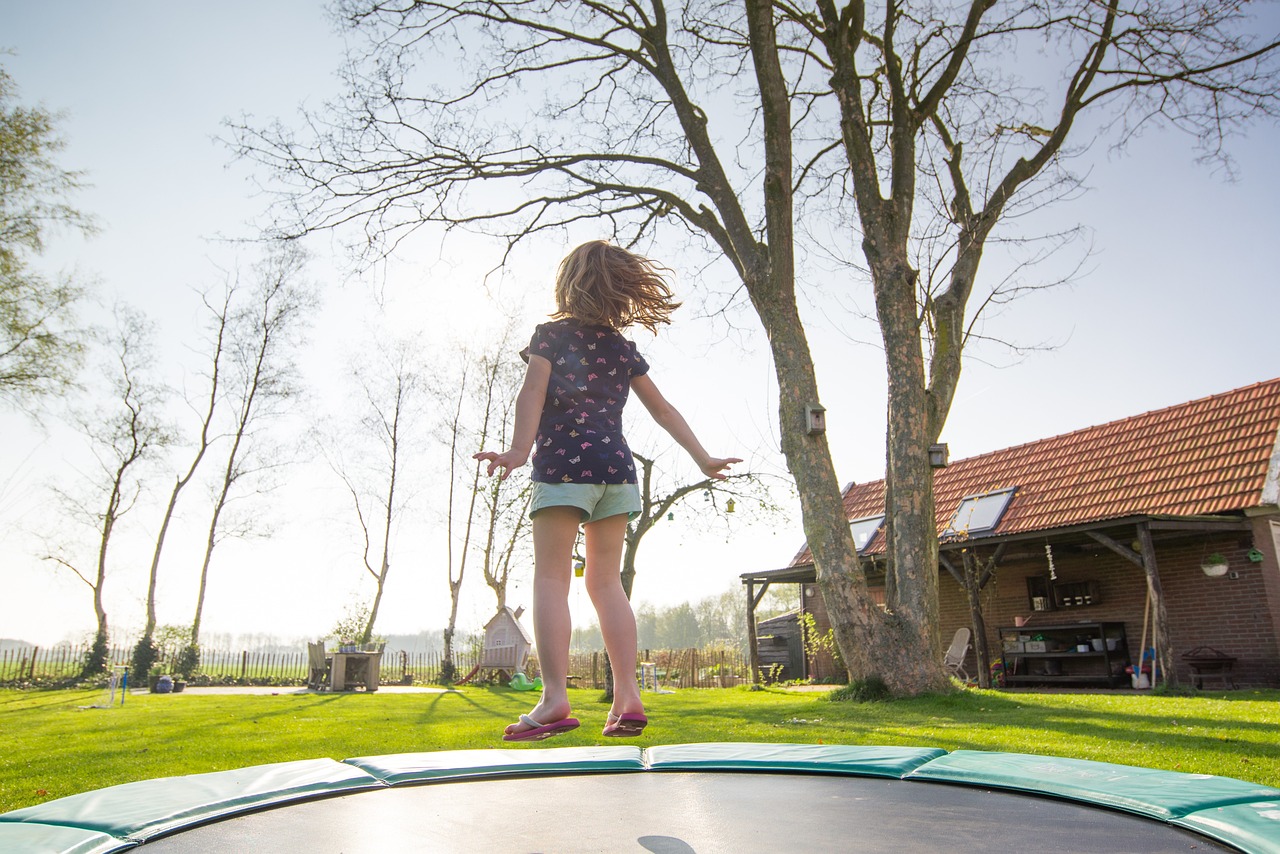
Rectangular vs Round Trampoline? What’s the difference?
Trampolines create the euphoric feeling of temporarily flying especially for kids, imagine having a trampoline in your backyard and giving your children this experience as often as they like! If you would like to purchase a trampoline, you have probably fallen into the rectangular vs round trampoline dilemma. The main differences between a round and […]
Read More →
How to Assemble a Trampoline
Trampolines are gaining popularity in Kenya for both commercial and domestic use. This then increases the demand for people to learn how to assemble a trampoline by themselves. Below is a step-by-step procedure for how to assemble a trampoline at home. Contact us for trampoline purchases in Kenya and trampoline repairs in Nairobi Kenya […]
Read More →SIX STEP PROCEDURE TO DISASSEMBLE A TRAMPOLINE IN KENYA
Trampolines are gaining popularity in Kenya. More and more parents prefer to get a trampoline as a gift for their children given the health benefits associated with trampolining in East Africa. But the maintenance of these trampolines has become a significant requirement. Do you know how to disassemble a trampoline in Kenya? In the case […]
Read More →
Trampoline Maintenance Best Practices
The sale of trampoline in Kenya is growing rapidly due to the increasing number of the middle-class population. The need to know the ABCs of trampoline maintenance and care is paramount to ensure the safety of trampoline users 0722 724893 info@thriftyent.com thriftyent.com Below are some useful tips on trampoline maintenance and how to care for […]
Read More →
Trampoline Parts and accessories in Kenya
Does your trampoline look like the above picture? It simply means that it’s time to consider buying some replacement parts. Trampolines can be dangerous if they are not properly maintained. Just as we habitually check the brakes on our children’s bikes, we also should take care of our trampoline, ensuring that it is always in […]
Read More →
Trampoline Parts Replacement Guide
Maintaining a trampoline is essential for ensuring safety and longevity. Over time, parts can wear out and need replacement to keep your trampoline in optimal condition. This guide provides a comprehensive overview of trampoline parts replacement, focusing on the essential components and how to measure your trampoline for new parts. For trampoline parts replacements […]
Read More →- Trampoline vs Sensory Play Mats: What’s Better for Children with Autism?
- Where to Find the Best Trampoline for Sale in Nairobi
- Trampolines at Weddings? How Kenyan Event Planners Are Thinking Outside the Box
- How Trampolining in Nairobi Encourages Cross-Generational Involvement
- Birthday Parties on a Trampoline? Here’s How to Do It Safely and Creatively


